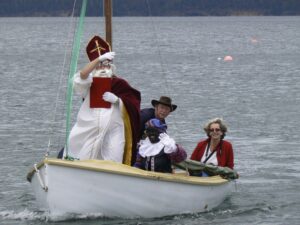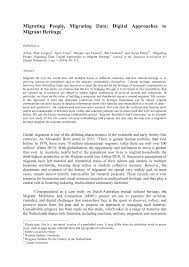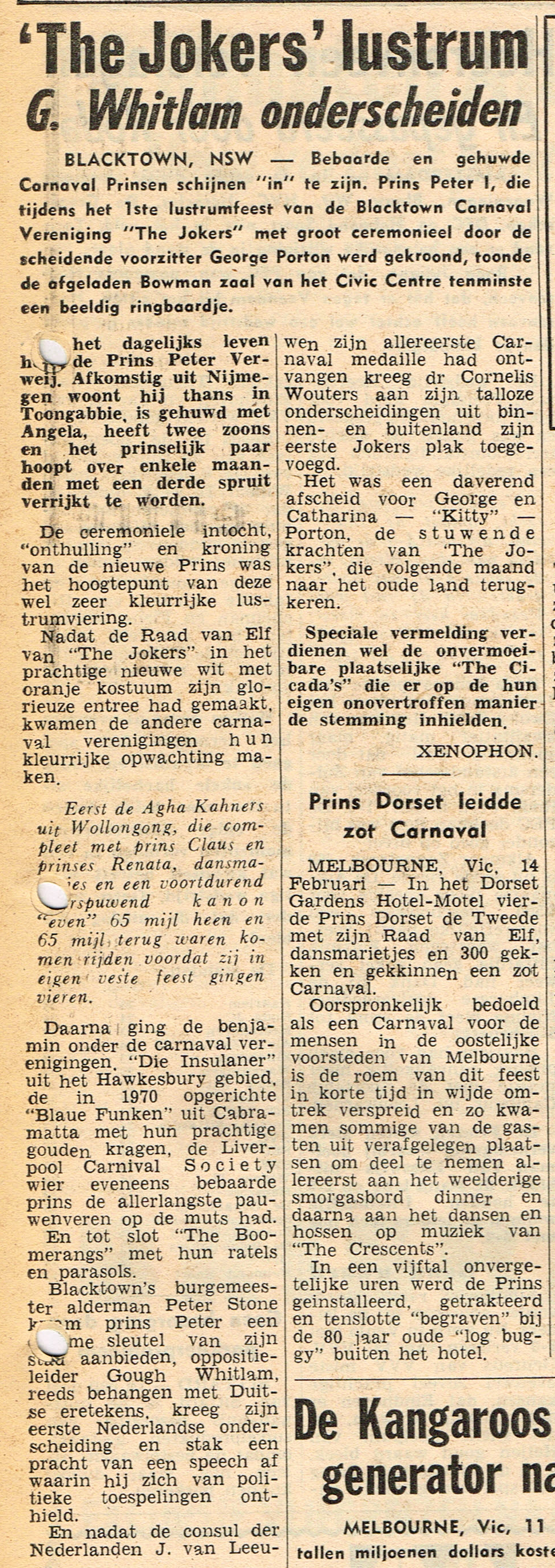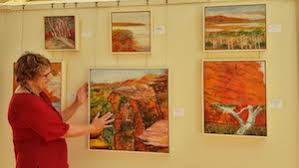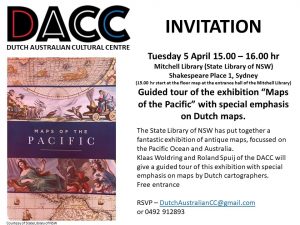The Dutch were 350 years in Indonesia, which achieved independence in 1949. In 1602 the Vereenigde Oost Indische Company( VOC ) was formed to start the spice trade which the Portuguese had maintained for 100 years already. It was the first multi-national company and the first company financed by shares, in the world.
The Dutch were the middlemen in that period who distributed the spices throughout Europe, from Lisbon. The 80-years war between the Netherlands and Spain (1568 – 1648) made the continuation of that role impossible and the Dutch then decided to venture out to the Indies themselves.
The VOC lasted until around 1800 when the Dutch Government took over the colonial administration until after WWII. The history of that Dutch involvement is contained in the story the Duyfken’s landing in 1606 on the West Coast of Cape York; Dirk Hartog’s landing in Shark Bay where he left the famous pewter plate in 1616; and the horrific story of the sinking of and the mutiny on the Batavia in 1629.
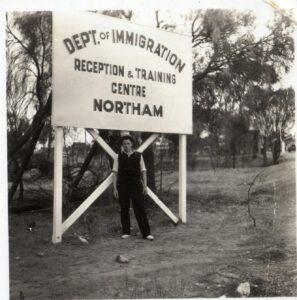
Jack Verschuren – Dutch Football Pioneer in Northam, Western Australia
Jack Verschuren arrived in Western Australia from the Netherlands in 1954, part of the post-war wave of Dutch migrants seeking new opportunities and a better life. Settling in Northam, a regional centre in the Wheatbelt, Jack quickly became a prominent figure in the local football scene during the 1950s and
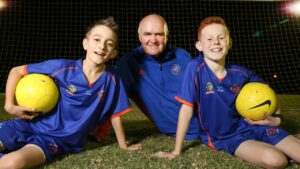
A legacy of football: the van der Veekens of Adelaide
The story of the van der Veeken family reflects the enduring contribution of Dutch migrants to Australian football, spanning two generations of commitment to the game in South Australia. Born in The Hague, Jan van der Veeken arrived in Australia in 1950 as a young child with his family. Upon
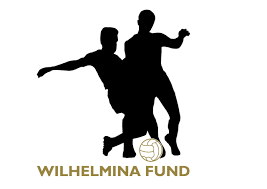
Wilhelmina Fund – A Dutch-Australian Legacy of Inclusion and Community Support
The Wilhelmina Fund, established by Ringwood City Soccer Club in 2019, is a standout example of how a proud Dutch-Australian football club continues to honour its heritage while supporting its local community. Ringwood City SC was founded by Dutch migrants in the post-World War II period—a time when many Dutch
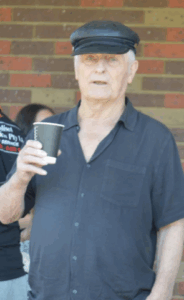
Tony te Wierik – a Fortuna ’60 founding figure in the Latrobe Valley
Tony te Wierik was one of the foundational players of Fortuna ’60 Soccer Club in Morwell, Victoria – known affectionately as the Orangemen, proudly reflecting their Dutch heritage and orange team colours. Tony arrived in Australia in the mid-1950s as part of a large Dutch family aboard the Johan van
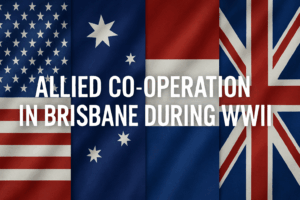
Symposium: Allied co-operation in Brisbane during WWII: Australia, USA, Netherlands, UK – 30–31 August 2025 at UQ- Bus Tour Brisbane WWII sites – 1 September
Buy Tickets – Early Birds before August 1 Only $25 per day, incl lunch. 2025 marks 80 years since the end of World War II in the Pacific—a defining moment in global history and in Brisbane’s legacy as a key Allied command centre. To commemorate this milestone, the Camp Columbia Heritage Association and the
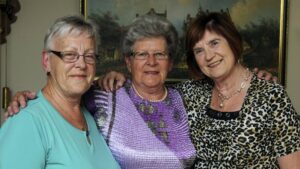
Dutch Australian Association (DAA) in Launceston
The Dutch Australian Association (DAA) was established in Launceston in 1956, at a time when Dutch migration to Tasmania was increasing significantly after the Second World War. The DAA served primarily as a social and cultural organisation, helping Dutch migrants settle into their new lives while maintaining connections to their
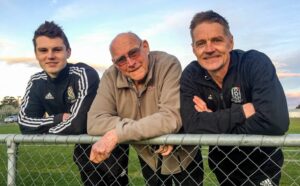
Pete Mies – Dutch football pioneer and community leader in Launceston
Peter Johannes Gerardus Mies, born in 1936 in Neerbeek in the province of Limburg, the Netherlands, was a remarkable figure in Tasmanian football and in the Dutch-Australian community. At the age of 14, Pete joined his father and brother working in the mines of Limburg, contributing to the family’s livelihood
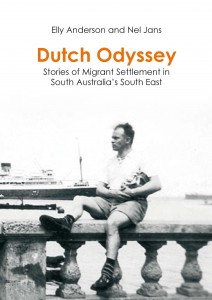
Dutch Odyssey: A Collective History of Migration to South East Australia
Dutch Odyssey is a collective history of Dutch migration, based on the experiences of families who settled in the South East of South Australia from the late 1940s onwards. The authors spent five years gathering stories from first and second generation migrants and expanded their research by consulting archives to
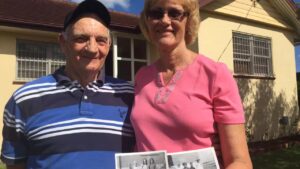
Fred van Breemen – A Founding Figure in Brisbane’s Dutch Football Legacy
Fred van Breemen stands as a testament to the enduring impact of Dutch migrants on Australian football and community life. Born in the Netherlands, Fred migrated to Australia in 1954 aboard the Johan van Oldenbarnevelt. His family settled in Coopers Plains, Brisbane, where his father contributed to the construction of
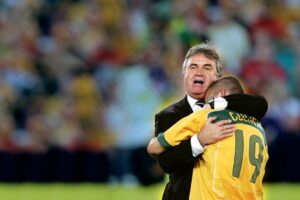
Dutch coaches who shaped the Socceroos and Matildas
Dutch coaches and technical leaders have significantly contributed to the development and success of Australia’s national football teams. Their expertise has been instrumental in guiding both the Socceroos and the Matildas through pivotal moments in their histories. Socceroos Matildas These Dutch professionals have left a lasting impact on Australian football
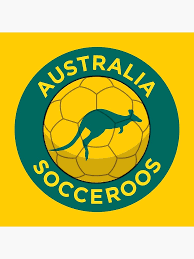
Dutch-Australian Socceroos – the players of Dutch heritage who represented Australia
Dutch migrants and their descendants have made an important contribution to Australian football, not only at club level but also in the national men’s team, the Socceroos. From the 1950s onwards, Dutch-Australians have helped shape the squad during key periods of its development. This article highlights those players of Dutch
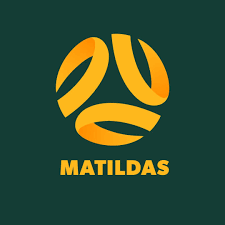
The Dutch influence in the Matildas – from early pioneers to modern stars
The Matildas, Australia’s national women’s football team, are celebrated not only for their sporting achievements but also for reflecting the diverse cultural tapestry of modern Australia. Among this diversity, Dutch migrants and their descendants have played a notable role in shaping the team’s history, from its formative years to its
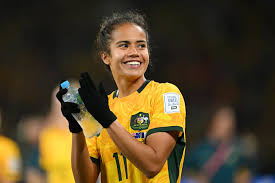
Mary Fowler – Dutch football influence on a Matildas star
At the age of 11, Mary and her family relocated from Cairns, Australia, to the Netherlands to support the football aspirations of Mary and her siblings. They settled in cities such as Rotterdam and Arnhem, immersing themselves in the Dutch football culture. During this period, Mary played for BVV Barendrecht,
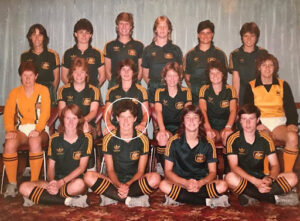
Mandi Langlar – second-generation Dutch-Australian footballer and the legacy of her father Pete
Mandi Langlar’s football journey reflects the contribution of Dutch migrants and their descendants to the development of Australian football, particularly on Sydney’s northern beaches. As a second-generation Dutch-Australian, Mandi carried forward a family passion for the game, achieving national honours at a time when women’s football was still fighting for
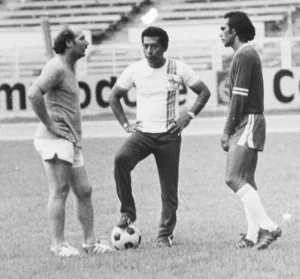
Frans van Balkom – from miner to Dutch-Australian football pioneer and global coach
Frans van Balkom was born on 23 October 1939 in Kerkrade, Netherlands, in the heart of the Limburg coal mining region. Like many from his community, Frans worked as a coal miner in the Limburg mines before their closure in the 1960s. His work in the mines took a toll
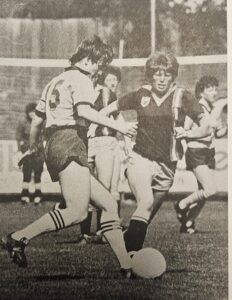
Liz Elliott (née Vervoort) – a Dutch-born football pioneer in Tasmania
Liz Elliott (née Vervoort) was born in 1956 in Venray, the Netherlands, where her parents ran a farm. Growing up as the only girl among six brothers, Liz developed her football skills in the backyard, playing alongside her siblings. Despite her enthusiasm, her father did not allow her to join
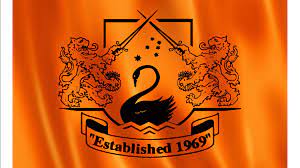
Dutch Society Neerlandia of WA Inc.
The earlier Dutch migrants that arrived in the late 1940’s had made several attempts to establish Dutch clubs in WA, such as the Dirck Hartogh Society and the Australian Dutch League, but these all folded after a short while. But during the early 1950’s the Dutch migrants arrived in larger

Painting ‘Dark History’ (2024)
This painting is part of the Creative Generation Excellence Awards in Visual Art, a showcase of outstanding work by senior high school students from across Queensland. The exhibition at the Queenland Gallery of Modern Art in 2025 celebrates young artists’ creative talents and their reflections on identity, agency and perspective.
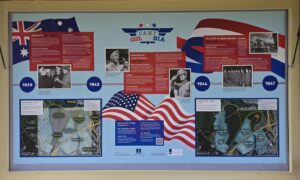
New heritage display at former Camp Columbia in Brisbane
A new, high-quality heritage display has been installed at the entrance to Pooh Corner Bushland Reserve, part of the former Camp Columbia site, in the south-west Brisbane suburb of Wacol. This location marks one of the last visible remnants of Camp Columbia. The new cabinet has been mounted on the
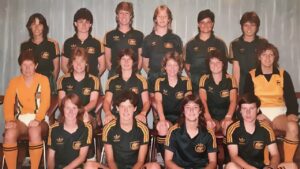
Renaye Iserief – A Dutch-Javanese-Australian Matilda with a natural gift for football
Renaye Iserief is a celebrated figure in the early history of Australian women’s football, but her story is also deeply tied to the broader Dutch-Australian migration narrative. She is one of two Dutch-Australian women — alongside Rose van Bruinessen — who proudly wore the green and gold as Matildas during
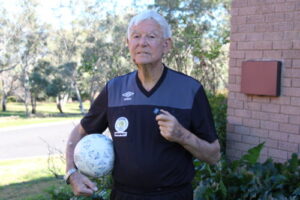
Henk Thijssens – A Dutch-Australian referee’s enduring legacy in Canberra football
Henk Thijssens (1937–2020) was a cornerstone of the football community in Canberra — a respected referee, coach, and club volunteer whose Dutch-Australian journey reflected a life shaped by resilience, service, and love for the game. From Winterswijk to the world Henk was born in 1937 in Winterswijk, a town in
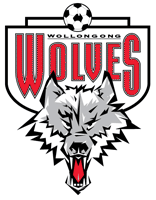
John Vlietstra – Dutch heritage and football legacy in the Illawarra
John Vlietstra is one of the most respected figures in the Dutch-Australian community of the Illawarra region, NSW. A tireless football administrator, community leader, and cultural advocate, his life story reflects the resilience of postwar Dutch migrants and their deep-rooted contributions to local Australian life — particularly through sport and

The Witschge Family in Australian Football Heritage
Dutch Origins and Migration The Witschge family is a notable Dutch-Australian football family that made its mark in Western Australia (WA). Theie eldest son Henry Witschge was born in Amsterdam and in 1954 his family emigrated to Australia. In WA, Henry became involved with the Windmills soccer club (later Morley-Windmills
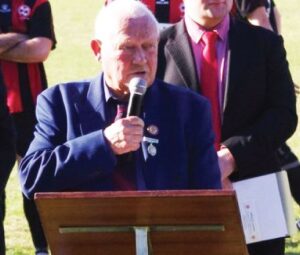
John Van Hoek – A Dutch-Australian pioneer in WA football and community life
John Van Hoek (1933–2016) was a passionate football coach, administrator, and community leader whose Dutch roots and tireless dedication helped shape the sporting landscape of Western Australia for over four decades. From Den Bosch to Ashfield Born in Den Bosch, the Netherlands, in 1933, John Van Hoek emigrated to Melbourne,
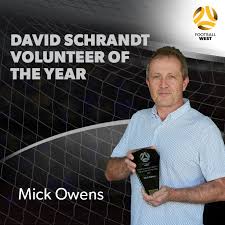
David Schrandt – From Dutch migrant to WA football statesman
David Schrandt, born in Breda, the Netherlands in 1946, is a prominent figure in Western Australian football, known for his contributions both on and off the field. After emigrating to Australia, he grew up in Perth and began his football career as a goalkeeper, later transitioning to a striker. He
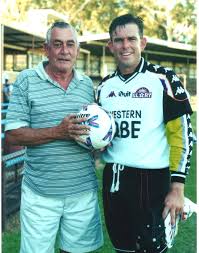
Dutch courage in goal: The Frank and Tony Franken story
Tony Franken, born on 11 January 1965 in Perth, Western Australia, stands as one of Australia’s most accomplished goalkeepers — and a proud product of Dutch migrant heritage. Frank Franken His story begins with his father, Frank Franken, born in the Netherlands in 1935. Like many Dutch migrants who arrived
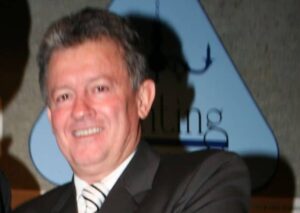
Footballer Rene de Koning
Rene de Koning is a Dutch-born footballer who made a significant impact on the Western Australian soccer scene as a versatile defender and midfielder. He was born in Nijmegen, 1963 emigrated to Western Australia with his family in 1980 and joined Bayswater as a schoolboy. At 17, he debuted in

Henk Beumer football administrator WA
Hendrik “Henk” Beumer (1919–2000) was a pivotal figure in the development of soccer in Western Australia, particularly within the Dutch-Australian community. Born in Haarlem, the Netherlands, Beumer immigrated to Australia in 1950, a period marked by significant Dutch migration seeking new opportunities and contributing to Australia’s multicultural fabric. Founding of
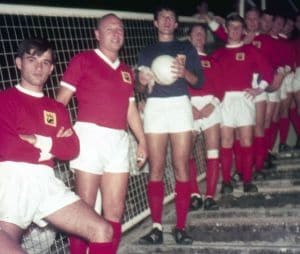
Goalkeeper Chris Wissink
Chris Wissink is a notable figure in Australian soccer, particularly within the Dutch-Australian community. Born in 1946 in Eindhoven, Netherlands, he emigrated with his family to Australia in 1954 and became a distinguished goalkeeper in Western Australia’s soccer scene. Club Career and Achievements Wissink’s soccer career in Australia was marked
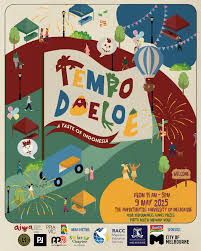
The Other Dutch – Remembering the Indo Experience
De Andere Nederlanders – The Other Dutch is a compelling bilingual exhibition and publication that tells the often-overlooked story of the Indo-European (Indische) community: the descendants of Dutch colonisers and local Indonesians in the former Dutch East Indies, now Indonesia. These “Other Dutch” developed a unique hybrid identity, blending European
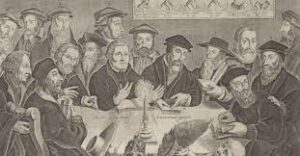
For Faith and Ideology (Dutch migration to Australia)
By Di Gabb and Roberta Julian This chapter traces two distinct yet ideologically aligned waves of Dutch migration to Australia—one preceding World War I and another following World War II. Both were driven not by typical economic motives or adventure but by deeply held ideological or religious beliefs, making these
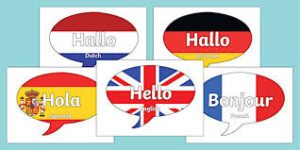
Dutch Australians in Perspective: Language, Identity, and Migration
Drawing on the Works of Desmond Cahill and Michael Clyne Introduction and Overview Post-war Dutch migration to Australia has long been perceived as an understated success story — a community that quietly integrated, worked hard, and caused few social ripples. Yet beneath this stereotype lies a more nuanced and layered
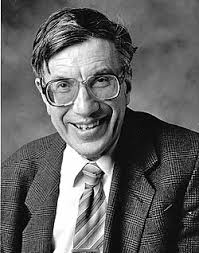
The Dutch Language in Australia – Some Comparisons with Other Community Languages
Author: Michael Clyne Introduction: In this seminal article, sociolinguist Michael Clyne investigates the unique trajectory of Dutch language use and decline in Australia, comparing it with other community languages such as Italian, Greek, German, and Vietnamese. His central question: Is the Dutch linguistic experience in Australia an anomaly, or does
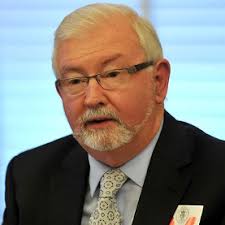
Lifting the Low Sky” – Dutch Australians: Assimilationists or Accommodationists?
Summary Desmond Cahill’s extensive analysis explores whether Dutch Australians have assimilated into mainstream Australian society or adapted through a more complex, accommodationist process. Drawing on historical, cultural, and statistical perspectives, Cahill challenges the longstanding stereotype of the Dutch as “the perfect migrants” who effortlessly assimilated and vanished into Australian life.
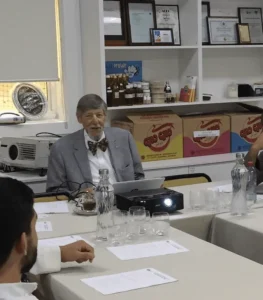
The Religious Contribution of Dutch Migrants to Multicultural Australia
By Gary Bouma Introduction and Summary: Dutch Religious Influences in Australia’s Multicultural LandscapeBased on Gary D. Bouma’s “The Religious Contribution of Dutch Migrants to Multicultural Australia” Dutch post-war migration to Australia is often told in terms of economic resilience, cultural adaptation, or family stories of hardship and hope. But less
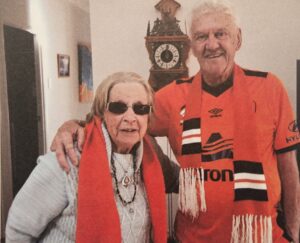
Jan (John) Morcus – a pillar of Dutch-Australian football and community in Brisbane
Jan (John) Morcus represents the spirit of Dutch migration that helped shape Brisbane’s football and community life. His passion for football, dedication to community building, and tireless volunteer work left an enduring legacy that continues today. John was born in the Netherlands, where his father Cor Morcus was a farmer
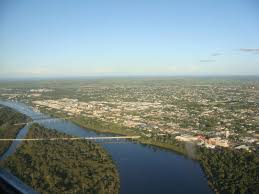
Dutchies in Bundaberg
This is a Dutch Australian Weekly article from 18 November 1991 Since 1989, Bundaberg has had a ‘Dutch Aussie Friendship Club’. Coming from Sydney, where many Dutch associations exist, the driving force behind D.A.F.C., Alex Zwarts, discovered that there was no longer a club in Bundaberg. The previous one had
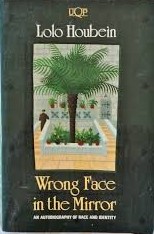
‘Wrong Face in the Mirror’ by Lolo Houbein
In 1987 Dutch Australian author Lolo Houbein published her book Wrong Face in the Mirror. Among other topics, this book deals with the author’s emigration to Australia in the 1950s as a twenty-four-year-old. Houbein describes the challenges of adapting to life in Australia as a Dutch migrant, including the struggle
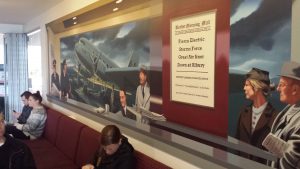
Uiver Restoration Project – Albury NSW – May 2025 newsletter added
The Uiver Memorial Community Trust – a not-for-profit organisation – is devoted to restoring Albury’s Uiver Memorial DC-2 aircraft. In 1934 the MacRobertson Air Race proclaimed itself as the greatest international air race devised, and history has confirmed that bold claim. The aircrews that completed the journey from England to
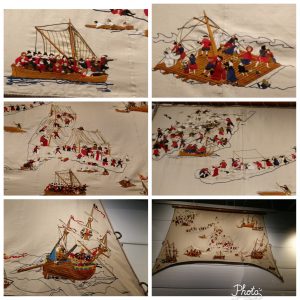
The Batavia and its many stories – New research challenges the Batavia mutiny narrative.
scroll down for: New research challenges the Batavia mutiny narrative The Batavia – 1629 The Batavia, built in Amsterdam in 1628 was the company’s new flagship, she sailed that year on her maiden voyage for Batavia. On 4 June 1629, the Batavia was wrecked on the Houtman Abrolhos, a chain
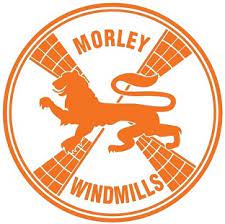
Morley-Windmills Soccer Club: A Dutch-Australian Football Legacy
Founded in 1950 by Dutch immigrants led by Henk Beumer, the Windmills Soccer Club began as a recreational outlet for the local Dutch community in Perth. The club was accepted into the Third Division of the Western Australian Soccer Football Association (WASFA) in 1951 and steadily progressed, earning promotion to
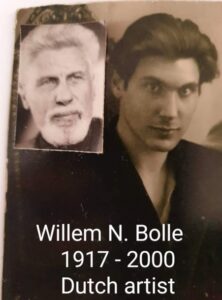
Wim Nicolaas Bolle: A Dutch soul with an Australian canvas
Wim Nicolaas Bolle (1917–2000) was a Dutch-born artist whose life and work bridged the cultural landscapes of the Netherlands and Australia. Born in the Netherlands, Bolle spent much of his early life immersed in Amsterdam’s vibrant art scene. His artistic journey was deeply influenced by personal experiences, including the profound
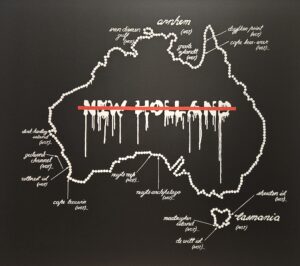
New Holland (NOT) – Painting by Blak Douglas and Adam Geczy
Blak Douglas is a Dhungatti man (Mackley Vally) NSW born in.1970 Adam Geczy is an Associated Professor at the Sydney College of the Arts born in 1969 The painting is done with synthetic polymer paint directly on the wall of the Queensland Art Gallery in Brisbane. The painting is a
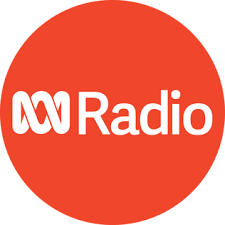
‘Dutch Connections’ – ABC digitised radio programmes – 1988
Overview of the Series Title:“Dutch–Australian Connections”]Produced by: Australian Broadcasting Corporation (ABC) and Radio NederlandFormat: 8 x 10-minute radio programsYear: c. 1988 Theme: The series traces four centuries (from 1606 till 1988) of Dutch-Australian connections, covering early exploration, wartime alliances, migration stories, and shared cultural developments. The ABC can supply this
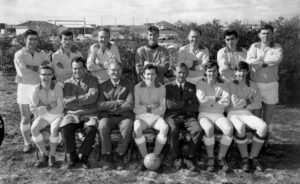
Dutch football legacy in Mount Gambier
In 1957, the Dutch Social Club of Mount Gambier established an amateur football team nicknamed Wit-Blauw (White-Blue), inspired by the colours of Dutch club De Graafschap. Coached by Tony Mulders, the team was multicultural but predominantly Dutch. Despite its promising start, Wit-Blauw lasted only three seasons before disbanding around 1960.
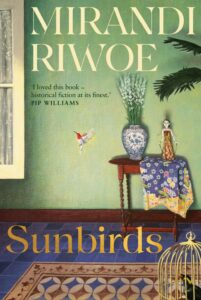
Sunbirds by Mirandi Riwoe
Sunbirds by Mirandi Riwoe (UQ Press, 2023) is a historical fiction novel set in the early 1940s in Java. The novel opens with protagonist Anna van Hoorn fleeing the Japanese Occupation of the Indies for the safety of Australia. Near the Australian coast, Anna’s plane is caught up in the
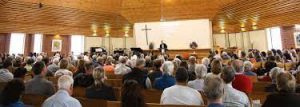
Reg Doedens: A life of faith, resilience, and community- Tasmania
The article below is a brief resume of the life of Reg Doedens. It is structured on the ghosted auto-biography prepared by Anne Rand, with additional notes by the reviewer, (a neighbour, cadet, employee, hardware store co-owner, interviewer (for another book), family friend and fellow Christian). Some of Reg’s story
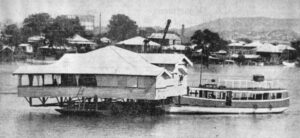
‘Moving Home’: Moving a Queenslander house to the Netherlands
‘Moving Home’ is a large-scale art installation and documentary project that exploresthemes of belonging and displacement through the physical relocation of a Queenslanderhouse from Brisbane, Australia to Eindhoven, The Netherlands. By dissecting the home’sfunction as a dwelling, an artefact, and a symbol of white settler identity, the projectengages with contemporary
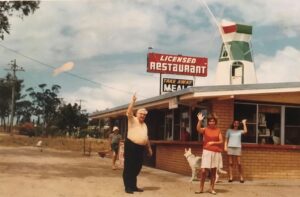
View the documentary film ‘Westlanders in Australia’: The Looyen family’s emigration journey
Westlanders in Australia is a documentary that tells the story of the Looyen family’s migration to Australia, as seen through the eyes of three generations. This “ordinary Dutch family” built a new life in Australia by establishing their own business and raising children, who in turn started families of their
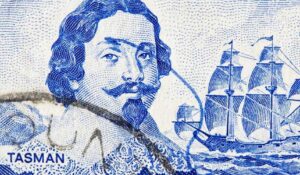
Abel Tasman tercentennial commemorated in London in 1942
With a hat tip to Tony Cunneen in Sydney, we were made aware of a folder in the National Archives of Australia: Netherlands Legation – Tasman Tercentennial (NAA: A6661.180). It begins with suggestions made in April 1942 to find an appropriate way to commemorate the 300th anniversary of Abel Tasman’s
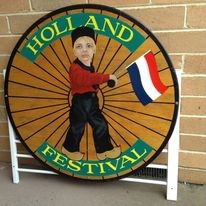
Holland Festival – Melbourne
The Holland Festival has been held in Melbourne each year for 40 years until 2014. After a three years hiatus, the Festival returned in 2017, 2019, 2020, 2023, 2024 and 2025. It is managed by the Rotary Club of Casey under the leadership of Paul Rubens. Holland Festival Management Committee
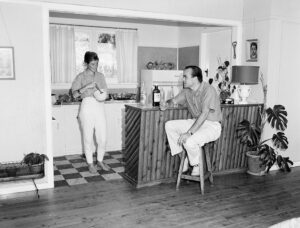
Nienke Teunissen – Reflections of a Granddaughter
The podcast JOS is an introspective exploration of Nienke Teunissen’s quest to uncover the life of her grandfather, Jos Teunissen, who passed away long before she was born. In 1956, at the age of 24, Jos and his wife Josee (who was then 19 years old) migrated to Australia on

Brisbane@War: Australia, USA, Netherlands, and UK – Marking the 80th anniversary of WWII’s end with a symposium and tours
This year, 2025, marks the 80th anniversary of the end of World War II, a momentous milestone in Australia’s history and the conclusion of the war in the Pacific. Brisbane played a pivotal role as a strategic hub for Allied operations, cementing its place in global wartime history. The Camp
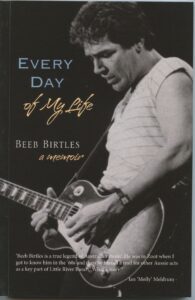
Beeb Birtles: From Dutch Roots to Australian Rock Legend
Beeb Birtles, born Gerard Bertelkamp on November 28, 1948, in Amsterdam, Netherlands, is a celebrated musician, singer, songwriter, and guitarist. As a founding member of iconic bands such as Zoot, Mississippi, and the Little River Band, Birtles has left an indelible mark on the music industry, both in Australia and
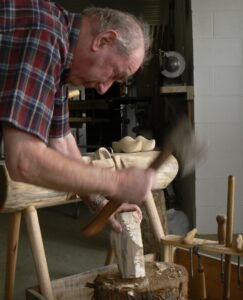
Clog Making in Tasmania
Clogs and Dutch are ideas that belong together, largely due to the success of marketing by the Dutch Tourism industry. A more or less unique product and a more or less unique people – a marketers dream combination. Reality is quite different. Very few Dutch migrants brought clogs with them,
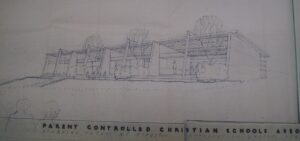
Calvin School Tasmania – became a model for Australia
Calvin School- the why and the consequences In the 1950s, education of children was the joint responsibility of the State and the local Municipality. The State provided the buildings, the teachers and the curriculum. The Municipal Councillors enforced truancy regulations , and managed requests for absences (because mum was sick
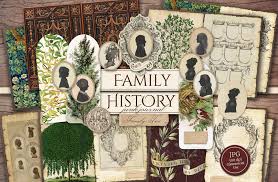
Researching Dutch Australian Family History
Are you interested in your Dutch Australian family history? Did your parents, grandparents, or great-grandparents migrate to Australia from the Netherlands? Or maybe you migrated to Australia from the Netherlands yourself and want to research your family history but don’t know where to start? Don’t worry, we’ve got you covered!
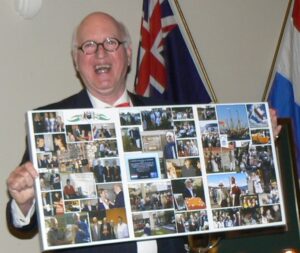
Dr Freddie von Schmidt
The new doctor There is a red book. It is one of many books in a series. This one is devoted to the letter ‘S’. There is nothing in it except surnames starting with ‘S’, and the history of these names. Because it is a Dutch book, the name ‘von
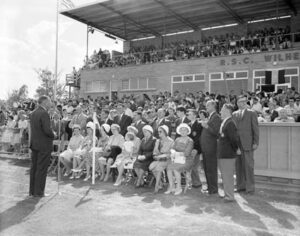
Jan van Hoboken founder of Wilhelmina D.S.C – now Ringwood FC (1908-1993)
Early Life and Career Jan (John) van Hoboken was born in 1908 in Aalten, Gelderland, Netherlands. He began his career in 1929 when he accepted a position at the Borsumij trading company in the Netherlands East Indies. In 1932, he married while living there. When the Japanese invasion of the
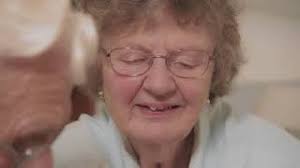
Gerard van Wezel and Marretje Ida Sonnenberg
Source: National Archives of Australia Gerard van Wezel migrated to Australia from the Netherlands in 1952 under an ex-serviceman assisted passage scheme. In January 1958, he began working as a technical officer with the Snowy Mountains Hydro-Electric Authority. During this time, he met fellow Dutch migrant Marretje Ida Sonnenberg, who
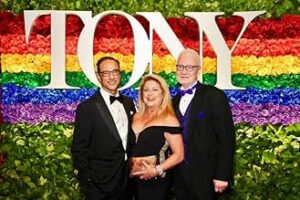
TV Star Sherry Wright (Berta van Wheeley)
Source: National Archives of Australia Sherry Wright, originally named Berta Joanna van Wheeley, migrated from the Netherlands to Australia with her family in 1950. Her father, having endured severe starvation during World War II, was advised to seek a warmer climate for health reasons, prompting the family’s relocation to Brisbane.
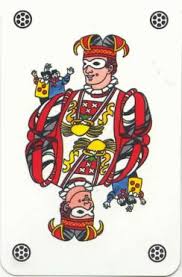
The City of Blacktown Carnival Society “The Jokers”
The following text is from a booklet published by the Federation of Netherlands Societies Ltd. in February 1985. The research for this booklet was done by Mijntje Hage. Like all the other carnival clubs, The Jokers consider it their duty to give as many people as possible a chance to enjoy themselves
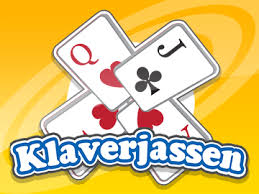
The N.S.W. Klaverjas Federation NSW
The following text is from a booklet published by the Federation of Netherlands Societies Ltd. in February 1985. The research for this booklet was done by Mijntje Hage. This Federation was formed a few years ago to incorporate all the existing “klaverjasclubs”, whether they were part of an organisation or a separate
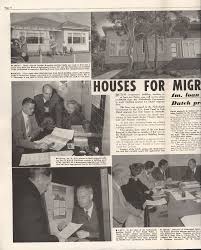
History of the Netherlands co-operative terminating building society schemes
The following text is from a booklet published by the Federation of Netherlands Societies Ltd. in February 1985. The research for this booklet was done by Mijntje Hage. The difficulties of the ‘first’ assisted immigrants were many, “housing” being one of the greatest problems. Although in post-war Holland housing was
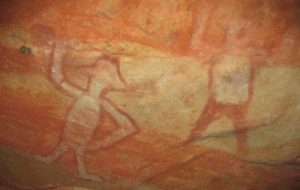
Our Mob: Shipwrecks survivors and WA Aboriginal Peoples
Republished with permission. Chapter 37 of the book: A Touch of Dutch. For the full pdf of the book click here. Introduction chapters of the book: Touch of Dutch
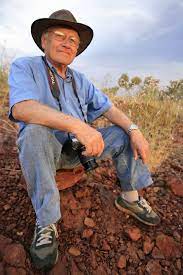
The photography of Richard Woldendorp
Republished with permission. Chapter 36 of the book: A Touch of Dutch. For the full pdf of the book click here. Introduction chapters of the book: Touch of Dutch See also: Dutch-Australian photographer Richard Woldendorp
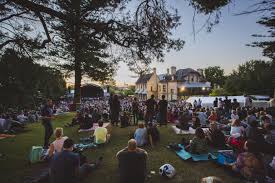
Floating: an exhibition of artworks at the Fremantle arts centre by Dutch Australians
Republished with permission. Chapter 35 of the book: A Touch of Dutch. For the full pdf of the book click here. Introduction chapters of the book: Touch of Dutch
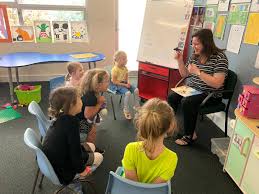
The Dutch School ‘De Schakel’
Republished with permission. Chapter 34 of the book: A Touch of Dutch. For the full pdf of the book click here. Introduction chapters of the book: Touch of Dutch
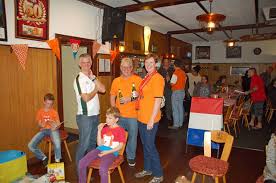
The history of Dutch clubs in Perth – WA 1950s-2016
Republished with permission. Chapter 33 of the book: A Touch of Dutch. For the full pdf of the book click here. Introduction chapters of the book: Touch of Dutch

21st Century Dutch Interests
Republished with permission. Section Five of the book: A Touch of Dutch. For the full pdf of the book click here. Introduction chapters of the book: Touch of Dutch
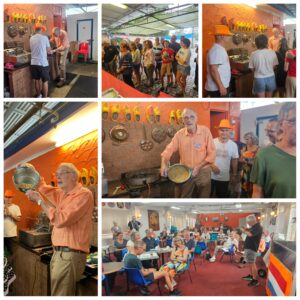
First gathering of all Dutch organisations in Brisbane
As of 16 November 2024, all known Dutch organisations in Brisbane—loosely connected under the Dutchlink Brisbane banner—came together for the first time to strengthen connections and get to know each other better. The event was centered around the making of bitterballen. The Dutch Chamber of Commerce Queensland (DCCQ) and the
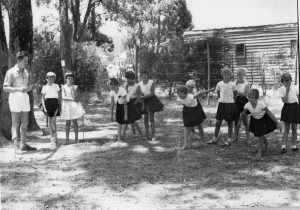
The Free Reformed Community in Western Australia
Republished with permission. Chapter 19 of the book: A Touch of Dutch. For the full pdf of the book click here. Introduction chapters of the book: Touch of Dutch
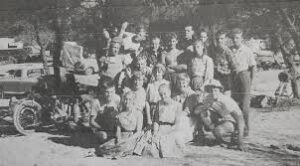
Boomerang Church Youth Club Perth
Republished with permission. Chapter 18 of the book: A Touch of Dutch. For the full pdf of the book click here. Introduction chapters of the book: Touch of Dutch
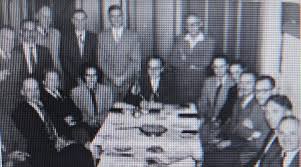
The Hervormde Kerk in Perth
Republished with permission. Chapter 17 of the book: A Touch of Dutch. For the full pdf of the book click here. Introduction chapters of the book: Touch of Dutch
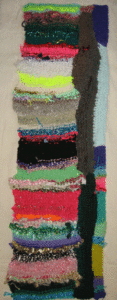
Textile Artist – Aadje Bruce
Born in Amsterdam 11-10-1934, died 5-4-2011 in PerthTextile Artist / Fashion Designer and Mixed Media Artist. Active Period c.1958 – c.2008 Artistic education: Diploma of Art Studies, Perth Technical College (1957), BA Fine Art (Fibre Textiles) Kunstnijverheidsschool/Rietveld Academie, Amsterdam (1982), BA (Sculpture) Curtin University (1990), M.A. Visual Arts, Curtin University

From the Pitch to Perseverance: The Remarkable Journey of Bill Westerveld
Bill Westerveld’s life story is a testament to his enduring passion for football and resilience in the face of adversity. His journey in the sport took him across continents, representing his homeland at the youth level before embarking on a new chapter in New Zealand and later in Australia. Born
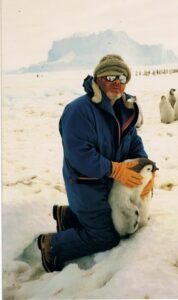
Peter Herweynen – From Canadian chocolate to Antarctic builder
When he was 18 years old, Jan van Herweynen was asked by his father to travel to Tasmania, purchase a piece of land and begin building a house. Jan was accompanied by his cousin Bob Brinkman and the sister of his mother, Janny de Jonge. They left Schipol airport in
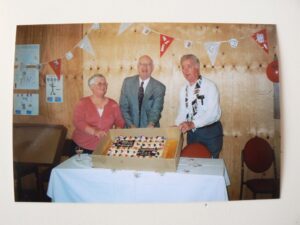
Card Club – Ons Genoegen Tasmania
Saturday the 21st of April was the day the Klaverjas Club “Ons Genoegen” celebrated their 50th anniversary. The celebrations started in the morning at the Lenah Valley RSL clubrooms. Players had come together from Launceston and Hobart to participate in a tournament of wits and skill (and a bit of
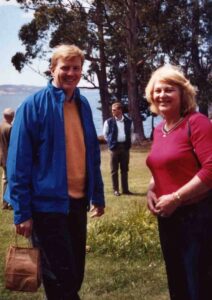
Royal Visit to Tasmania
This article was written during the 2006 Dutch royal visit to Australia. It was weeks of anticipation for the Dutch Community in Tasmania, as they received preliminary invitations and two general invitations in the Saturday Mercury, for the Royal visit. His Royal Highness, the Prince of Orange, and Her Royal
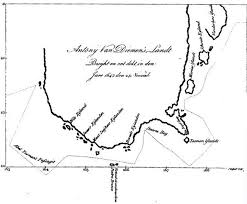
Dutch Tasmanian Connection
Due to changing times and ageing volunteers, and lack of interest amongst the next generation, the Dutch-Australian Society ‘Abel Tasman” (DAS) faded away in the years 2012 – 2015. The strength and commitment to be involved in community events waned. Sinterklaas decided it was too far to come. However, the
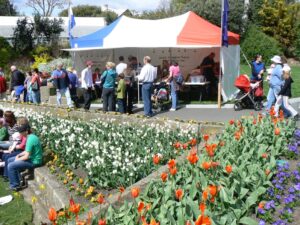
Dutch-Australian Society ‘Abel Tasman” and the tulip festival
BLUE GUM, TULIP & SPRING FESTIVALS From the newsletter of the DAS (Dutch-Australian Society), the Tasman Telegraphs, I have noted the following:[reporting of events the DAS usually lacked pertinent details, as if these facts were common knowledge. In some years there was simply no report. Below is not a selection,

George Huizing Honorary Consul Tasmania
George Huizing 8/9/1938 – 27/12/2016 A newspaper clipping on my desk reminds of the last time I saw George. The clipping concerns a lost property title, in the parish of Lorainah. Property belonging to JKF von Schmidt. I quickly dropped an email to the owner – “where is Lorainah?” JKF,
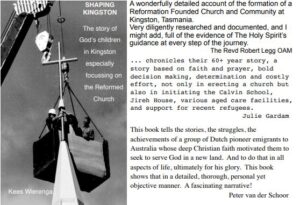
Dutch-Tasmania books
Shaping Kingston – The story of God’s children in Kingston especially focussing on the Reformed Church – written by Historian Kees Wierenga – $40 plus postage Copies of this book are held by the State Library of Tasmania. Copies may also be obtained from the author, as noted above. The
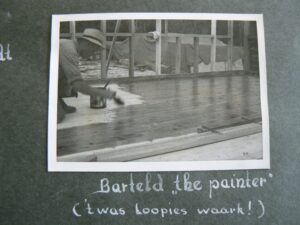
Eulogy Bart Jan Folkerts – 1999
We praise God for the life and witness ofBart Jan Folkerts18 September 1911 to 24 October 1999 An Association [Christian Parent-Controlled Schools] Founder and Gold Member“Now with the Lord he loved and served … a man of strength,courage and determination, a fighter for what he believed in.” “My Grace is
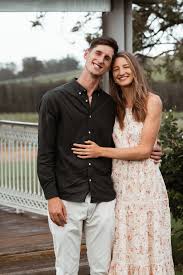
Dutch connection for Australian high jumper Nicola Olyslagers
Nicola Lauren Olyslagers (née McDermott) (born 28 December 1996) is an Australian high jumper. She won the silver medal at the Tokyo 2020 Olympics and the bronze medal at the 2023 World Athletics Championships in the high jump. Olyslagers is the current high jump Oceanian record holder, and the world
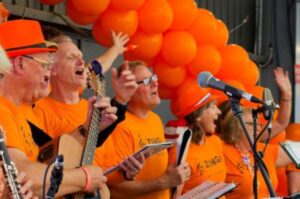
Community music, identity and belonging among Dutchies in Australia.
This article discusses the experiences of Dutch identity and belonging to a music-making group in the Dutch migrant community in Melbourne, Australia. The article shows how making music together can bridge generational, gender and class differences. Multiculturalism empowered the participants to explore their dual identity as Dutch Australians, intersecting with
The Life and Legacy of Dien Knol – Freese (1905 – 2001)
Born on December 15, 1905, in Groningen, the Netherlands, Berendina Annagena (Dien) Knol (née Freese) led a remarkable life marked by resilience, faith, and service. Her family migrated to Australia in 1928 after her father, Jurjen Peter Freese, faced financial ruin in the Netherlands. Dien, aged 23 at the time,
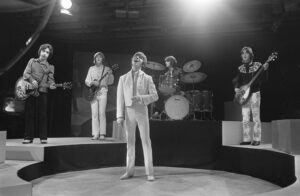
Dick Diamonde (1947-2024)
Dingeman Adriaan Henry van der Sluijs, better known by his stage name Dick Diamonde, was a Dutch Australian bass player. Born in the Dutch town Hilversum, Diamonde emigrated to Australia with his parents when he was four years old. The family lived in the Villawood migrant hostel in western Sydney
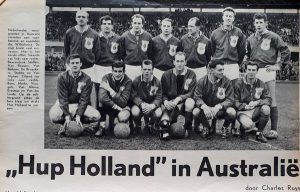
Dutch Soccer Legacy in Eastern Melbourne: From Wilhelmina to Ringwood City FC
The late 1950s and early 1960s marked a significant period in eastern Melbourne’s soccer history, as Wilhelmina emerged as a prominent club, laying the foundation for a cluster of local district clubs with strong Dutch influence. These clubs, including Hollandia, Fern Tree, Ringwood United, and Mooroolbark, thrived with Dutch backing,
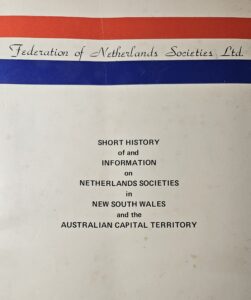
The history of Dutch Clubs in NSW
The following text is from a booklet published by the Federation of Netherlands Societies Ltd. in February 1985. The research for this booklet was done by Mijntje Hage. Acknowledgement Many thanks to the clubs, their secretaries, and the many members of the various societies who have made it possible for
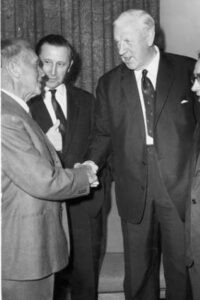
Impact of FIFA Transfer Ban on Australian Football and Dutch Influx: 1959
Following the 1957 Australian Football Coup Australian football clubs began recruiting players from European clubs like those in Austria and the Netherlands. Thirty-four players, including thirteen from Dutch clubs, migrated to Australia, sparking a dispute over transfer fees. In response, FIFA banned Australia from international competitions until transfer fees were
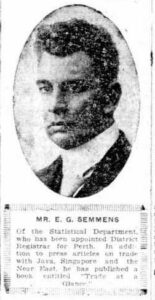
Edgar Semmens founding member Netherlands Chamber of Commerce WA – 1903
Edgar Semmens was married to Anna Siebenhaar, who had arrived from the Netherlands in the 1890s, following her younger brother the socialist and activist Willem Siebenhaar who had arrived in Perth a few years earlier. As a result of his marriage to Anna – who was active in the small
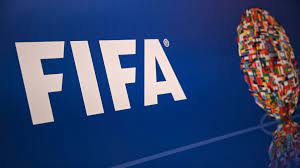
The Dutch Influence in the Australian Football Revolution of 1957
The history of soccer governance in New South Wales, Australia, dates back to 1882, evolving through various associations until the formation of the Australian Soccer Football Association (ASFA) in 1921. By 1943, the New South Wales Soccer Football Association was established to oversee the sport within the state. In 1957,
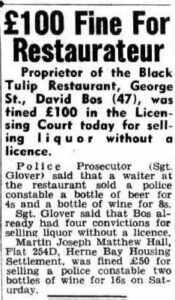
David Bos Dutch restaurateur of the Black Tulip
David Bos, a Dutch immigrant, arrived in Sydney in the 1930s. During World War II, he played a crucial role as manager of the Netherlands Canteen. This canteen became a vital social hub for Dutch military personnel after the Japanese occupation of the Dutch East Indies in 1942. After the
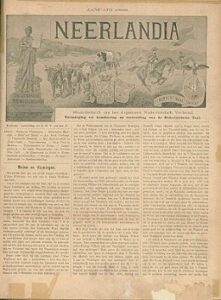
Anna Siebenhaar under government surveillance Perth ca 1900
Anna Siebenhaar, the older sister of Willem Siebenhaar, followed his brother from the Netherlands to Perth, Australia in the 1890s. In 1896 at the age of 42 she married Edgar Semmens at Coolgardie In 1908, Anna was appointed the Australasian representative of the ‘Het Algemeen Nederlandsch Verbond’ (the ANV or
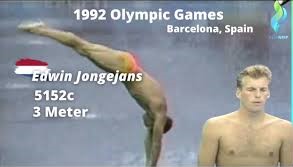
Edwin Jongejans: From Dutch Olympic Diver to World-Class Australian Coach
Edwin Jongejans, born on December 18, 1966, is a retired diver from the Netherlands who has made significant contributions to the world of diving, both as an athlete and a coach. Jongejans’ journey in diving began on the global stage with his participation in the 1988 and 1992 Olympic Games.
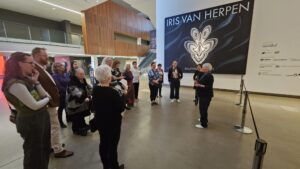
Pictures from the DACC tour of the Iris van Herpen Exhibition
The DACC was able to secure an exclusive tour through the Iris van Herpen exhibition. The event was a sold out success with the limited available tickets within days. The exhibition is on till October 7 and is highly recommended. The 40-year old Iris van Herpen is a Dutch fashion
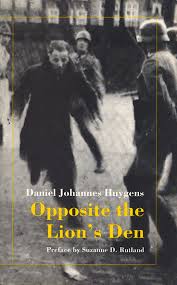
Daniel Johannes Huygens – book: “Opposite the Lion’s Den”
Daniel Johannes Huygens, born in Utrecht, Holland, in 1908, is recognized as an unsung hero of World War II for his courageous efforts in hiding Jewish families from the Nazis. During the German occupation of the Netherlands, Huygens and his wife, Lydia, transformed the upper story of their house into
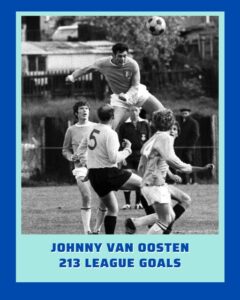
Jan Van Oosten: A Legendary Goal Scorer in Western Australian Football
Early Career and Rise to Prominence Jan (later John, Johnny) Van Oosten was born in The Hague. The family emigrated to Australia in 1954, when Jan was 7 years old. They settled in Victoria Park. His father was Dutch, his mother Polish, they had met each other in Germany where
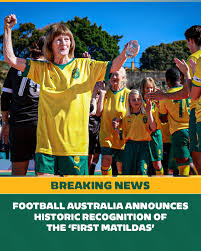
Trixie van Lieshout (Tagg): First Female Coach of the Matildas
Early Life and Introduction to Football Trixie Tagg (née van Lieshout) was born on December 13, 1948, in Amsterdam. Growing up in Amsterdam-West, Trixie was introduced to football at a young age, playing street football with friends—mostly boys—in the late 1950s. She fondly remembers listening to football matches on the
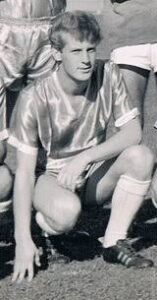
Ted de Lyster from football to looking at young adults with intellectual disabilities.
Ted de Lyster, born on June 17, 1947 in The Hague, is an Australian former association football player whose career, though brief at the international level, holds a special place in the history of Australian football. De Lyster’s journey from his early days in the Netherlands to representing Australia on

Aaron Mooy from Sydney to Football Stardom and Retirement
Dutch heritage Aaron Frank Mooy, originally named Aaron Kuhlman, was born on 15 September 1990 in Sydney, Australia. His surname was changed by his Dutch mother after her divorce. Mooy had minimal contact with his father, only meeting him briefly at age 14 to sign forms for a Dutch passport.
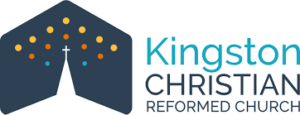
Book: Shaping Kingston- The story of God’s children in Kingston
From their initial close connection with St Johns Presbyterians, a committed group of immigrant Dutch Christians moved on to build a church true to the Reformed tradition at Kingston. With original sources and interviews supplementing his research, Kees Wierenga chronicles their 60+ year story, a story based on faith and

Thank you DACC website users – website statistics
We are excited to share with you our latest website statistics, which serve as a resounding vote of confidence in the digital strategy we embarked upon four years ago. This snapshot, taken on July 7th, offers a comprehensive overview of our website’s performance over the past 28 days. Your continued
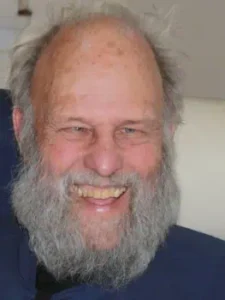
The colourful life of Jan de Voogd
Johannes Jan Nicolaas de Voogd, known as Jan, was born in January 1932 in Japan to Dutch parents, Nicolaas Arie Johannes (Niek) de Voogd (1899-1977) and Amarintia Clasina de Vries (1903-1998). Jan’s parents married in 1930 in Kattendijke in Zeeland, the Netherlands. At the time his father Niek was an
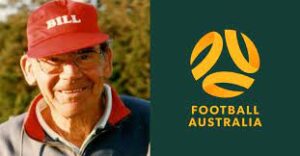
Bill Vrolyks: A Legacy of Football and Community Service
Born in Holland, Bill Vrolyks was send to Australia in 1945 for training to fight the Japanese as part of the Dutch Air Force. Because of the union boycot in support of Indonesia the trainees were flown all over Australia to help loading ships to go to Indonesia. He also
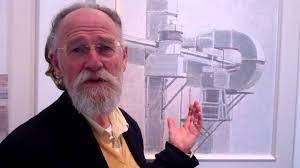
Hendrik Kolenberg Art Curator – Art Gallery of NSW
Early Life and Education Hendrik (Cornelis Gijsbertus) Kolenberg was born in Rotterdam, the Netherlands, on July 31, 1946, to Gijsbertus Anthonius Kolenberg and Wilhelmina Maria Kolenberg (née Schellaars). In October 1952, the Kolenberg family emigrated to Australia, where Hendrik began his education. He attended Black Forest Primary, Forbes Primary, and

Zing! Sing in Dutch: Eight Years of Growth and Development in Review.
From its inception in August 2016, Zing! Sing in Dutch promised to be a choir with a difference. Following a series of two vibrant workshops in June that year featuring nursery rhymes, cabaret ballads, pop songs and waltzes (all in Dutch), a core group formed under the leadership of founder
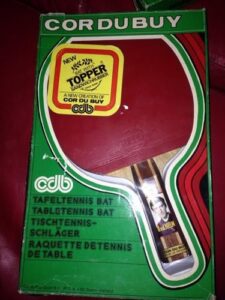
Cornelis du Buy – table tennis champion
Cornelis du Buy was born on January 8, 1921, in Amsterdam, the son of Cornelis du Buy and Maria Catharina Ramakers. During his teenage years, in the interwar period, Cornelis learned table tennis at home from his father, playing on the dining table. Cornelis’ mother, originally from Limburg, acted as
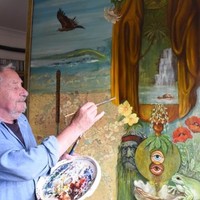
Nico Martin van Dalen – Artist
Nico was born on 8 December 1932 at Nijmegen, Netherlands, and migrated to Australia in 1955. On arrival he stayed in the Bonegilla Migrant centre, in 1997 he produced 15 cartoon styled drawings of live as an early migrant in Australia. He worked as a designer in various positions until

Pastor Hans Mol’s Life, Career, and Contributions
Biography Johannis Jacob “Hans” Mol, (14 February 1922 – 26 November 2017) a notable sociologist of religion, was born in Rozenburg. His early academic pursuits at the University of Amsterdam were disrupted by World War II when he refused to pledge allegiance to the Nazi party. Consequently, he was forced
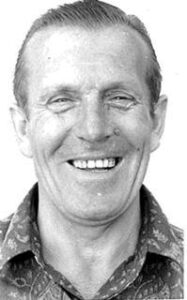
Peter van Ryn – a ‘Sophie’s choice’ and being the physio for the Socceroos
Information provided by Peter’s son Laurie Early Life and Athletic Career Petrus “Peter” or “Piet” van Rijn was born in The Hague (Den Haag), Netherlands, on 18May, 1917 (and passed away on 26th June, 2002). His parents were Piet van Rijn and Antonius Hendrieka Knijf. His mother was born in
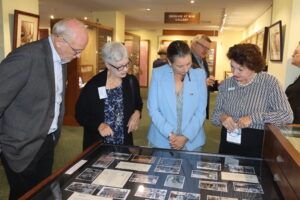
Camp Columbia Exhibition at the MacArthur Museum, Brisbane
In April, representatives of the Camp Columbia Heritage Association (CCHA) met with John Wright, the director of the MacArthur Museum in Brisbane (MM-B), to discuss the possibility of hosting a pop-up exhibition on Camp Columbia. Since Wacol, the actual location of Camp Columbia, is out of town, we explored the idea of
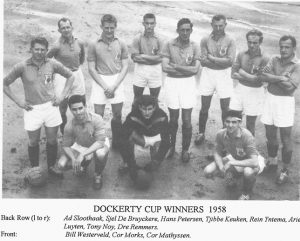
Football player and recruiter Tony Noy
Tony Noy, emigrated to Australia from Gennep as an eighteen year old with his family and was soon playing in the Melbourne competition, first with Slavia, and then with Wilhelmina, enticed there by Van Hoboken with the promise of a job for his father and cheap housing for his family.
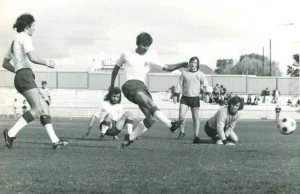
Top scorer in Adelaide: footballer Willem Slager
Willem (Willy. Wil) Slager born in 1941 in Ede near Arnhem. His family was evacuate to Friesland in 1944 when the Allied launched operation ‘Market Garden’ with bitterly fighting around Arnhem. He arrived in Australia in 1957 and settled in the suburb of Elizabeth in Adelaide. Het got a job
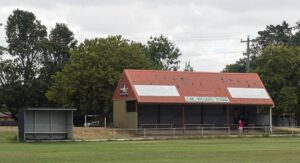
The Dutch heritage of Ballarat City F.C.
According to Adam Muyt in his book Clogball, Ballarat fielded a range of football clubs with typical Dutch football names: Juliana, Wilhelmina, Hollandia, and Fortuna. By the end of the 1960s, these clubs had folded, merged, or were no longer majority Dutch. In 1967, what was left merged into the

Socceroo Adrian Leijer 2nd generation Dutch
Born in 1968, he largely grew up in, the New South Wales town of Dubbo to a family of Dutch and English heritage. He played from Under 10 – Under 14 with SASS Strikers Junior Soccer Club in the Dubbo & District Soccer Association. Whilst with SASS, he represented Western
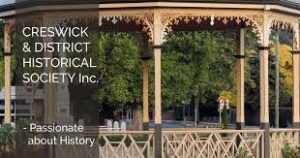
Creswick Victoria – Little Holland
Creswick welcomes the Dutch The Creswick and District Historical Society, Inc. has published a new history of Dutch immigration to Creswick, contributed by the Dutch community. This essay, “Creswick Welcomes the Dutch,” authored by Jack van Beveren, Gerarda van Hamond, Jo van Oostveen, Rita Flapper, and Marilyn Lennox, chronicles the
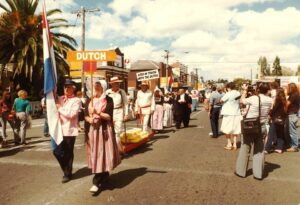
The Dutch in Geelong
Dutch Clubs In 2024, the Dutch population in Geelong comprises of 1400 people. In the early 1950’s they established the Geelong Dutch Club, which has since grown to 10 active Dutch clubs servicing the Geelong Region, they are: • Swallows Karnival Club• The Rocket Club• Micare/ Dutchcare• 50 plus Club•
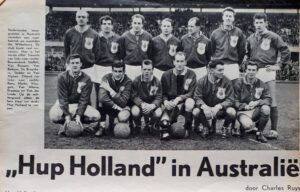
‘Holland’ wins 1956 World Cup Down Under
The Laidlaw World Cup Down Under, nestled amidst the post-war resurgence of football fervor in Victoria, stands as a testament to the multicultural tapestry woven into the sport’s fabric. Its origins traced back to 1949 with a diverse array of teams taking to the field, including representatives from Great Britain,
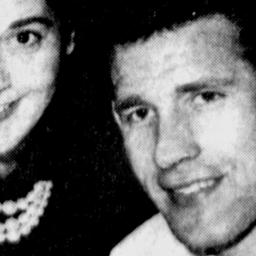
Dick van Alphen: A Tribute to an Australian Soccer Icon
Born on September 18, 1934, in the Netherlands, Van Alphen left an indelible mark on Australian soccer, leaving behind a legacy that continues to inspire generations. Dick passed away on May 21, 2009, at his home in Hervey Bay, Queensland. Van Alphen’s journey in soccer began in his native Amsterdam,
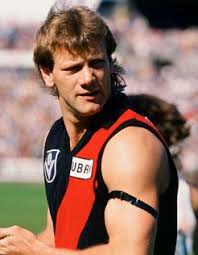
“The Flying Dutchman”: The Legendary Career of Paul Vander Haar
Paul Vander Haar was born in the Netherlands on 7 March 1958 and was one of five children born to Dutch migrants, Bernardus Josef (Ben) and Judith. His surname was originally spelled: van der Haar. On the field he is often referred to as ‘Vander’. Paul Vander Haar’s legacy in
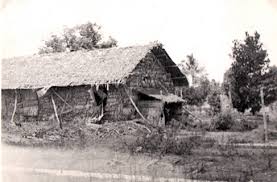
Japanese concentration camp Palembang and the Paradise Road Women Choir
In the occupied Netherlands East Indies, Japan sought to eradicate all Western influence from public life. In the outlying regions, non-Asian individuals were promptly interned following the occupation. Consequently, women from the Netherlands, Australia, England, and the Dutch East Indies found themselves compelled to coexist in internment camps. In the
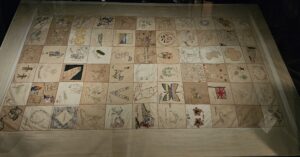
The Changi Quilts – WWII
Changi Prison, originally designed to hold 600 inmates, was overwhelmed with around 2,400 internees, including civilians associated with the British and Dutch colonial administrations. Among them were women and children, housed alongside male prisoners of war. Despite being overcrowded, Changi was relatively modern, boasting amenities like flushing toilets, though hygiene
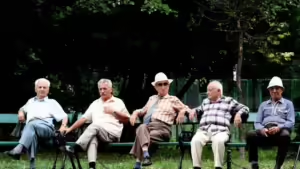
Projected Dutch Aged Stats NSW 1981- 2001
The following text is from a booklet published by the Federation of Netherlands Societies Ltd. in February 1985. The research for this booklet was done by Mijntje Hage. The Dutch NSW Nursing Committee is actively carrying out a feasibility study regarding the establishment of a nursing home or, alternatively, the provision of
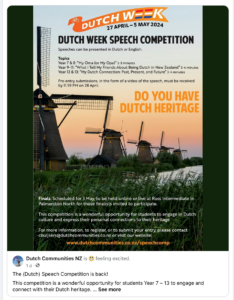
Organising Dutch Speech Competitions
We received an email with this Facebook post from the Dutch Community in New Zealand, with the suggestion that this perhaps is also an idea for Dutch organisations in Australia. Dutch Clubs and Dutch Language Schools might be interested in organising something along these lines.
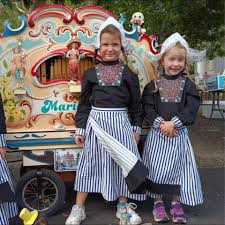
The New South Wales-Holland Festival Committee (history)
The following text is from a booklet published by the Federation of Netherlands Societies Ltd. in February 1985. The research for this booklet was done by Mijntje Hage. In 1980, the vision for a grand Dutch celebration emerged, realizing that such an endeavor required the collaboration of many individuals beyond the capabilities
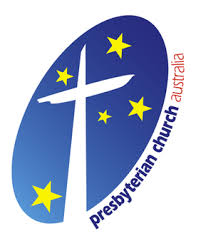
Protestant Dutch Benevolent Society
The following text is from a booklet published by the Federation of Netherlands Societies Ltd. in February 1985. The research for this booklet was done by Mijntje Hage. The P.D.B.S. started its work in Australia in 1948. It began as a social committee of the Dutch congregation of the Presbyterian Church and
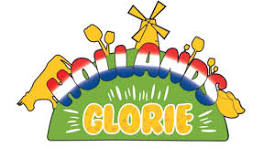
Hollands Glorie Dutch Club in the Sydney region
The following text is from a booklet published by the Federation of Netherlands Societies Ltd. in February 1985. The research for this booklet was done by Mijntje Hage. We don’t have any further information on this club. The youngest club in the metropolitan area of Sydney is “Hollands Glorie”. Only formed in 1983,
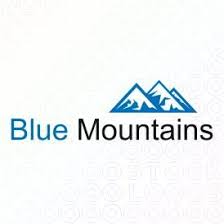
Blue Mountains Dutch Club
The following text is from a booklet published by the Federation of Netherlands Societies Ltd. in February 1985. The research for this booklet was done by Mijntje Hage. It is the only info we have on this organisation. The activities of this club are also very varied, but on the whole, everything

Dutch-Australian sculptor Antone Bruinsma
Antone Bruinsma, an Australian-based sculptor, boasts over 35 years of professional experience in his craft. Having relocated to Australia from Amsterdam, Holland, with his family at the age of 12, his artistic journey began by spending quality time with his father, a Dutch artist and painter, in his art studio.

DACC – Primary Research Projects
The following breakdown provides a comprehensive overview of completed and ongoing research projects in the field of DACC. Allies in a Bind: Australia and the Netherlands East Indies in the Second World War Australia Explained: A Site for Newcomers and Old Hands Children Born on Ships En Route to Australia
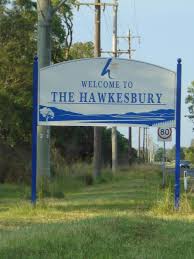
Hawkesbury and district Dutch Australian Society
The following text is from a booklet published by the Federation of Netherlands Societies Ltd. in February 1985. The research for this booklet was done by Mijntje Hage. It is the only info we have on this organisation. When land became scarcer and dearer and people had to move to the outer
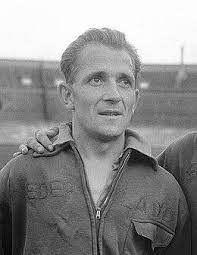
Michaël “Sjel” de Bruyckere: A Football Journey from the Netherlands to Australia
Michaël “Sjel” (Mike) de Bruyckere, born in Kaatsheuvel, the Netherlands, on 6 February 1928, was a remarkable Dutch and Australian footballer whose legacy extended beyond the pitch. Early Years and Dutch Success. De Bruyckere commenced his football journey as a junior player in his local club before catching the eye
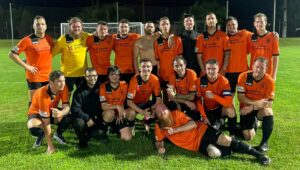
Fortuna 60 SC – The Orangemen – Morwell Victoria
Morwell in the Latrobe Valley saw a large influx of Dutch emigrants in the 1950s. In 1954 12% of the population was Dutch this increased to 15% by 1961. Dutch Clubs followed soon as it is no wonder that many of the Dutchies became involved in football. Fortuna ’60 Soccer
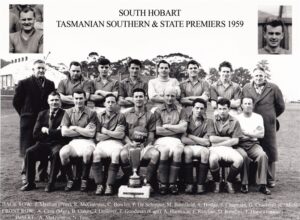
Remembering Tasmanian Football Legend Adrian Harmsen
Adrian (Aad) Harmsen was born in Leiden in 1925. From a young school age he played football and became a key player in the local football club. During WWII he became involved resistance work and in 1945 he was employed as a translator at the Royal Dutch Aiforce. Worried about
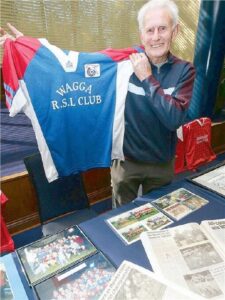
Wens de Jong – football lengend of Wagga Wagga
Wens de Jong was born in 1938 in Oude Wetering (Zuid Holland). At the age of 18, he embarked on a journey to Melbourne in 1956 alongside his parents John and Regina, along with their six siblings. His father, who worked as a baker in their village, had a passion
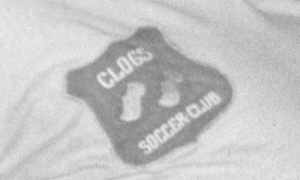
The Clogs ( Klompen) Dutch football Club in Wagga Wagga
In the 1950s, a wave of Dutch migration reached Wagga Wagga, leaving its mark on the Riverina town’s sporting landscape with the formation of the Clogs (Klompen) football club. This article draws upon rich archival records to illuminate the Clogs’ story, revealing the unique spirit and challenges they faced. Founded
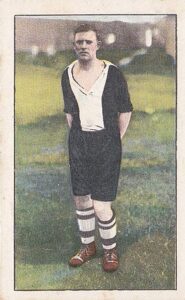
Cees van der Zalm (1901-1957) Dutch National Footballer and Australian Coach
Cees van der Zalm was a Dutch footballer born on September 30, 1901, in Loosduinen, The Hague. He had a notable career with the Netherlands National Football team (Oranje), playing three matches between 1927 and 1929.He played for VUC in The Hague and captained the club until his retirement of
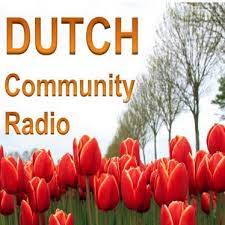
Dutch Community Radio Western Australia
The history of Dutch Community Radio in Western Australia is rich with dedication and passion from its volunteers. It began nearly 50 years ago with reel-to-reel tapes and has evolved significantly since then. Initially established through the Multicultural Radio and Television Association (MRTA), the Dutch program aired on Radio 6NR
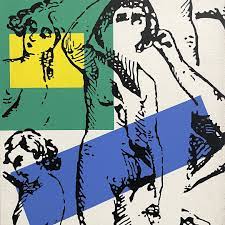
A Visual Exploration of Dutch and Eurasian Experiences in Indonesia Amidst Turbulent Times
Abstract of a review titled: Review: Landscape of the soul by Ron Witton An exhibition titled “Landscape of the Soul,” is shedding light on the often-overlooked experiences of European Dutch and Eurasian individuals in Indonesia during pivotal historical epochs. The narrative unfolds against the backdrop of Japanese Occupation, the Revolution,
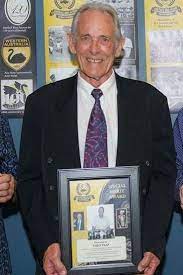
Theo Paap: A Dutch-Australian Football Legend
Theo Paap’s journey from Amsterdam to Perth in 1956 marked the beginning of a remarkable career in Australian football. Born in Amsterdam in 1943, Paap quickly immersed himself in the local Dutch football scene, joining the Windmills Football Club (now Morley Windmills). He immediately made an impact, rising through the
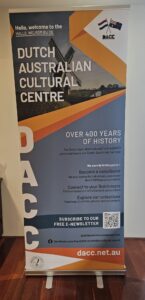
Collaboration with Dutch organisations in Australia
A revitalised Dutch Australian Cultural Centre (DACC) operates digitally Australia-wide and even internationally. The DACC was established in 1983 to oversee the preservation of Dutch heritage in Australia, including maritime history, migration, businesses, and the Dutch presence in Australia during World War II. For most of its existence, the DACC
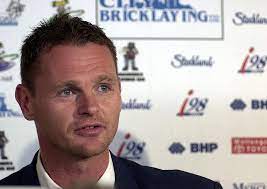
Socceroo Mike Petersen: A Legacy of Dutch Heritage and Football Mastery
Mike Petersen, born of a Dutch father and an Australian mother on May 6, 1965, in Melbourne, emerged as a stalwart midfielder whose illustrious career spanned continents and left an indelible mark on Australian football. Rooted in his Dutch heritage, Petersen’s journey from the grassroots of Port Melbourne juniors to
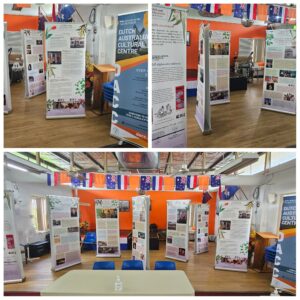
Exhibition and presentation – Brisbane – The heritage shared between the Netherlands and Australia (1606 – 2016)
Post-event reflections (added 6 March 2024) The lecture and exhibition by Dr. Nonja Peters was well-attended by members of the DACC and the Dutch Club NAQ, as well as by interested members of the public. Attendance was approximately 35-40 people, and Dr. Peters received keen questions from the audience. After
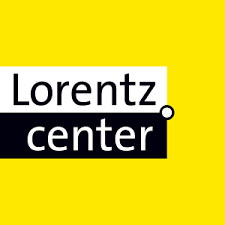
Migrant (R)e-collections- Proposal for a workshop (historic)
All over the world migrants have left multiple traces, deep traces that are indispensable forthe fostering of heritage communities and for research in the humanities and social sciences.Yet the growing societal demand for cultural services and the increasingly insufficientresources available to manage migrants’ cultural heritage is creating a gap —
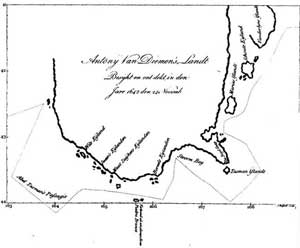
Abel Tasman Landing Site – Tasmania 1642
The Tasman expedition left Batavia (Netherlands East Indies, now Jakarta, Indonesia) on 14th August 1642 with two vessels, the Heemskerk with a 60-man crew and the Zeehaan with 50 men on board. They first called at Mauritius, where they stayed for a month-long repair to both ships. Intending to sail
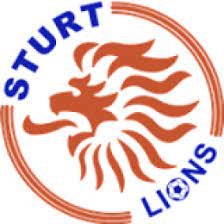
Orange Soccer Club lives on as Sturt Lions in Adelaide
The name of the current Sturt Lions Soccer Club shows the Dutch heritage of the club, the club still plays in orange and has the Dutch Lion in its logo. The Orange Soccer Club was formed in 1953 by Dutch migrants. In 1963 the club amalgamated with the Sturt Soccer
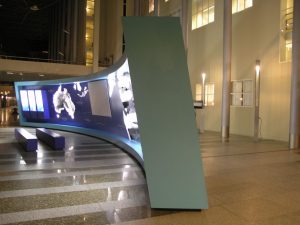
‘Inpakken en wegwezen – emigratie van Nederlanders naar Australië’
Hieronder is het Initiatiefrapport (gedateerd: 17 december 2004) van de tentoonstelling met de werktitel: ‘Inpakken en wegwezen – emigratie van Nederlanders naar Australië’ . Deze exposities was georganiseerd in het kader van het evenement ‘1606 – 2006; 400 jaar relaties Nederland – Australië’. In 1606 voer het VOC-schip Duyfken vanuit
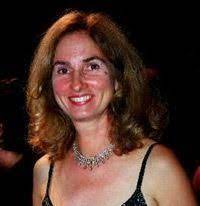
Annita van Iersel former spouse of PM Paul Keating
Anna Johanna Maria van Iersel born on October 5, 1948, is an accomplished Dutch-born Australian artist and the former spouse of Paul Keating, the ex-Prime Minister of Australia. She held the name Annita Keating from 1975 to 1998. Originally hailing from Oisterwijk, North Brabant, Netherlands, Annita pursued language studies in
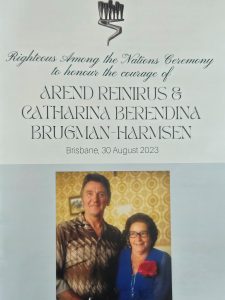
Arend and Catherina Brugman – Righteous Among the Nations
On 30 August 2023 Arend Reinirus and Catherina Berendina Brugman-Harmes were posthumous awarded the title: Righteous Among the Nations by Mr Chris Cantor the Deputy Chief of Mission of the Embassy of Israel in Australia. The medal and certificate were received by their granddaughter Mrs Anne-Marie Buttigieg. Her grandparents with
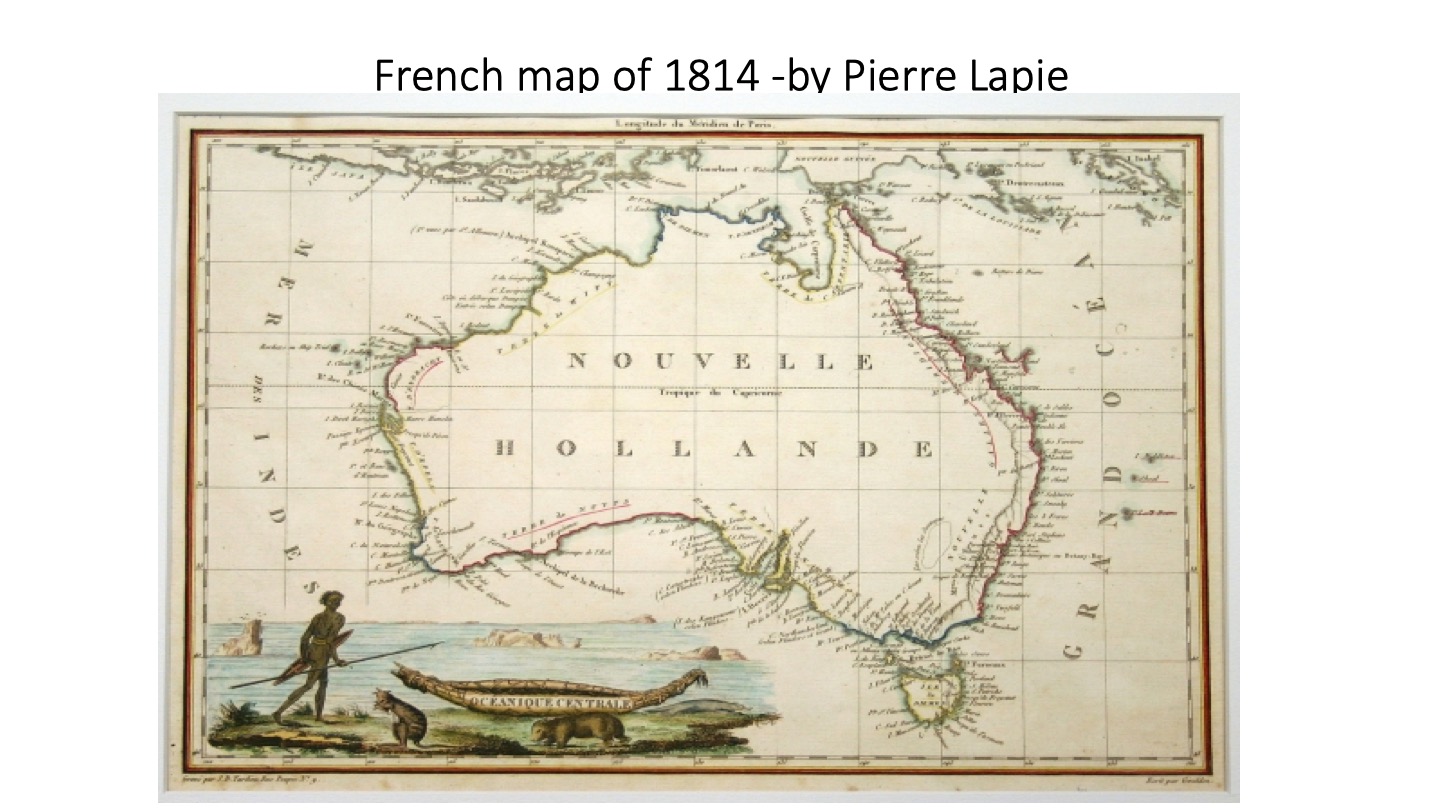
Dutch Australians at a Glance (DAAAG)
Introduction DAAAG was created to be an accessible, easy to navigate, multimedia internet service dedicated to the sustainable digital preservation of Dutch Australians’ cultural heritage – for use by scholars, researchers, bureaucrats, journalists, Dutch individuals and other digital end users worldwide. DAAAG is an initiative of the History of Migration
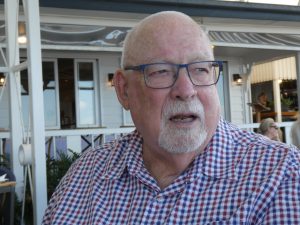
Interview: Henk Mollee – Hollandia Soccer Club – F.C. Lions
Australia is a land of immigrants. I am an immigrant, and you, dear reader, are probably too. High levels of immigration in the years before 1891 resulted in 32% of the population listed as overseas-born in Australia’s first country-wide census in 1891. These numbers decreased substantially in the first half
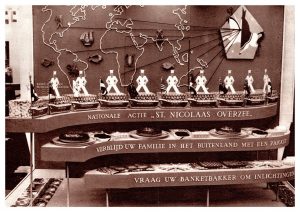
Sinterklaas Overseas Foundation
Family in Holland could have a Sinterklaas package sent to their relatives overseas. There was all kinds of stuff in there. Candy, calendar, teaspoon, gramophone record, booklets, tablecloth, you name it. In the DACC archives is a tablecloth and sugar bowl from such a package (see below). See also: Sinterklaas
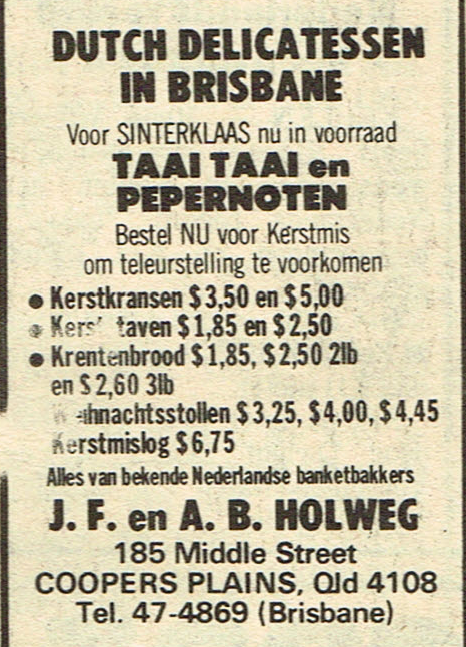
Sinterklaas Treats
Pepernoten: The Traditional Sinterklaas DelicacyIs Christmas Eve truly complete without gingerbread cookies? Sinterklaas festivities naturally include these delightful treats, making them an essential part of the celebration. Gingerbread cookies, available at Dutch shops or enjoyable to make at home, hold the top spot on our list of Sinterklaas treats. Engage
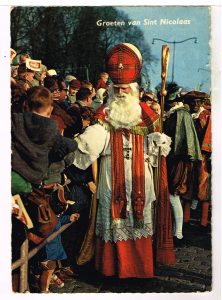
Sinterklaas celebrations at Dutch Clubs in Australia
These are photographs and Dutch Australian Weekly (DAW) newspaper clippings from the DACC archives of Sinterklaas celebrations within Australian club from the early fifties onwards. Dutch Australian Weekly newspaper clippings The DAW also used Sinterklaas to promote a subscription to the newspaper as a Sinterklaas gift Information on the Dutch
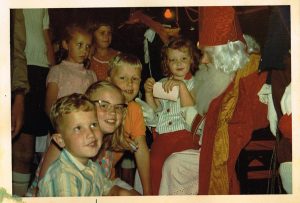
Sinterklaas in Australia
The story of Sinterklaas (Sint Nicolaas) is of course well known, there is plenty of information on the internet about this typical Dutch tradition. Although it has changed over the years due to changes in society e.g. the arrival of radio, television, internet as well as an increasingly more multicultural
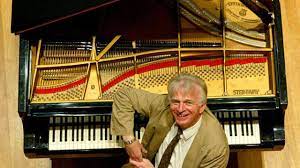
Gerard Willems – Dutch-Australian piano virtuoso
Gerard Willems AM is a Dutch Australian classical pianist and double ARIA award winner. He came by boat (Grote Beer, Holland-America Lines) with his family in 1958 and went through several years of migrant camp experience. You can see a glimpse of his work here: See also: Gerard Willems Interview:
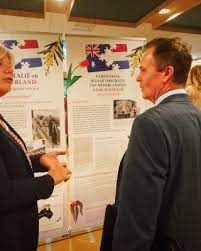
Project Migrant Australian and Dutch emigrants
In February 2023, Australian Ambassador Dr. Greg French and State Archivist Afelonne Doek opened the temporary exhibition People Movement Stories in the Netherlands National Archives in The Hague. Since that time the exhibition has also been travelling to Perth, Brisbane and Melbourne. In the exhibition, twelve people tell the story
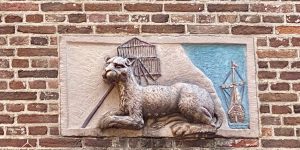
Cape Leeuwin Gable Stone in Amsterdam
Verenigde Oostindische Compagnie – VOC – (Dutch East India Company) related gable stone with a lying lioness in the ‘gable stone wall’ at the Oudezijds Kolk in Amsterdam. The stone comes from Kleine Kattenburgerstraat 14/16 and was found there by Van Arkel and Weissman (Noord-Hollandsche Oudheden 6destuk (1903) page 43).
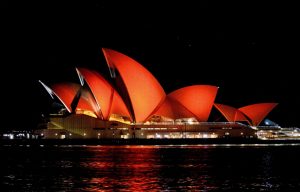
Dutch involvement in the Sydney Opera House
The Sydney Opera House, opened on 20 October 1973, and stands tall as an iconic symbol of Australian culture. Queen Elizabeth II officially opened it, emphasising the power of human creativity. The Sydney Symphony Orchestra performed at the official opening, under the direction of Dutchman Willem van Otterloo. The orchestra’s
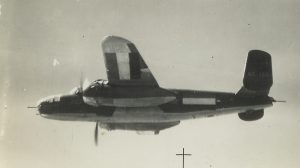
Archived: Dutch WWII historian visits Brisbane on 17 November
Presentation on Australian-Dutch WWII events at ANZAC Square & Memorial Galleries Camp Columbia Heritage Association invites you to a presentation by Dutch historian Bas Kreuger on Dutch Australian WWII events on 17 November 2023 at the ANZAC Square & Memorial Galleries. Reservations are limited to 60 persons. Register for free
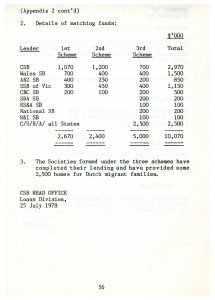
N.E.S.I.S. Netherlands Savings and Investment Society Ltd.
This institution was a non-profit organisation established to provide extra finance to people of Dutch descent for home improvements, especially those who related to the Netherlands Co-operative Housing Society (formerly the Netherlands Co-operative Building Societies, whose name was changed in 1981). The affairs of N.E.S.I.S. are managed by the same
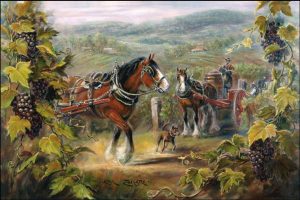
Almar Zaadstra – Painter of Australian history
Almar Zaadstra is an Australian artist based in Casterton, Victoria. Almar arrived in Australia at the age of 6 in 1966, the 4th of six children born to Sake and Ytje . They left Oudega in Friesland , Netherlands, to give their boys a brighter future in a new country,
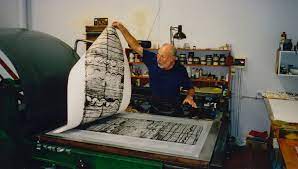
Master Lithographer Fred Genis- first celebrity printer in Australia.
Fred Genis (1934 Amersfoort, Netherlands – 2022 Mullumbimby, Australia) was a Master Lithographer and the first celebrity printer in Australia. Genis was a partner in the Hollanders Workshop in New York in the late 60’s, early 70’s, working with artists like Robert Rauschenberg, Willem De Kooning, Sam Francis, Jasper Johns, Larry Rivers
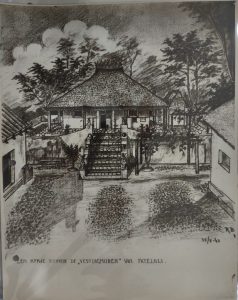
Amazing drawings from Timor fighter Richard Bartman who drowned at the sinking of the HMAS Armidale (1942).
By Gerard van Haren Richard was born on January 3, 1913, in Probolinggo, situated on the island of Java. He held the position of a militia sergeant, bearing the title tkl (2nd class), and was identified by pedigree number 13613. On December 15, 1941, he received his assignment for the
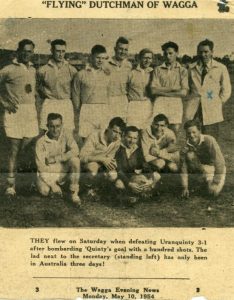
Clogball: Remembering the 38 Dutch football clubs of Australia
From the book Clogball – The Dutch and Soccer in Australia. A migrant Story. By Adam Muyt If you think the Dutch have never won a World Cup you’re mistaken: Holland won a World Cup back in the 1950s. Huh? More than 1.25 million European immigrants poured into Australia in the
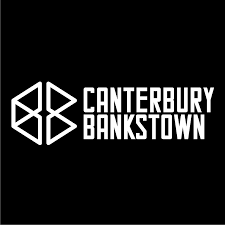
De Nederlandse Vereniging in Bankstown
The following information was written in 1985. The Club no longer exists This club is at the moment in a kind of transition state. Many of its old members have moved and their children live too far away from Bankstown and have started their own interest groups further away in
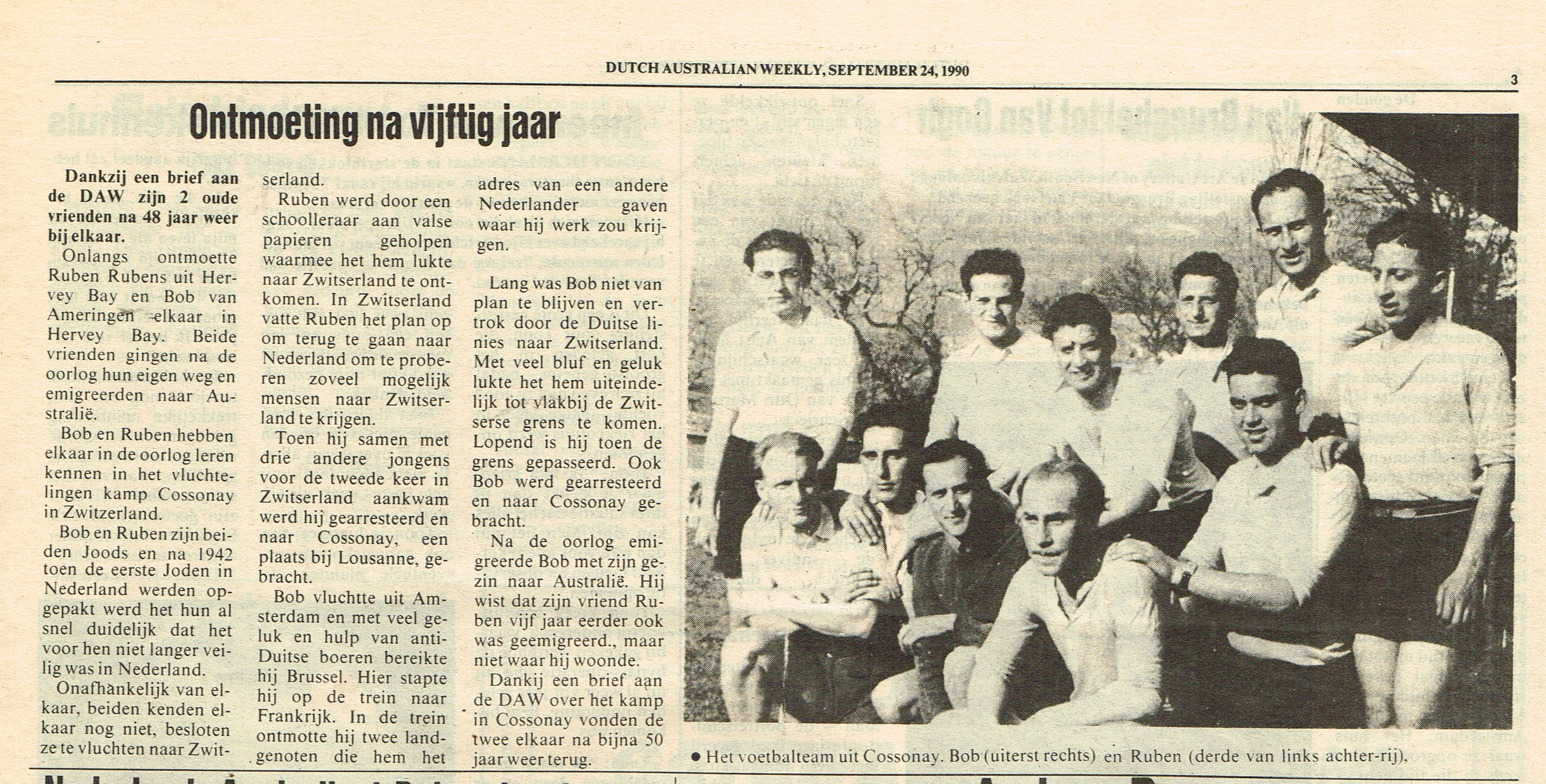
Dutch Jewish refugees met again in Australia
Article about Ruben Rubens and Bob van Ameringen. They were friends in the Netherlands before WWII when their lives were disrupted. They became refugees but eventually, separately, settled in Australia. Here after 50 years they met each other again for the first time.
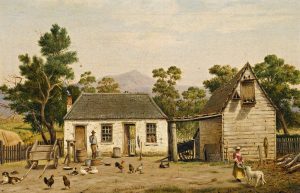
Dutch-Australian painter Henricus van den Houten (1801-1879)
Henricus Leonardus van den Houten (The Hague 1801- Melbourne 1879) was a Dutch-Australian painter, lithographer, and art teacher. He developed a passion for art at a young age. He studied painting and honed his skills under the guidance of renowned Dutch artists, specialising on portrait paintings. He worked in Leiden,
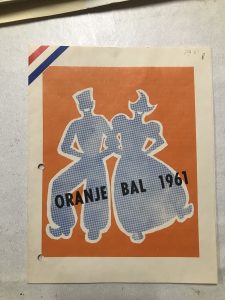
Archive Nederlandse Vereening in NSW
Main article Nederlandse Vereeniging in NSW This is one of the very first Dutch Clubs in Australia, established in 1944.
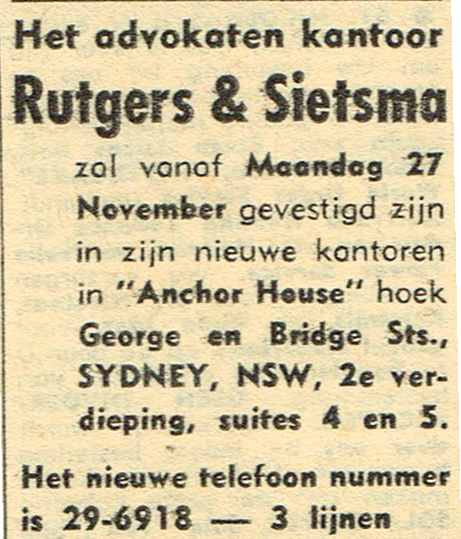
Dr. Sir Hendrik Johan Rutgers (1917-1997)
Gedurende de Tweede Wereldoorlog was Henk verzetsstrijder tijdens de Duitse bezetting van Nederland. Na de oorlog werd hij uitgezonden naar Batavia in het voormalige Nederlands Indie als Officier van Justitie bij de berechting van Japanse oorlogsmisdadigers. Hij ontmoette daar voor het eerst Dick van Arkel. Beiden realiseerden dat Australia hen
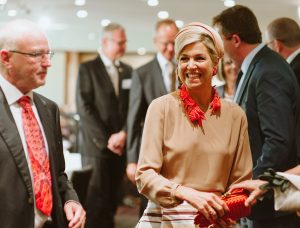
Royal Netherlands State visit to Australia 2016
The state visit of His Majesty King Willem-Alexander and Her Majesty Queen Máxima of the Netherlands to Australia in October/November 2016 was a significant diplomatic event that strengthened the ties between the two countries. Here is some information about their visit: During their visit, King Willem-Alexander and Queen Máxima visited
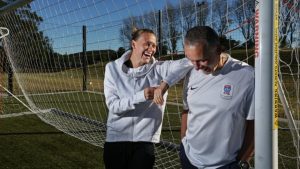
Dutch heritage of Australian football players Gary and Emily van Egmond
Gary van Egmond was born in Newcastle in 1965. His family had emigrated to Australia at an earlier time. He played professional football for the Newcastle United Jets and the Australian national team. He also coached the Newcastle Jets and the Australian national team. He married Anette and they have
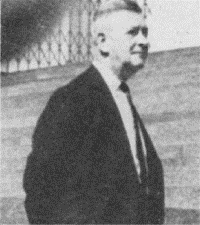
Dr. Cornelius Wouters, champion of Dutch culture.
Dr. Cornelius Willebrod Wouters (18 August 1896, Waspik -20 January 1978, Brunssum). During his youth and early adulthood he moved around the Netherlands. He met his wife in Waalwijk and after several other jobs became a translator for the Dutch National Mines (Staatsmijnen) in Heerlen. He migrated to Australia in
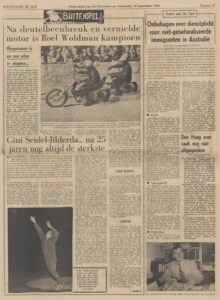
Australia emigration in Dutch Newspapers 1954-1978
Dr. C Wouters has been the most important person during the emigration period between 1950 and 1980 representing the Dutch emigrants in Australia. He tirelessly advocated for recognition of Dutch culture, history and especially its language. He was a prolific writer of articles and letter to the editors in the
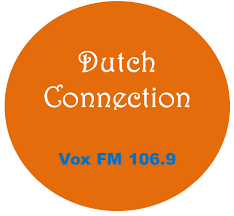
Dutch Connection – Dutch Radio for the Illawarra
By Dr. Yoke Berry from Dutch in Wollongong, released at the celebration of the 25th anniversary of the Dutch Connection radio programme. On Sunday the 9th of November 1997, the first Dutch program in the Illawarra was broadcast on the community radio station VOX FM 106.9. For the programmers and listeners
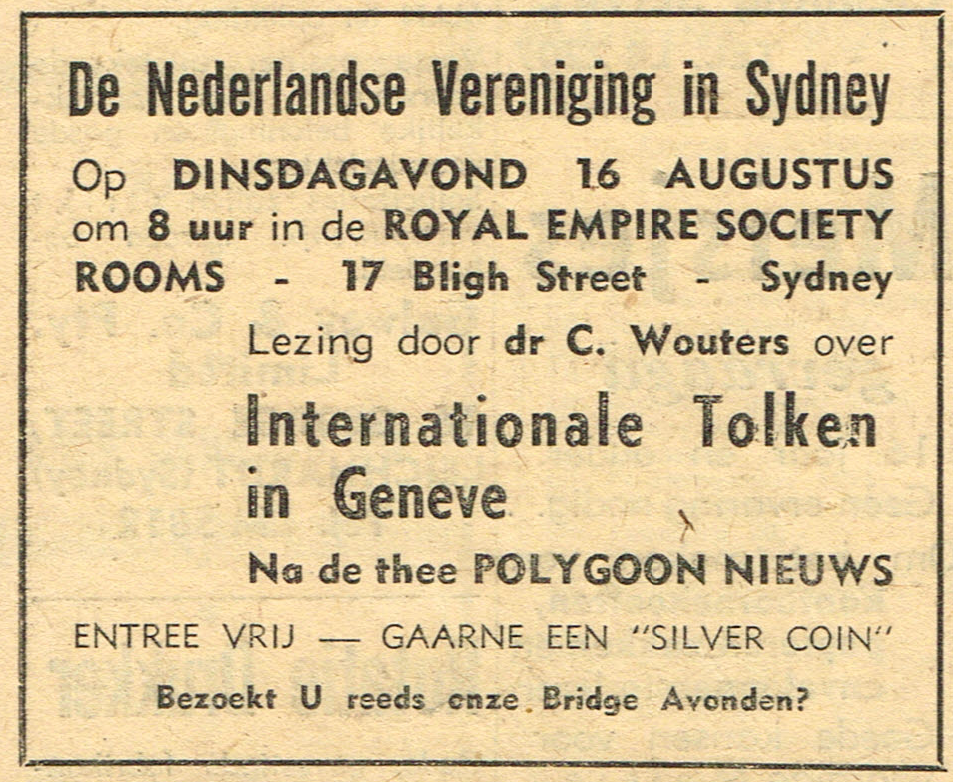
Nederlandse Vereniging in NSW (1944-2008)
This is one of the earliest Dutch Clubs in Australia, founded in 1944. The official name was first Nederlandse Vereeniging in Nieuw Zuid Wales (N.Z.W), later documents state Nederlandse Vereniging in NSW and later the more common name was used Nederlandse Vereniging in Sydney or in English Netherlands Society in
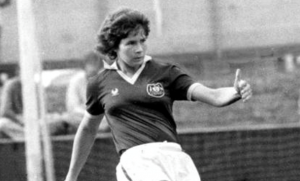
Rose van Bruinessen – Dutch heritage in the early Matildas
Rose van Bruinessen (later known as Rosemary Moodley) was one of the pioneering figures in Australian women’s football. Known as Matilda #10, she played a significant role as a defender in the foundational years of the Australian Women’s National Football Team — now world-renowned as the Matildas. Rose was born
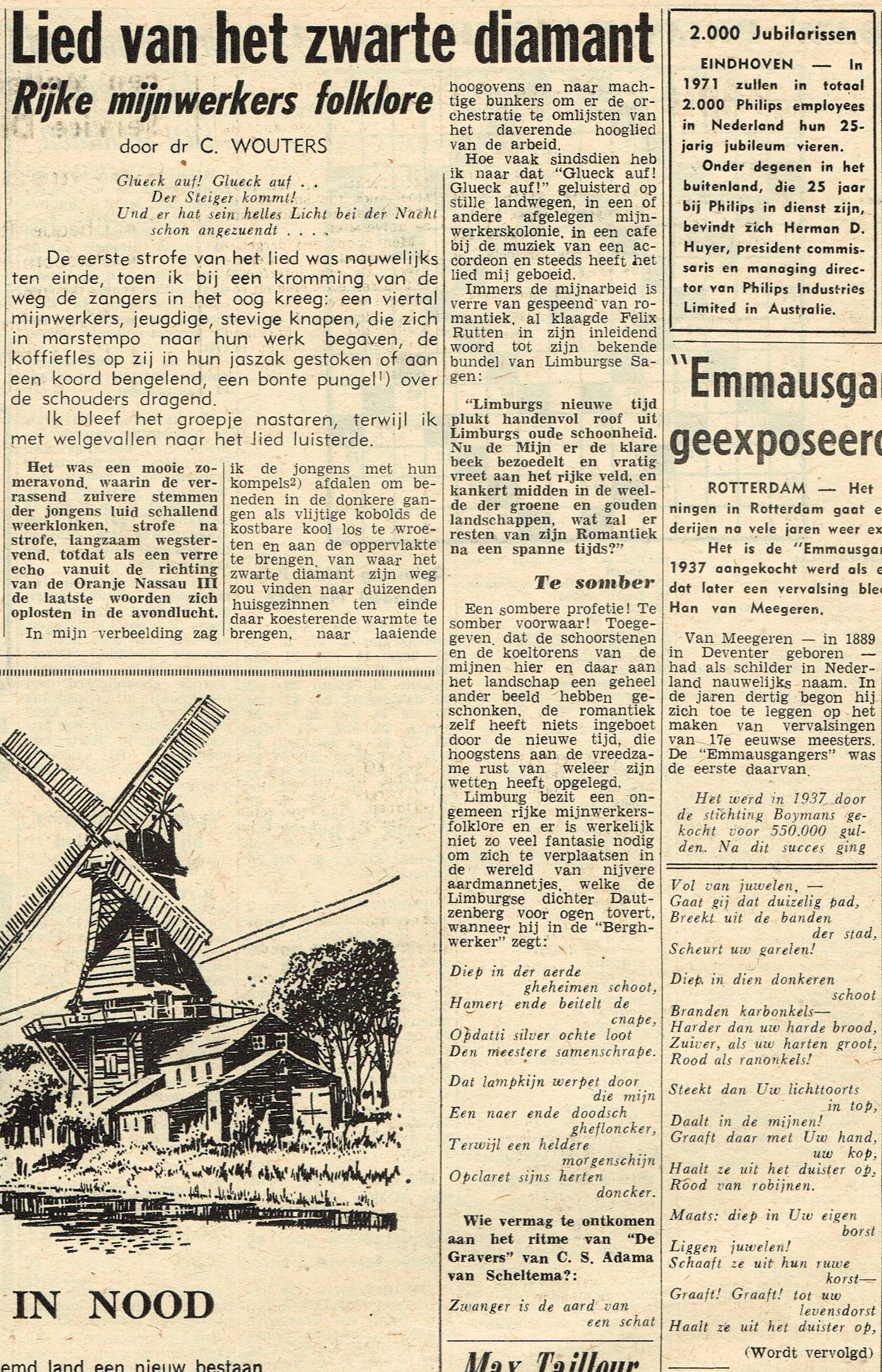
Articles, Poems and Letters to the Editor from Dr. C Wouters
Dr. Wouters did not shy away from controversial issues. He refused to swear allegiance to the Queen during his naturalisation ceremony, instead he was allowed to swear on the Bible, something that since that time has been accepted by the Australian Government. He advocated for equality for migrants within various
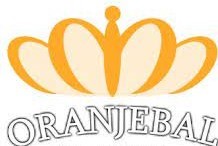
De Nederlandse gemeenschap in het sociale leven van Australia – 1958
The Dutch community in social life in Australia.
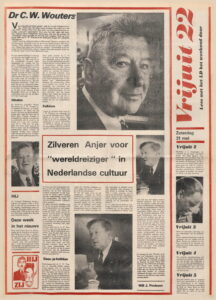
Many awards bestowed on Dr Wouters
Dr. Cornelius Wouters is most likely the internationally most awarded Dutch-Australian. He was awarded the Knighthood in the Order of Oranje-Nassau. He also received the Silver Anjer from the Prins Bernhard Fonds in 1976 for his contribution to the preservation and promotion of Dutch culture in Australia. The Silver Anjer
Stephanie Branz – Dutch-Australian Sports-commentator
In this video clip from the National Archives of Australia Stephanie talks about her Dutch heritage. Stephanie Brantz is a television presenter and sports personality from Australia. Born in 1972 in Queensland to Dutch parents to Phillipa and Hans Branz, she began her modeling career in 1985 while attending St
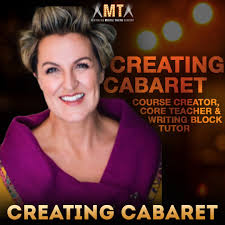
Dutch/Australian Artist Queenie van de Zandt Invites Dutch women over 40 to share their stories of menopause and middle age
Queenie van de Zandt is the daughter of Ria and Hans van de Zandt. Hans is the co-founder of the Canberra Dutch Club in the ACT. Queenie mentioned that she is very proud to be Dutch and that parts of her Dutch heritage have influenced her writing. In particular in
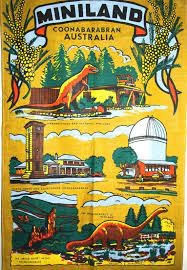
Peter Zorgdrager established Miniland in Coonabarabran
Miniland was a theme park in Coonabarabran, New South Wales, Australia. It was opened in 1972 by Peter Zorgdrager, a Dutch immigrant who was inspired by Dusneyland. The park featured a variety of giant sculptures, including dinosaurs, animals, and landmarks from around the world. It also had a children’s playground,
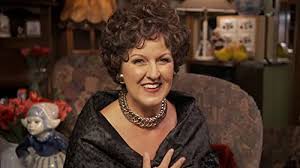
Jan van de Stool – the Dutch/Australian comedic, alter-ego of performer Queenie van de Zandt
Jan van de Stool, International Musical Therapist – was a successful Real Estate Agent before giving it all up and making a natural progression into becoming a Self-Help Guru. She lives in Woy Woy, with Pieter, her husband and cousin, and their son Henk, and promotes her unique brand of
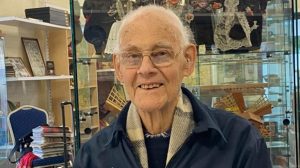
Ype De Bruin OAM leading figure in the Dutch Community in Victoria
Ype is the President of the Associated Netherlands Societies in Victoria; a position he has held for 29 years. He worked for 32 years with the Gas & Fuel Corporation, during which time he held several management positions and set up a training school in Victoria for technical and non-technical
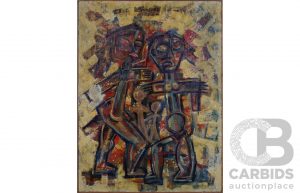
Dutch-Indonesian-Australian Geophysicist and artist William Wiebenga
William Alexander Christiaan Johannes Wiebenga was an Indonesian-Dutch-Australian geophysicist and artist. He was born in Benkoelen, Indonesia (now known as Bengkulu, Indonesia) on December 5, 1910. His father with the same name, William Alexander Christiaan Johannes Wiebenga, was a Dutch civil servant. His mother Jeanne Helene de Rochemont was born
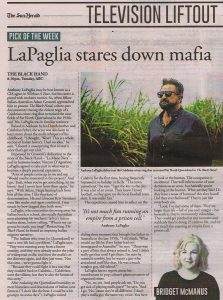
Australian Actor Anthony LaPaglia has Dutch Ancestry
Maria Johannes Brendel is a secretary and the mother of Australian actor Anthony LaPaglia. She is originally from the Netherlands and has Dutch ethnicity. Her husband Gedio “Eddie” LaPaglia, emigrated from Bovalino, Province of Reggio Calabria, Italy. They had two other sons, the Australian actor Jonathan LaPaglia and Michael LaPaglia,

Dutch Football Club Austral Sydney
Dutch Football Club Austral was a soccer club that was founded in Sydney by a group of Dutch immigrants, under the name Hollandia at the Black Tulip Restaurant in George Street in 1949. Its restaurateur David Bos became the first president and also was its main sponsor. The first game
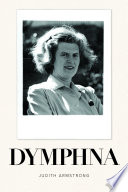
Hilma Dymphna Lodewyckx married to Manning Clark.
Hilma Dymphna Lodewyckx (1916-2000) was the daughter of Augustin Lodewyckx and Anna Sophia Hansen. She was born in Stellenbosch, South Africa and later moved to Melbourne, Australia with her family when her father was appointed lecturer at the University of Melbourne. She mainly used her middle name Dymphna. Her father
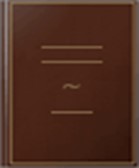
Dutch in Victoria – Henk Overberg
Dutch Communal Life in VictoriaBy Henk Overberg Henk Overberg’s detailed sociological and historical analysis of the Dutch in Victoria reveals that ethnic communities do not simply emerge by demographic presence alone. Rather, they must be made—through shared identity, communal interaction, organisational structures, and the development of collective memory. Overberg contends
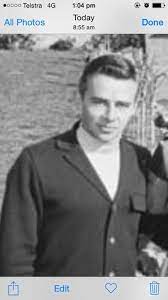
Jan Wakker jockey
Jan Wakker was a Dutch-Australian jockey who had a successful career in horse racing. He was born on January 10, 1943, in Groningen, and emigrated to Australia in 1950. His family settled in Moe. Fred Wakker (Jan’s father) found a racing pigeon in the family loft and decided to chase
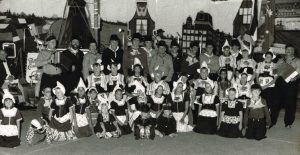
Dutch Folk Dancing Group
Dr. Cornelis Wouters was the founder of the Dutch Folk Dance Group, a group of over 30 enthusiastic Dutch immigrants (later joined by Australians who married Dutch immigrants). They performed folkloric dances at charitable association gatherings. No other group could boast such original national costumes, as all Dutch regional costumes
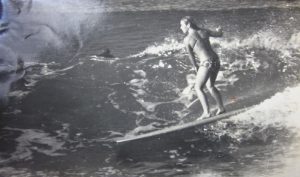
Surf Champion Dorothy de Rooy
Dorothy De Rooy (Vidgen) is a former professional surfer and champion who was born in Breda, Netherlands in 1948. When she was three years old, her family immigrated to Australia, and they eventually settled in Mona Vale, where her maternal grandparents were already living. Dorothy attended Mona Vale Public School

Journalist and publisher Jan Rempt
‘Aan de rand der wereld. Een Hollandse emigrant in Australië’ with a foreword written by B.W. Haveman, Regeringscommissaris voor de Emigratie (Government Commissioner for Emigration) was published in Dokkum by Schaafsma & Brouwer in 1953. The book is written by Jan D. Rempt, a Dutch journalist who immigrated to Australia
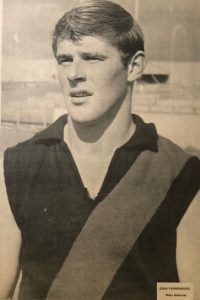
Footballer John “Jack” Pannenburg
John “Jack” Pannenburg was born in1946 in Arnhem, the Netherlands. His family immigrated to Australia when he was young, and he grew up in Mount Gambier, South Australia. Pannenburg was a talented footballer, and he joined West Adelaide Football Club in the South Australian National Football League (SANFL) in 1966.

Geschreven portretten van Nederlandse emigrantenpriesters in Australië – 1994
A Book Review: Written Portraits of Dutch Migrant Priests in Australia The book Geschreven portretten van Nederlandse emigrantenpriesters in Australië, translates to Written portraits of Dutch migrant priests in Australia in English. It was edited and adapted by J.W.P. Elferink from the original manuscripts of Theo van der Meel, a
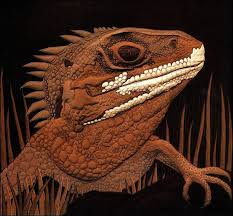
Textile artist Annemieke Mein
Annemieke Mein was born in Haarlem, in 1944. Her Dutch heritage has had a significant influence on her art. Growing up in the Netherlands had a profound impact on her appreciation for nature and the environment. She spent much of her childhood exploring her grandparents’ garden in the Netherlands and

Dr. Cornelis Wouters and the Dutch language
In the 1950s, Dr. Cornelis Wouters advocated for more attention to be given to the culture of the countries from which many immigrants had settled in Australia, in the country’s education system. He argued that this could be achieved by broadening the curriculum to include lessons in languages other than
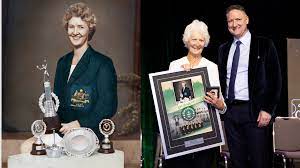
Netball champion Ingrid Huisken
Ingrid Huisken is a Dutch-Australian former netball player who had a successful career playing for both Australia and the Netherlands. She was born on January 16, 1961, in Leiden. Her family migrated to Australia when she was 12 years old in 1973. Ingrid began her netball career playing for the
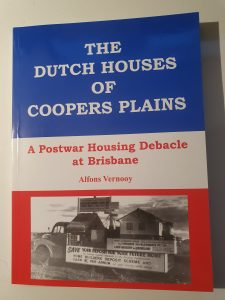
The long Dutch relationship with the Southern and Southeast suburbs of Brisbane.
The long Dutch relationship with Southeast Brisbane began during World War II, when in 1942 the Americans established Camp Columbia in Wacol, Brisbane to stop the Japanese advance in the Southwest Pacific. The camp became the staging ground for the American campaign, covering an area of 20 by 15 square
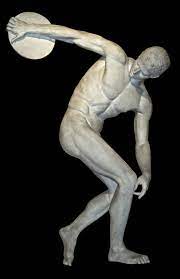
Peter Tangelder discus throwing champion.
Peter Tangelder is a former Dutch-Australian discus thrower who had a successful career in the sport. He was born on December 13, 1958, in the Netherlands, and migrated to Australia in the early 1980s. Tangelder was a member of the Australian athletics team for several years and competed in many
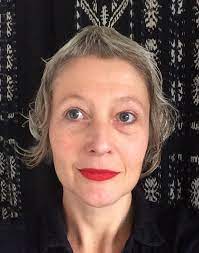
Manon van Kouswijk – jeweler
Manon van Kouswijk, a Dutch artist born in 1967, has been residing and creating in Melbourne since 2010. She received her education at the Gerrit Rietveld Academy in Amsterdam, where she later became the Head of the Jewellery department from 2007 to 2010. Central to Manon’s artistic approach is her
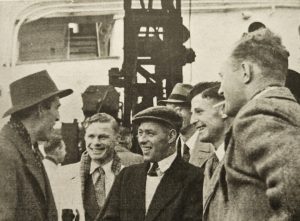
Dairy cows and dairy products in Dutch-Australian emigration literature, 1945-1965
Melkkoeien en zuivel in Nederlands-Australische emigratieliteratuur, 1945-1965 This is the original article by Prof. Ton van Kalmthout with graphics, pictures and source references in Dutch. Below that is a PDF of the article’s English translation. Author: Professor dr. A.B.G.M. (Ton) van Kalmthout – senior-onderzoeker Literatuurgeschiedenis | Koninklijke Nederlandse Akademie van
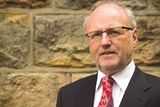
Paul Budde co-founder of the UN Broadband Commission for Digital Development
Paul was born in Vught on 8 September 1950. His parents Herman Budde and Annie Velthuis were born in Ootmarsum. (See also: The War of my Parents) In 1953 the family moved to Oss. Paul has a sister Monique and brother Rob. After his education and military service, Paul worked
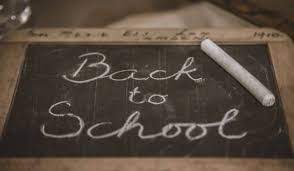
Dutch schools and courses
Schools (listed alphabetically) Dutch Courses (listed alphabetically by provider) Books Nederlands als 2e taal
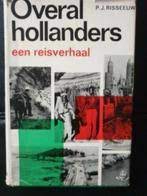
Everywhere Dutch (Overal Hollanders) book by J.P Risseeuw – 1965
“Overal Hollanders” by Pieter Johannes Risseeuw (1901 – 1968) is a historical account of Dutch migration and settlement around the world, focusing in particular on Australia. The book was published in 1965 by Bosch & Keuning N.V. in Baarn, the Netherlands. In “Overal Hollanders,” Risseeuw traces the history of Dutch
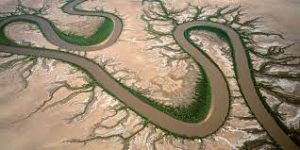
Dutch-Australian photographer Richard Woldendorp
This article is written with the assistance of Richard’s wife Lyn she also made the photo selection below. Lyn is a photo librarian and has been doing this for 60 years. Richard Woldendorp was born in Utrecht, Holland on the 1st January 1927, and lived for some time in Leeuwarden
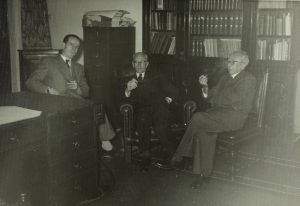
Augustin Lodewyckx introduced the first university course in Dutch in Australia
Augustin Lodewyckx (1876-1964) was a Belgian scholar and professor who made significant contributions to the study of modern languages in Australia. He was born on December 8, 1876, in Booischot, Belgium, the son of Joannes Lodewijckx, a farmer, and his wife, Maria Dymphna Maes. After completing his secondary education in
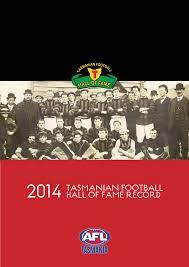
VFA top football scorer 1966 – Ben Nusteling
Ben Nusteling was a Dutch Australian Australian Rules footballer who was born in Dordrecht, Netherlands, on February 27, 1939. His family immigrated to Australia when he was a child, and he grew up in the Melbourne suburb of Prahran. Nusteling played for the Prahran Football Club in the Victorian Football
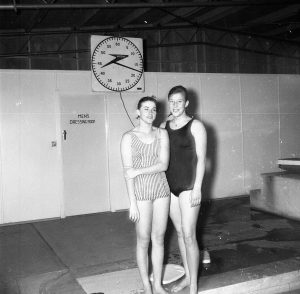
Marguerite Ruygrok – Olympic Breaststroke Swimmer
Marguerite Ruygrok was born on June 3, 1947, in Amsterdam, the Netherlands. She migrated with her family to Australia at a young age. She began swimming at an early age and showed considerable talent for the sport, particularly in breaststroke events. Ruygrok first came to national attention when she won
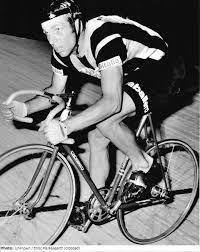
Henk Vogels Olympic Cyclist
Henk (Hendricus) Vogels (Haarlem, 1 November 1942 – 9 August 2019) was a Dutch professional cyclist who immigrated to Australia with his parents and siblings in 1955. His father, a plumber, settled the family in Riverton, Western Australia. His father supported him in establishing his cycling career and this resulted eventually

Nelleke Jol – founder Western Australian Women’s Gymnastics Association
Nelleke (Nelleck) Jol is a former Dutch Australian gymnast and coach who has made significant contributions to the sport of gymnastics in Western Australia. Jol was born in the Netherlands and moved to Australia in the 1970s. She represented Australia as a gymnast in the 1979 World Championships held in
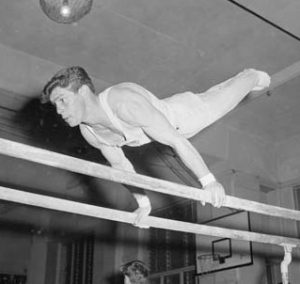
Gymnastics Olympian Benjamin de Roo
Benjamin Hielke de Roo was a renowned Australian gymnast who was born on 11 February 1940 in Enschede. His family emigrated to Australia in 1957, and he became an Australian citizen in 1960. De Roo started his gymnastics career in the Netherlands and continued his passion for the sport when
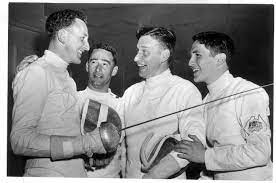
Fencing Olympian Hilbert van Dijk
Hilbert van Dijk was born on 24 September 1918 in the Netherlands, and he grew up in Amsterdam. He learned to fence at a young age and became one of the top epee fencers in the country, consistently ranked among the top six. Van Dijk immigrated to Australia in 1948,
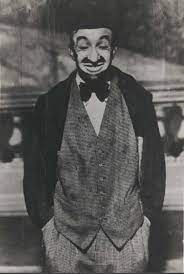
Harry van der Sluys famous Australian comedian
Hyam van der Sluice (sometimes spelled “Sluys”) was born in Amsterdam, the Netherlands, in 1855 and arrived in Adelaide, Australia, in 1882. He married Amelia (nee Barnett)in Adelaide in 1886, and they had seven children. Hyam was of Dutch-Jewish heritage, while Amelia was of English-Jewish heritage. Hyam passed away in
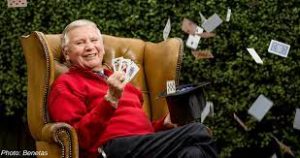
Magician Rids van der Zee (1923-2003)
Rids van der Zee was a Dutch-born magician who immigrated to Australia in 1954. He was born in the Frisian town of Franeker, in 1923. Van der Zee was a skilled magician who specialised in close-up magic and sleight of hand. He performed under the stage name “Rids the Flying
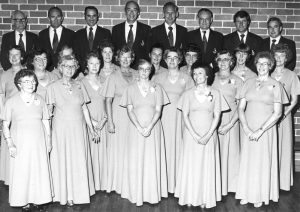
Sunrise Choral Society – Blacktown
Sunrise Choral Society was a Dutch choral group that formed in Blacktown in 1959 under the name “Morgenrood”. Initially their repertoire was purely Dutch., however they became increasingly more anglicised. They held an International Festival of Song, Dance, and Music in 1976 as a fundraiser for the Blacktown Hospital. Other
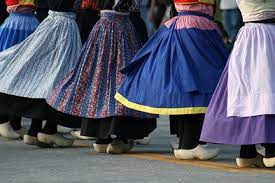
Dutch Choir and Folkloric Group Dee Why
The Dutch Choir and Folkloric Group Dee Why was a choral group formed by 25 Dutch parishioners of the Dee Why Presbyterian Church in Sydney, Australia in 1958. Initially, the group was primarily focused on performing liturgical music for the church, but it later expanded its repertoire to include Dutch

Jan Willem van Otterloo conductor of Melbourne and Sydney Orchestras
Jan Willem van Otterloo was a prominent Dutch conductor who achieved great success both in his home country and in Australia. He was born on December 27, 1907, in Winterswijk, Netherlands, and began his music career as a cellist before turning to conducting. He studied at the Amsterdam Conservatory and
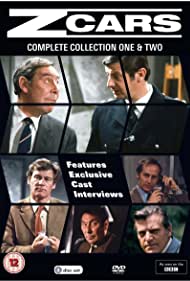
Opera singer Pieter van der Stolk
Pieter van der Stolk was born on September 14, 1934, in Amsterdam. Pieter van der Stolk during his time with Opera Australia. Supplied: Sandie van der Stolk. At a certain stage he moved to Britain, where he appeared in several BBC television shows and films, including “Z Cars,” “Doctor Who,”
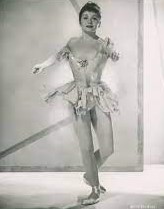
Ballet Dancer Willy de la Bye
Willy de la Bye was born on August 25, 1934, in The Hague, Netherlands. She began her dance training at a young age and went on to study with several renowned teachers and choreographers in Europe, including Maurice Béjart and Martha Graham. In 1957, de la Bye joined the Dutch
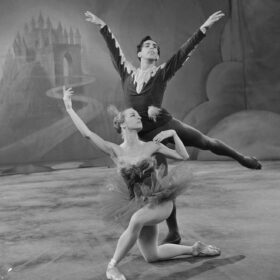
Jaap Flier Artistic Director of the Dance Company of NSW 1976-1982
Jaap Flier was born in Scheveningen the Netherlands, on 27 February 1934. He began dancing at a young age and went on to study ballet at the Royal Ballet School in London in the 1950s. After completing his training, Flier returned to the Netherlands, where he danced with the Dutch
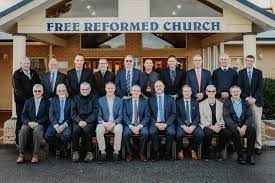
Free Reformed Church of Australia
The Free Reformed Church of Australia (FRCA) is a Protestant denomination that has its roots in the Dutch Reformed tradition. The church was established in the 1950s in Australia, as a result of Dutch immigration to the country. The FRCA subscribes to the Three Forms of Unity (Belgic Confession, Heidelberg
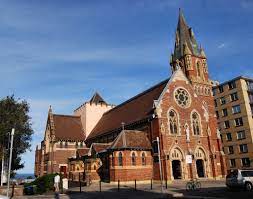
“Het Kompas” for the Dutch Catholic Community in Sydney.
“Het Kompas” was a Dutch-language publication that was established in Sydney in the early 1950s, by Catholic Dutch Migrant Organisation (CDMO) (Katholieke Nederlandse Migranten Organisatie – KNMO). It was a Catholic publication aimed at serving the Dutch Catholic community in Sydney and the surrounding areas. Dr Cornelius Wouters served as
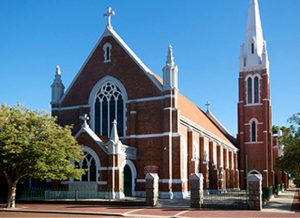
Dutch Catholic publication: the Contact Perth (established 1955)
“Contact” was a Dutch-language publication that was established in Perth, Australia in 1955. It was a Catholic publication aimed at serving the Dutch Catholic community in Perth and the surrounding areas. The publication focused on Catholic news and events related to the Dutch Catholic community. It also featured articles on
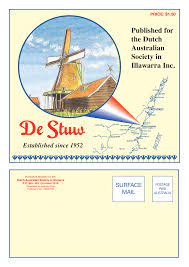
“De Stuw” Dutch-language publication llawarra, 1952.
“De Stuw” is a Dutch-language publication that was established in Illawarra, Australia in 1952. It was the monthly stenciled organ of the Nederlands Australische Vereniging (Dutch Australian Association) in Illawarra, which was founded that same year to serve the Dutch community in the Illawarra region of New South Wales. The
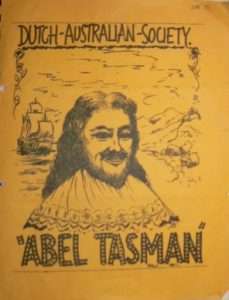
“Mededelingen” Dutch-language publication Hobart (1952- 1955).
“Mededelingen Ned. Vereniging “Abel Tasman”” was a Dutch-language publication that was established in Hobart, Australia in 1952. It was published by the Dutch Association “Abel Tasman,” which was founded in 1950 to serve the Dutch community in Tasmania. The publication focused on Dutch-Australian cultural and community news, as well as
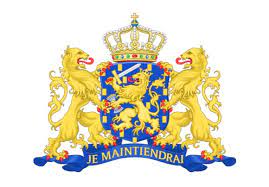
“Je Maintiendrai” former Dutch-language magazine Adelaide
“Je Maintiendrai” is a Dutch-language magazine that was established in Adelaide, Australia in 1957. The magazine was published by the Dutch Australian Association of South Australia, which was founded in 1951 to serve the Dutch community in Adelaide and surrounding areas. The “Je Maintiendrai” (Ik zal Handhaven) motto represents the
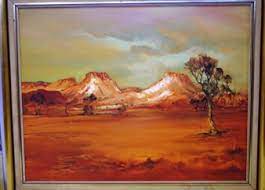
Carl van Nieuwmans – artist influenced by the Australian desert.
Carl Van Nieuwmans (also known as Carolus Joannes Nieuwmans) was a Dutch-born Australian artist who was born in 1931 in The Hague. He studied at the Haagse Academy of Visual Arts in the Netherlands and after his arrival in Australia in 1950 at the Sydney Technical School. Van Nieuwmans travelled
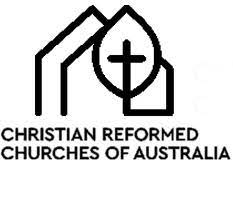
Reformed Theologian Rev. John Vanderbom
Rev. John Vanderbom (1913-1992) was a Dutch-born Australian Reformed pastor. He was born in the Netherlands and migrated to Australia in 1951. His parish originally centred on Sydney but extended from Brisbane to the Victorian border. He later worked in southern Tasmania. After completing his theological studies in the Netherlands,

Trowel and Sword publication of the Reformed Church in Australia (historic)
Trowel and Sword was a publication of the Reformed Church in Australia, which was founded in 1953. The first editorial of this Christian magazine in Australia written by Rev. John Vanderbom in 1954. The first two editors (Revds. John Vanderbom and Bill Deenick) were in Australia, but Trowel and Sword
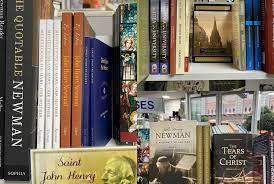
Dutch-language Catholic magazine – Onze Gids
Onze Gids was a Dutch-language Catholic magazine established in Australia in 1950. The magazine was published by the Catholic Printing and Publishing Company in Melbourne, Australia, and was aimed at Dutch immigrants to Australia. The magazine featured articles on Catholicism, current events, and cultural topics, as well as news and
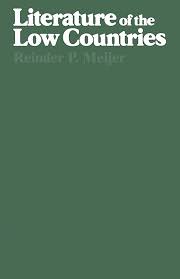
Reindert Meijer on Dutch Literature
R.P. Meijer was born on 18 January 1926 in Amsterdam. He studied Dutch at the University of Amsterdam where he graduated in Dutch language and literature in 1950. He obtained his PhD in Dutch literature in 1958. Meijer has taught and researched at various universities in the Netherlands and abroad.
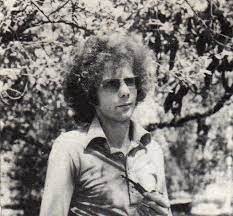
Cornelis Vleeskens – Performance Poet
Cornelis Vleeskens (1948-2012) was a Dutch-Australian poet, translator, and visual artist known for his experimental and wide-ranging works. Vleeskens arrived in Australia as a Dutch immigrant in 1958, and he spent much of his life exploring themes of cultural identity, politics, and social justice through his artistic pursuits. Throughout his
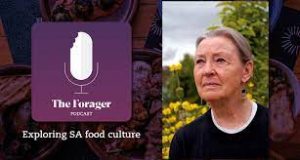
Lolo Houbein: Writer, Gardener and Conservationist
Lolo Houbein is a Dutch-Australian author and conservationist known for her extensive portfolio of novels, histories, poetry, essays, and short stories. Lolo Houbein was born on January 20, 1935, in The Hague, Netherlands. Her father, Pieter Johannes Houbein, was a printer, and her mother, Maria Elizabeth Verburg, was a nurse.
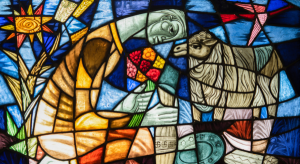
Jean Orval Stained glass artist
Jean Orval was born in Tegelen, Holland in May 1911 and died in Hamilton, Victoria in March 1987. As early as 1926 his emerging talent won him 1st prize in drawing at a Home Industry Expo in Helden-Panningen, Holland. In 1927 a National newspaper honoured him with 1st prize for
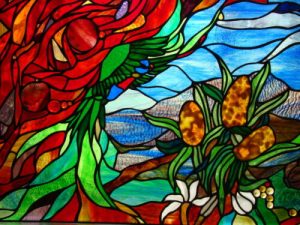
Stained Glass Artist Rein Slagmolen
Marinus “Rein” Slagmolen (7 November 1916 – 29 January 1999) was a Dutch-Australian artist and sculptor with a background in chemical research. Slagmolen was born in the province of Utrecht, Netherlands, as the youngest son of Gijsbertus Slagmolen and Mathilda Maria Slagmolen-Jacobs. As a young man, he spent some years
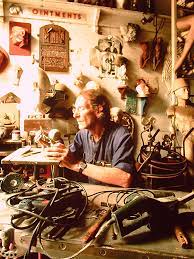
Hans Arkeveld sculptor, painter, draughtsman, and printer
Hans Arkeveld was born on 27 August 1942 in Scheveningen, Holland. He migrated to Australia with his family in 1952 and lived in migrant camps in Victoria and Western Australia before settling in Collie, WA. Arkeveld left school at the age of 13 and worked as a builder’s apprentice and
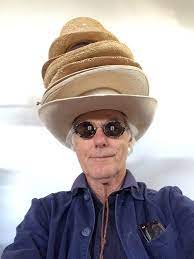
Theo Koning founding member of the Western Australian Sculptors’ Association
Theo Koning was a prominent Australian artist who worked across multiple mediums including painting, sculpture, and printmaking. He was born in the Netherlands in 1950 and immigrated to Western Australia in 1953. Koning studied fine art at the Claremont Technical School and graduated in 1973, the same year he became
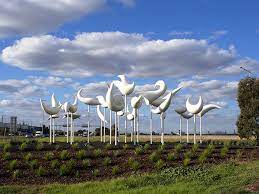
Adrian Mauriks – sculptor
Adrian Mauriks was a Dutch-born Australian artist who was born in 1942 and passed away in 2020. He emigrated to Australia with his family in 1957 when he was still young. His family was involved in the printing business, and Adrian completed his apprenticeship in printing before developing an interest
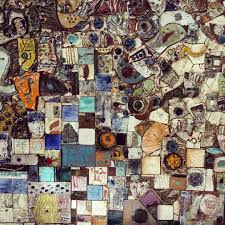
Gerard Havekes active in ceramics, painting, sculpture and tapestry
Gerard Havekes was born in ‘s Hertogenbosch in 1925. He did his military service in the Netherlands at the start of WWII. He immigrated to Australia in 1950. He was active in ceramics, painting, sculpture and tapestry. Despite being a self-taught painter and sculptor, he had successful exhibitions of his
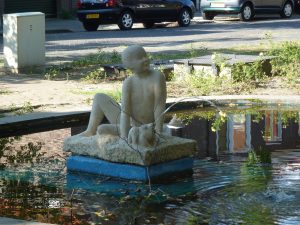
Berend van der Struik – teacher, designer, sculptor.
Berend van der Struik was a Dutch artist, born on 24 July1929 in Beilen. He studied at the Akademie voor Industriële Vormgeving Eindhoven and the Académie de la Grande Chaumière (Parijs). He emigrated to Australia in 1957 and lived there until 1964. He was a teacher, designer, and sculptor, and
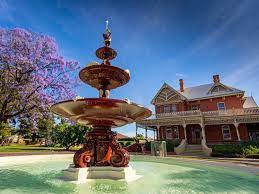
Ernst van Hattum – first director Mildura Art Gallery
(We are interested in further details and corrections on the personal info mentioned in this article). Ernst van Hattum was a Dutch-Australian artist who was born on January 29, 1923, in Nijmegen, the Netherlands. He studied at the Academy of Fine Arts in Arnhem, Netherlands from 1940 to 1942, before

Renown Potter Henri Le Grand
Henricus Alexander Theodorus (Henri) Le Grand, was born on May 10, 1921, in Zevenaar, the Netherlands. His parents were Petrus Egidius Hubertus Le Grand, a laborer of French-Dutch descent, and Elisabetha Antoinetta van Haren. Henri studied art and ceramics at the Instituut voor Kunstnijverheidsonderwijs te Amsterdam from 1938 to 1942.
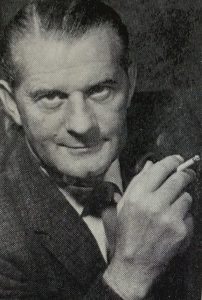
Alex Rotteveel – founder Little Theatre Maryborough
We are looking for more information on Alex Rotteveel. Alexander Johannes Rotteveel was born August 11, 1916 at Assen, Assen, Drenthe, Nederland, he died in Toowoomba Qld December 18 1993. He was married to Bouwina Fekkes, born January 10th, 1919 at Assen, Assen, Drenthe, Nederland. She died in Brisbane in
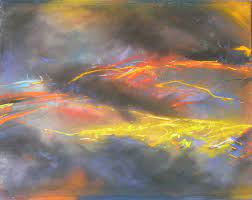
WIM de VOS – Artist, teacher, musician.
Dutch-born artist Wim de Vos (1947-2018) was born in The Hague and migrated to Brisbane with his family in 1959. Wim’s passion for the arts led him to pursue diplomas in Commercial Illustration and Fine Art at the Queensland College of Art, where he received honors in Printmaking. After his
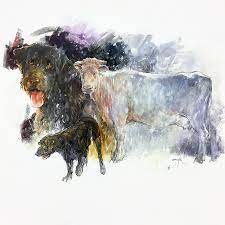
Pieter Zaadstra book illustrator artist
Pieter Zaadstra was a Dutch-born Australian artist born on January 15th, 1955, at Skraerd, Frisia. He is the son of an art historian. He began his art journey as a young boy sketching in various studios that followed the School of Den Hague impressionism style using cross-hatching oil painting techniques.
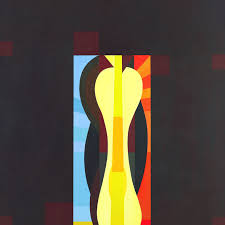
Abstract Painter – Fashion Design – Jan Riske
Jan Hendrik Riske was born on the Voorstraat in Dordrecht on 21 June 1932, the second of eight children, to Hendrik and Francine Riske. His father was a lead-light glazier who wanted to become an artist but had been discouraged by his staunchly Protestant family. Jan attended a private Montessori
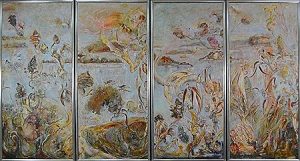
Abstract impressionist Ian van Wieringen
Ian Van Wieringen (1943-2022) was a Dutch-Australian artist born on January 15, 1943, in war-torn Holland. His mother Betty was Jewish, and during her pregnancy, she and her husband were helping to smuggle Jews out of Europe, creating an environment of tension and drama that may have influenced his emotional
Mystery: Contemporary artist Maria Blansjaar
It interesting, we found reference suggestions for her (see belkow), but none of the links are working anymore, nor is there any info on her paintings mentioned in the collections. It is as if she has disappeared from the internet. Any further information is welcome. Maria Theresia Wilhelmina Blansjaar is
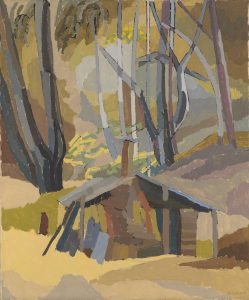
Alfred and Joke Calkoen – Dutch-Australian painters
Alfred Calkoen was a Dutch-Australian artist who played an important role in the development of the visual arts in Victoria, Australia. He was born on January 1, 1917, in Amsterdam he finished his study in the Netherlands in the Nieuwe Kunstschool (Amsterdam). During his career he also was an art
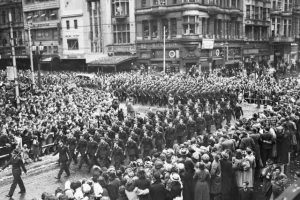
Three unique Dutch movies during WWII from around Australia
Amateur movies made by Mr. Arie Berger. Source Netherlands Ministry of Defence Movie #3 – 1943 Beeldbank – Department of Defence – Netherlands Movie #4 1943 -1944 Beeldbank – Department of Defence – Netherlands Movie #5 1945 -1946 Beeldbank – Department of Defence – Netherlands See also: The Dutch at

Jan Logeman and Juliana Village – Sydney
Juliana Village in Miranda in Sydney’s South came about thanks largely to the vision and drive of one man: Johan (Jan, John) Logeman (more info on Jan in the pdf below). The idea was born when he he was recovering from a heart illness. Talking to people around him it

Christian Reformed Churches of Australia
The Reformed Church in Australia (RCA) has its roots in the Dutch Reformed Churches. These have their origin in the Protestant Reformation in the 16th century. These Churches became one of the dominant religious and cultural institutions in the Netherlands. In the 1950s, Australia accepted hundreds of thousands of migrants,
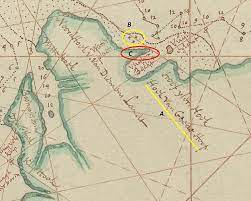
Maerten van Delft explored northern coast in 1705
Maerten van Delft was a Dutch explorer who conducted an expedition in 1705 to explore the western and northern coastlines of what is now known as Australia. The expedition was organised by the Dutch East India Company (VOC). The expedition played a significant role in the early European history and
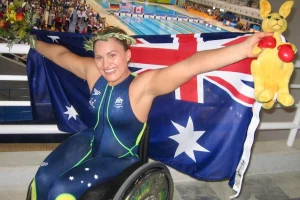
Marayke Jonkers – Paralympic Swimming Champion
Marayke Caroline Jonkers was born on 13 September 1981 in Hobart. Her parents are of Dutch descent and migrated to Australia before she was born. She moved to Queensland as a baby. She currently (2023) lives in the Sunshine Coast of Queensland. She became a paraplegic due to a car
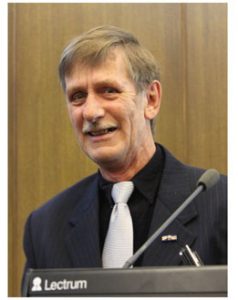
Rupert Gerritsen: Historian in Dutch-Australian past and Vietnam activist
Rupert Gerritsen (1953 – 3 November 2013) was born in Geraldton, Western Australia, to Dutch parents. He became an Australian historian who made significant contributions to the fields of archaeology, anthropology, and environmental history. He published extensively on the prehistory and history of Australia, particularly in relation to Indigenous cultures
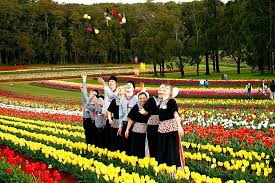
The famous tulip growing Tesselaar family
The following information is abstracted from the Tesselaar website. In June 1939 – just weeks before the outbreak of World War 2 in Europe – Cees and Johanna Tesselaar left their home in Beverwijk, the Netherlands and on their wedding day aboard the Strathallan. They were headed for Australia, bringing little
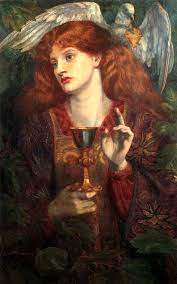
The Dutch Ladies of the Grail arrived in Australia in 1936
The Grail was started in 1921 as the Women of Nazareth by Fr. Jacques van Ginneken, a Dutch Jesuit. He felt that many new possibilities were opening up for women and that a group of lay women, unconfined by convent walls and rules, could make an immense contribution to the

Willem Siebenhaar social activist and writer (1863-1937)
He was born in The Hague on July 28, 1863 and developed a lifelong interest in chess at the age of fifteen and was exposed to Ferdinand Domela Nieuwenhuis – a prominent socialist figure in the Netherlands who served as the country’s first elected socialist Member of Parliament. After graduating
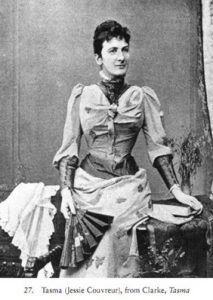
Jessie Catherine Couvreur- Dutch-Tassie author ( 1848-1897)
Born in Highgate, London, Jessie Catherine Couvreur was of Dutch, French, and English descent, with her father, Alfred James Huybers, originally a merchant from Antwerp. She arrived in Tasmania with her family in December 1852 and received her education in Hobart. In June 1867, she married Charles F. Fraser and
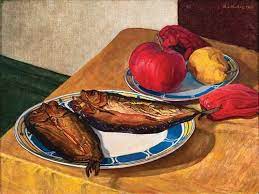
Early cubist artist Harry den Hartog (1902-1984)
Henricus Marie (Harry) den Hartog (1902-1984) was a Dutch-born artist who emigrated to Australia in 1923. He is known for his contribution to the development of cubism in Australia. Den Hartog was born in Rotterdam, Netherlands, and studied art at the Rotterdam Academy. After completing his studies, he moved to
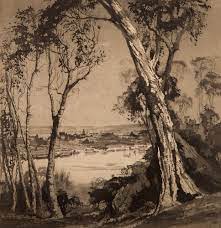
Henri Benedictus Salaman Van Raalte curator Art Gallery of South Australia (1881-1929)
Henri Benedictus Salaman Van Raalte (1881-1929) was a talented etcher born in Lambeth, London. . His father, Joel Van Raalte, was a Dutch-born merchant and his mother, Frances Elizabeth (née Cable), was English. He studied at prestigious institutions such as the City of London School, St John’s Wood Art Schools,
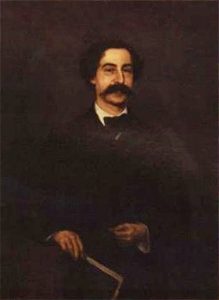
Jacob Carabain Dutch-Belgian – Melbourne – 1885
Jacob Frans Jozef Carabain, also known as Jacques François Joseph Carabain, was a Dutch-Belgian painter. He was renowned for his Romantic-Realist style, particularly his depictions of cities and buildings. Carabain’s interest in Medieval and Baroque architecture often led him to paint busy marketplaces. Carabain initially studied at the Amsterdamer Kunstakademie,
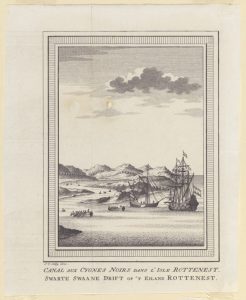
Victor Victorszoon first painting of the Swan River in Perth – 1696
Victor Victorszoon was a Dutch artist (born 1653) as a painter and cartographer he accompanied the explorer Willem de Vlamingh on his expedition to Australia in the late 17th century. Victorszoon’s paintings are the sole visual record of the voyage and are among the earliest known images of the continent.

Dutch-Australian painter Henry Leonardus van den Houten (1801-1879)
Henry Leonardus van den Houten (1801-17 February 1879), was a Dutch-Australian painter, lithographer and art teacher. He was the son of Hendrik van den Houten and Anna Maria Goutier. He received his artistic education at the Royal Academy of Fine Arts in The Hague, where he studied under the Dutch
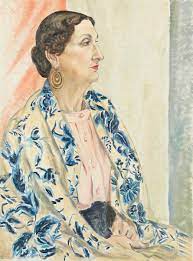
Dutch-Australian writer Francisca (Paquita) Delprat (wife of explorer David Mawson)
Francisca Adriana (Paquita) Delprat was a British-born writer and community worker, born on August 19, 1891, in Acton, London. Her father was a Dutch-born mining engineer Guillaume Daniel Delprat, who had moved to Broken Hill, New South Wales, in 1898 to join the Broken Hill Pty Co. Paquita spent the
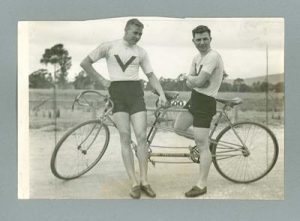
Jacob Jansen/Johnson – (grand)father of famous Australian Footballers and Cyclists
Jacob Jansen (1848-1928), who later changed his name to Jacob Johnson, was born in Groningen and immigrated to Australia in the 1860s.. He became a Dutch-Australian businessman who owned and operated several cafes in Melbourne during the late 19th and early 20th centuries. Jacob Johnson’s cafes were popular gathering places
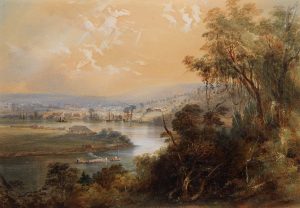
An 1855 proposal for a Dutch Settlement in Moreton Bay (Brisbane)
The Referend John Dunmore Lang was a Scottish-born Australian politician and Presbyterian minister who advocated for the establishment of a Dutch settlement in Moreton Bay in the mid-19th century. Lang believed that a Dutch settlement in Moreton Bay would be beneficial for both the Dutch and the Australian colonies. He
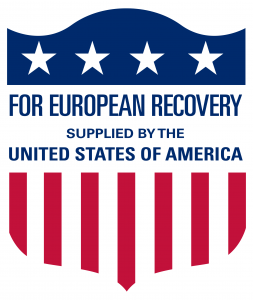
Queen Wilhelmina Benevolent Trust Funds
Established in 1903 to support sailors who had jumped ship Established as the Queen Wilhelmina Benevolent Trust Fund, it was established in 1903 to support Dutch sailors who found themselves in need of financial assistance after jumping ship in foreign ports. At the time, many Dutch sailors were facing difficult
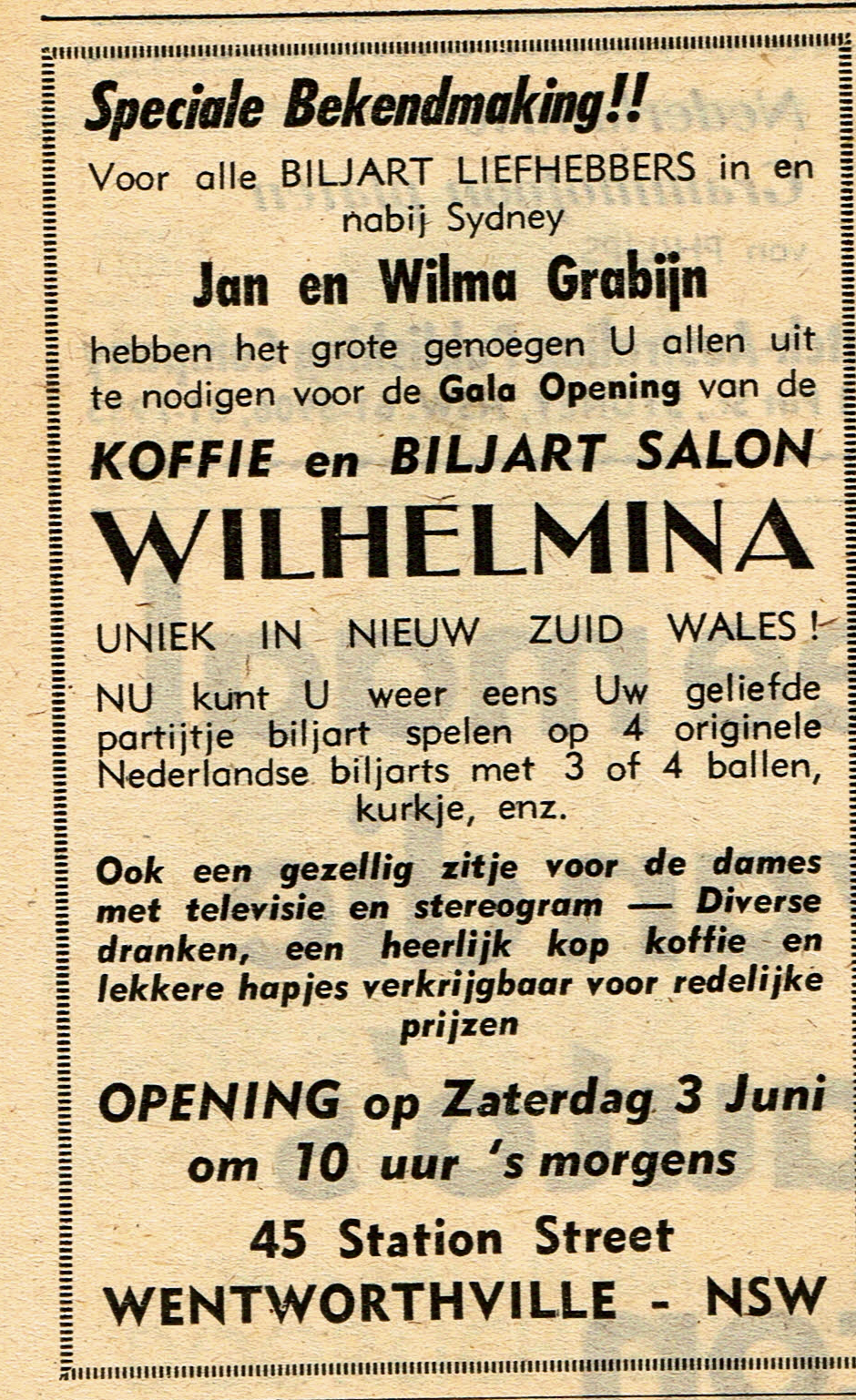
Netherlands Amusement and Sport Club Wilhelmina started in Wentworthville
The following text is from a booklet published by the Federation of Netherlands Societies Ltd. in February 1985. The research for this booklet was done by Mijntje Hage. The Netherlands Australian Sports Club Wilhelmina Ltd. (N.A.S.C) was a club with its own building and therefore an enormous number of activities going on.
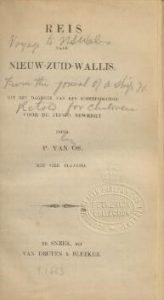
Reis naar Nieuw-Zuid-Wallis. Uit het dagboek van een scheepsdokter – 1840.
A Voyage to New South Wales from the journal of a Ship’s Doctor An early Dutch writer on Sydney in the 1840s was P van Os. His book “Reis naar Nieuw-Zuid-Wallis. Uit het dagboek van een scheepsdokter” was edited for children. It is a curious semi-fictional work and although it
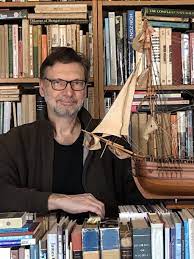
Dr. Edward Duyker, historian, author.
Dr Edward Duyker was born in 1955 to a father from the Netherlands and a mother from Mauritius. His mother has ancestors from Cornwall who emigrated to Adelaide, South Australia, in 1849. Edward’s father Herman, was born in Schaesberg, Limburg and emigrated to Australia in 1950 and arrived here on
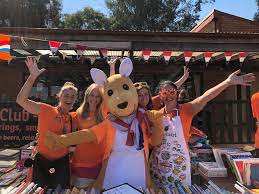
Dutch language and schooling in Sydney
Despite the poor level of language retention among the descendants of the Netherlands-born, Dutch remains an important community language in Sydney. In 2002 a new Dutch syllabus was introduced to the New South Wales Higher School Certificate. However, the number of students sitting for Dutch exams at the end of
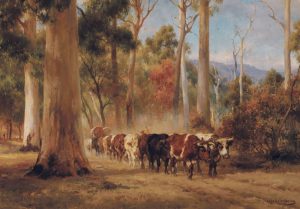
Jan Hendrik Scheltema Dutch-Australian Painter (1861-1941)
Two Dutchmen, both passed way, members of the same extended family, yet three generations apart, made a noticeable contribution to Australian culture, by just going about their business. The artist Jan Hendrik Scheltema migrated here in the 19th century, and the other was his great-nephew Cas Jeekel, who just visited
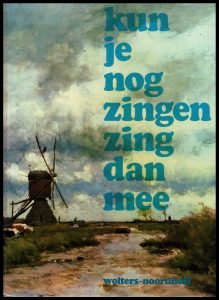
Kun je nog zingen zing dan mee – WWII book published in Melbourne
The first edition of the song book ” Kun je nog zingen zing dan mee” (If you can still sing, sing along) was published in 1906 and the book has had numerous editions since. It is one of the most published books in Dutch publishing., with over a million copies
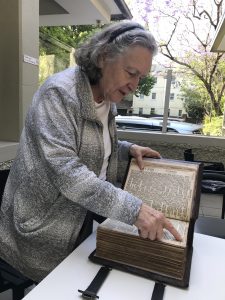
Bible Restoration Project
The Bible was donated to the DACC by Ellie Zinsmeester. It dates from 1768 and was deaccessioned (officially disposed off) by the church around 1940. It was brought to Australia when Ellie’s father migrated to Australia. Karma Rowe from the Dutch Genealogy Group, who previously restored some books for the
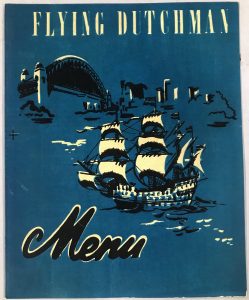
Dutch Club of Sydney – Flying Dutchman Restaurant (1957-1962)
DACC researchers came across ‘The Dutch Club’ in Sydney. There are no records of this club, further research revealed that the Dutch Club of Sydney and the restaurant The Flying Dutchman in the City (Elizabeth Street) are always mentioned together. The restaurant was run by famous Dutchman Dick Groenteman. It
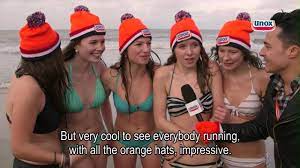
Annual Nieuwjaarsduik in Bondi, Sydney
After a Covid initiated break of 2 years, on January I, 2023 Bondi Beach Australia turned orange again, also this year organised by Dutch Travel. Under different climate conditions the original event in Scheveningen takes place under more severe conditions. Afterwards the participants do get erwtensoep met UNOX rookworst
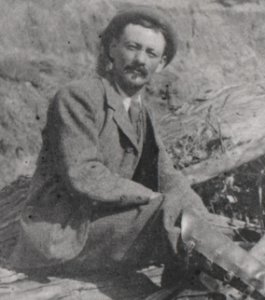
Dutch Art Import Committee (Dutch Consulate) – early 1900s
There is an episode in the letters from Dutch-Australian painter Jan Hendrik Scheltema (JHS) – who we discuss extensively elsewhere – where he wrote having been asked by the Dutch Consul to become a committee member < with some title >, looking after ART to help import Dutch Art, including
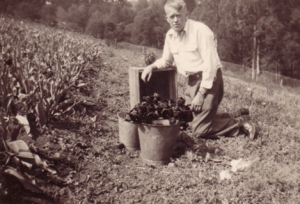
Kees Lumkes imported the first tulips in Australia
Written by his daughter Wilma Summerville Kornelius Berend Lumkes ( 26/2/1911 to 13/7/1984) son of Willem Lumkes was born in Groningen, Netherlands. His parents were old at his birth and his only sibling was 16 years older. His family were quite affluent and had a large grain farm. The house
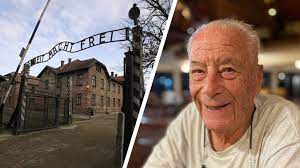
David Groenteman Auschwitz survivor, ice hockey champion, restaurateur and Dutch community leader
Auschwitz survivor David Groenteman , born in 1923 in Amsterdam ended up as an eighteen-year-old Jewish boy In Auschwitz, where he had to carry away corpses, bury them and scoop coal for twelve hours in the bitter cold. After the war he fled from those painful memories. After the Germans
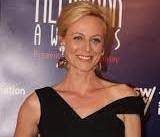
Marta Dusseldorp – Actress
Marta Dusseldorp (born 1 February 1973), the granddaughter of Dick Dusseldorp, the founder of Lend Lease. Martha is an Australian stage, film and theatre actress. Her television credits include BlackJack, Crownies (and its spin-off Janet King), Jack Irish and A Place to Call Home. Her story is told in the

Akky van Ogtrop – Art Curator
Akky van Ogtrop graduated from the Royal Academy of Fine Arts, s-Hertogenbosch, TheNetherlands, majoring in printmaking, and has a Masters Degree Fine Arts, Sydney University. As a director and project manager of major arts events, Akky has worked for national andinternational arts organisations including: the Biennale of Sydney, ARTiculate Campaign,

The history of the Dutch Australian Weekly
The Sydney-based Dutch Australian Weekly (DAW) was founded in 1951 by Alfred Schuurman and A. Hilbrink with the assistance of Earl White from the Cumberland Newspapers. The paper was established to serve the Dutch community in Australia, providing news, features, and information about events and issues of interest to Dutch
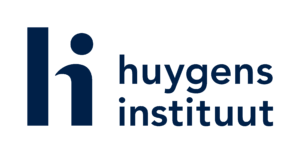
Huygens Institute – The Netherlands
The Huygens Institute aims to make Dutch history and culture more inclusive. It also provides access to primary source material and text editions on which to base further analytical and interpretive research. In addition, the Huygens Institute takes the lead in developing innovative methods, tools and sustainable digital infrastructure. The
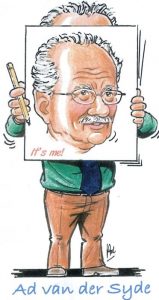
The Brisbane Borrelclub and Borrel Boomers
The Borrelclub (a club of Dutch gin drinkers) had its foundation in 1964, when the Officer-in-Charge of the local Dutch Emigration Service, Mr Cees Mossel, invited a few prominent expatriate Dutch businessmen for an after work ‘borrel’ at his office. Business problems and experiences of Dutch immigrants became the topic
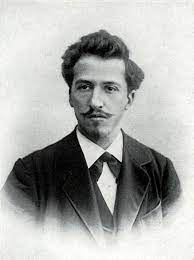
Dutch-Australian Author Yvonne Louis and her book on Mondriaan
Yvonne Louis (born 1946) migrated to Australia as a child with her parents from the Netherlands. When raging bushfires threatened her family home in the Lane Cove National Park in Sydney’s northern suburbs Yvonne managed to save the treasured Dutch heirlooms that had been handed down to her by her

Indonesian Political Prisoners held by the Dutch, freed in Australia
In 1926 the Dutch had imprisoned Indonesian freedom fighters in a camp in the jungle of Dutch New Guinea. When the Japanese advanced they were brought – under false pretences – to Australia in 1943. When the Australians did find it they were political prisoners they ordered the Dutch to free them.
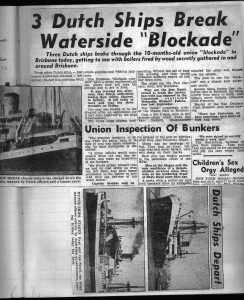
Black Armada: Australian Boycott of Dutch shipping WWII
After the Japanese invasion of Netherlands East Indies, some 20,000 Dutch people fled to Australia, the majority were Indos. They were not well treated and the Australian Unions started to fight for their rights. As they became involved they understood these people wanted independence from the Netherlands. When, after the War, the Dutch wanted to recolonise NEI the Unions blocked all Dutch transport from Australia.
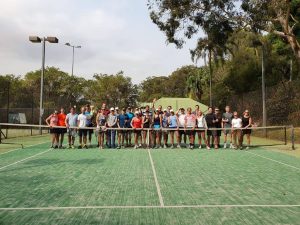
Heineken Tennis Tournament – Sydney 11 December
Back on! After missing out on two Heineken Tennis Tournaments in 2020 and 2021 due to Covid and the renovations of Primrose Park Tennis, Dutchlink is very pleased to invite you to the Dutchlink Heineken Tennis Tournament 2022 version which will take place on Sunday 11 December 2022.We’re back on
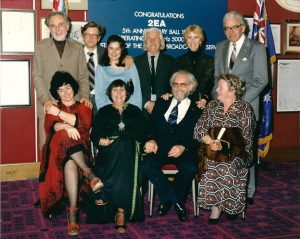
Theo and Eef ten Brummelaar – Helga’s story added
Theo and Eef ten Brummelaar were among the initiators of Dutch Radio in Australia.
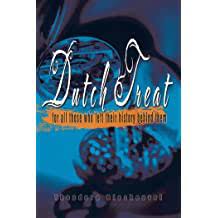
Dutch Treat by Theodora Biesheuvel
Theodora (Thea) Biesheuvel – was born in Schiedam, Netherlands in 1939 and emigrated to Australia in 1953. She grew up in country Australia. She has written poetry since she was 8 but started short story writing as an adjunct to telling stories.
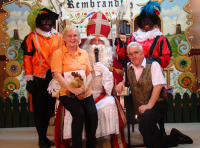
Rembrandt Dutch Club – Sydney
Founded in 1978 We are open every Wednesday from 10am till 1pm and every Friday from 3.30pm till 8.30pm. Our Club is run purely by volunteers, from the barman to the cleaner, the chef and the gardener. The Club has several interest groups: Klaverjassers and Scrabblers. It’s a friendly place
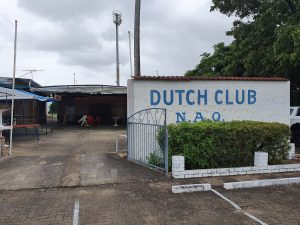
Netherlands Association of Queensland
It all started in 1952. Four Dutch men, recently arrived in Australia, started a `Klaverjas’ (Dutch card game-only known in the Netherlands) club. A constitution was sent to Fair Trading Queensland. Approval was received on the 6 July 1952 and the Netherlands Association of Queensland got incorporated and known as
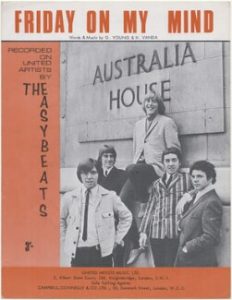
Dutch migrants key members of The Easybeats – Australia’s greatest pop group of the mid-1960s.
The Easybeats are worldwide known for their 1966 superhit “Friday on My Mind”. It reached no. 16 on the Billboard Hot 100 chart in May 1967 in the US, no. 1 on the Dutch Top 40 chart, no. 1 in Australia and no. 6 in the UK, as well as
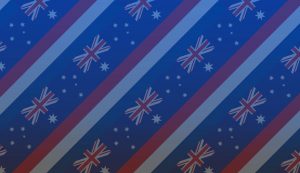
Dutch Australian Cultural Centre – online hub for Dutch culture and history in Australia.
Over the last 40 years the Dutch Australian Cultural Centre (DACC) have been collecting documents and information in relation to the rich Dutch history in Australia. They have now also established an online service, making it easier to access this treasure trove. There is increased interest in this information from
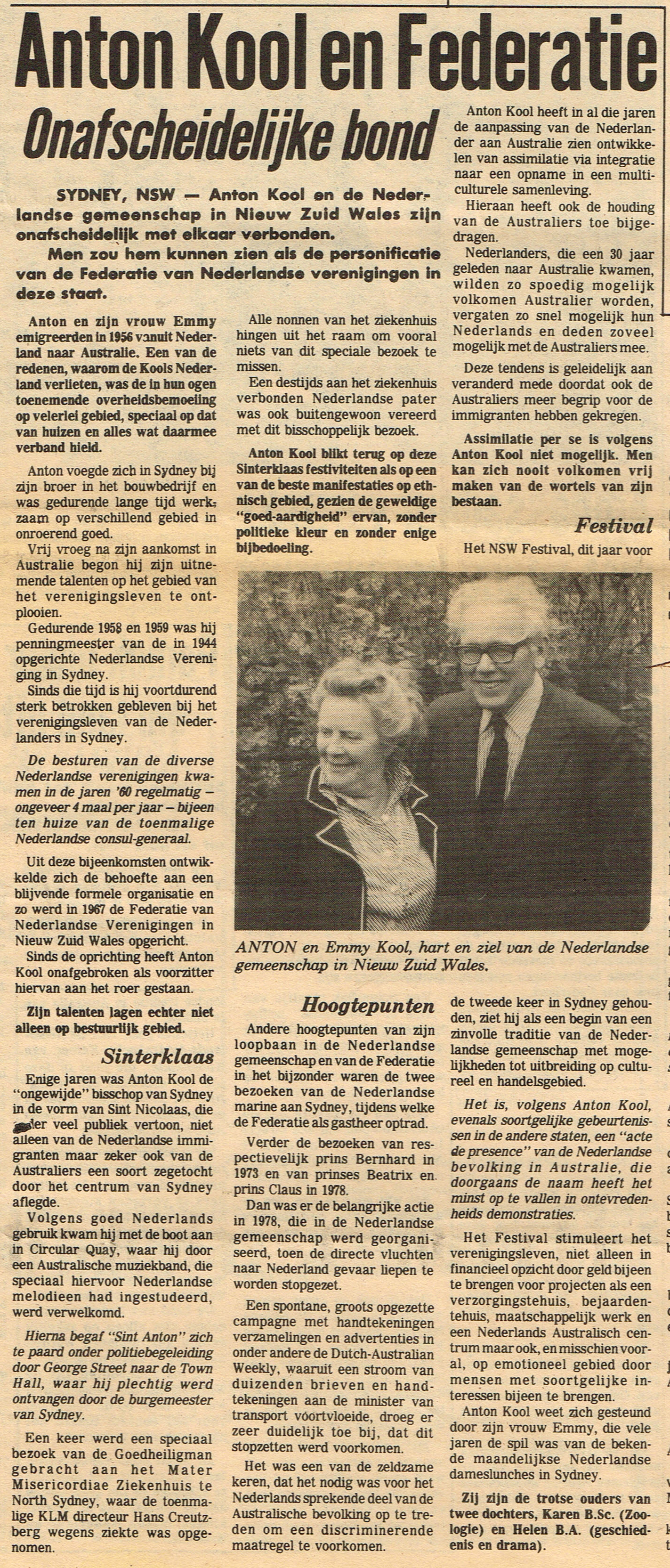
Anton Kool leading person in the Dutch Community
Antonie (Anton) Frederick Kool was born Feb 6 1920, Zevenhoven, The Netherlands and he died Dec 14 2002, Sydney, Australia Written by Helen Kool (one of Anton’s daughters) This is a short biography and includes anecdotes that I find interesting. If you would like to add some of your own
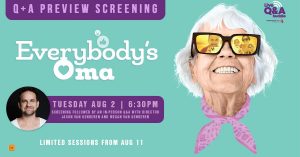
Dutch-Australian Movie –“ Everybody’s Oma”
Everybody’s Oma follows in the NSW Central Coast family’s footsteps as they navigate Oma’s failing health under the spotlight of an enthusiastic audience of well-meaning strangers. Jason van Genderen premiered My Town is Broken at Sydney Film Festival (SFF) 2008. His debut feature Everybody’s Oma premieres at SFF 14 years
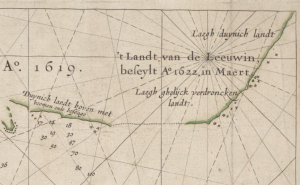
The Leeuwin encountered WA Coast in 1622
Leeuwin (Lioness) was a Dutch galleon that mapped some of the southwest corner of Australia in March 1622. It was the seventh European ship to sight the continent. Leeuwin‘s logbook has been lost, so very little is known of the voyage. Until 2022, it was not known who captained the
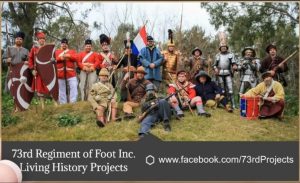
Compagnie Batavia – 73rd Living History Reenactment group
The group was formed in 2016 and is Australia’s only 80 years war living history group. The group has around 40 members across the Eastern seaboard and has a very strong focus on an immersive living history impression. Winterfest at the Hawkesbury -2021 The Group participated in the Winterfest at
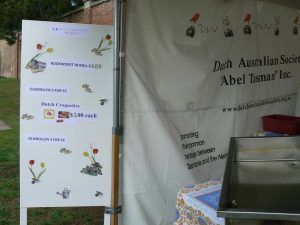
The Dutch Australian Society “Abel Tasman” Inc.
By Kees Wierenga The Dutch Australian Society “Abel Tasman” Inc existed from 1969 till approx 2010. The Dutch Australian Society “Abel Tasman” Inc began in 1969.There was a Dutch Australian Society in the 1950s, but it faded away after approx. five years due to lack of interest. Beginning in 1952,
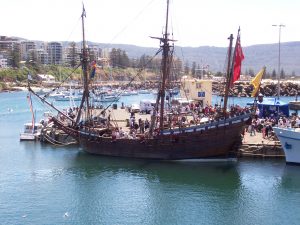
Dutch Australian Society in Illawarra
The Dutch Australia Society in the Illawarra (DASI) was founded in 1952 and is affiliated with the Federation of Netherlands Societies. The club publishes a monthly newsletter “De Stuw”. The aim of DASI is to provide and maintain traditional Dutch cultural functions and provide activities for the elderly Dutch and Australian members.
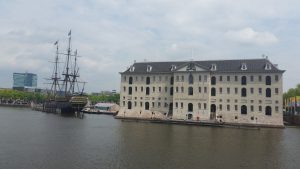
VOC Historical Society, Perth (VOCHS)
The Society was formed in 2000 by a group of history enthusiasts that were: Concerned at the lack of general knowledge about maritime events that took place in the 17th and 18th centuries off and on Western Australia’s (WA) coastline hundreds of years before the settlement of WA in 1829

Erasmus Foundation – Melbourne
The Erasmus Foundation is a Dutch Australian cultural society which was established in 1965 in Melbourne, Australia. The aims of the Society are to be a link with the Dutch culture for people with a Dutch background or connection who live in Victoria and to acquaint others with that culture.
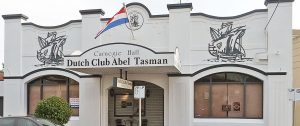
Dutch Club Abel Tasman – Melbourne
The Club was initially known as the ‘Netherlands Society Abel Tasman’ and first opened its doors on the 1st November 1958 in Barkly Street, St Kilda. The Club changed its name on the 30th October 1978 to its present name of Dutch Club ‘Abel Tasman’. The Club organises several activities

Dutch Australian Heritage Centre & Dutch Museum – Melbourne
The Dutch Australian Heritage Centre (DAHC) gives the general community an opportunity to learn about Dutch and former Dutch East Indies culture and language and shows how families moved to Victoria and lived and worked in the post World War II migration period. The Dutch and Dutch East Indies migration
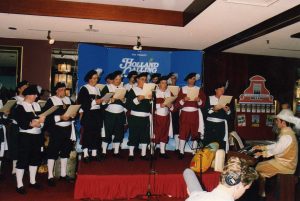
Rembrandt Male Choir St Marys (Sydney)
It was around 1985 and the club needed more regular visitors. The Friday nights were alright but could be better. The idea came up to start a male choir. The name would be the same as the club. Rembrandt Male Choir St Marys. Looking for interested persons went as far
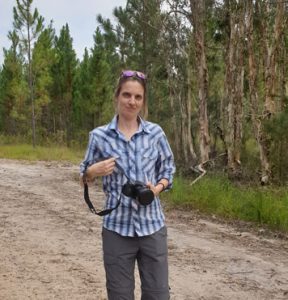
Maryse Jansen – photographer
Maryse Jansen had always lived in Rijswijk and Den Haag in the Netherlands, until she made Australia her home in 2009. A different lifestyle, a warmer climate and lots of natural space beckoned. Maryse and her partner took their chances, applied for permanent residence in Australia and ended up just

NEW – Online classes at Dutch School ‘de Kangoeroe’ in Sydney
In addition to classes at the Hunters Hill, Manly Vale, Surry Hills and Forestville locations, Dutch school ‘de Kangoeroe’ is also providing online classes this year. They use the latest methods that enable them to offer hybrid education. Requirements for online learners:– You live more than 45 minutes’ drive from one
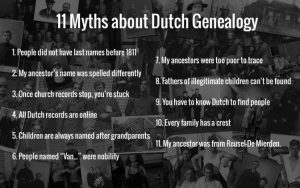
Dutch Australian Genealogy Group December 2025 Newsletter added
A group of people who have Dutch ancestry and are researching our family trees. Facebook page
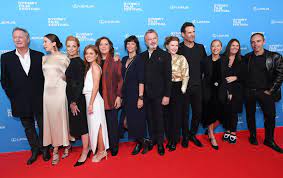
Dutch movies at Sydney Film Festival – June 2022
The world’s best new films come to Sydney this year for 12 days and nights of inspiring and entertaining premieres, talks and parties. Go and see one of the three films below, or why not all of them!? NR.10 – One whispered word sets into motion a precisely executed, unpredictable,
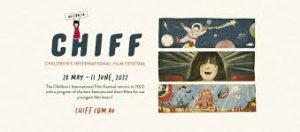
Dutch Children films at international festival – Sydney, Melbourne
CHIFF, isa festival of the best new kid’s films from across the world screening only in cinemas from May 28 – June 13! CHIFF returns with three films from the Netherlands, including OINK – a hilarious Dutch-language animation about a girl who desperately wants a pet dog but is given a piglet
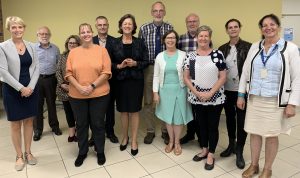
Ambassador met Dutch organisations in Brisbane
During her official visit to Brisbane Netherlands Ambassador to Australia H.E. Marion Derckx and Honorary Consul Mrs Marjon Wind met with representatives of various Dutch organisations in Brisbane. Present were: Netherlands Association of Queensland (NAQ) Brisbane Borrelclub Dutch Radio Group 4EB De Duyfkenschool Dutch Chamber of Commerce in Queensland Dutchlink
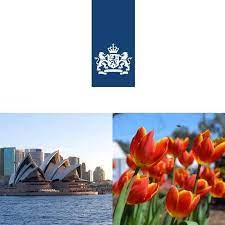
Dutch clubs and organisations in Australia
Original list thanks to the Netherlands Embassy in Canberra (2022), updated by the DACC January 2024. The strong historical ties between the Netherlands and Australia have resulted in many Dutch interest groups, ranging from social clubs to cultural organisations. On this webpage you will also find information on learning the
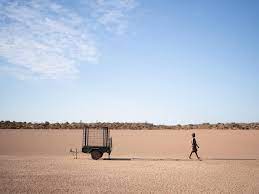
Rolf de Heer Dutch-Australian Filmmaker (1951-)
New film: “The Survival of Kindness” ( see below) Born 4 May 1951 in Heemskerk. Migrated with his parents to Australia in 1959. He attended the Australian Film, Television and Radio School in Sydney. His started his own film studo Vertigo Productions, based in Adelaide. He has produced several multi-award-winning
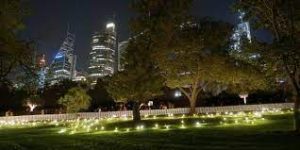
Dutch contribution at Sydney VIVID
Sydney Vivid is back in 2022. After two years of cancellations due to Covid, we can look forward to Sydney VIVID 2022 which will take place from the 27th of May until the 18th of June. For 23 days the festival will connect Sydney to light artists, music makers, brilliant thinkers and
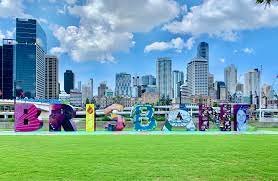
DCCQ launches Dutchlink Brisbane
At the Dutch Chamber of Commerce Queensland, members have been suggesting extending our activities to include cultural, historical, and social events. Today, we are very excited to present to you Dutchlink Brisbane, which is built on the success of our sister organisation Dutchlink Sydney! Register here for free updates and
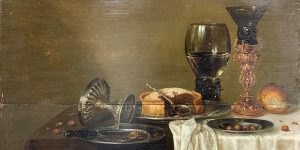
‘Once-in-a-lifetime discovery’: 400-year-old Dutch masterpiece discovered in the Blue Mountains
A 400-year-old painting unearthed in the Blue Mountains and long thought to be a copy may be worth up to $5 million after art historians confirmed it was a 17th century Dutch masterpiece. https://amp.smh.com.au/national/once-in-a-lifetime-discovery-400-year-old-dutch-masterpiece-discovered-in-the-blue-mountains-20220412-p5ad07.html There is a bit more background in the Dutch article on the discovery. Kunstwerk in Australische
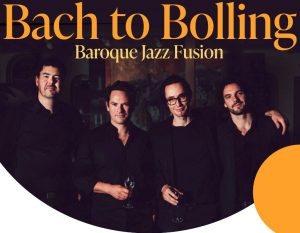
Archived: Bach to Bolling – Teije Hylkema and the Black Tulip jazz – performances – 2022
Bach to Bolling – Baroque Jazz Fusion Acclaimed cellist Teije Hylkema and the Black Tulip jazz trio come together to perform an uplifting baroque-jazz fusion concert. A movement of the legendary Bach suite’s is contrasted with a movement of Bolling’s Suite for cello and jazz trio, producing enchanting baroque and
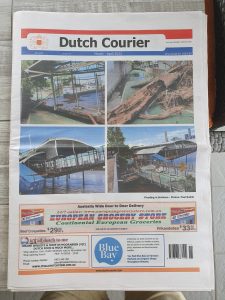
Dutch Courier – printed newspaper for the Dutch community in Australia since 1970
The ‘Dutch Societies Courier’ was first published in Victoria on behalf of the Associated Netherlands Societies in May 1970 by Max Leening. The idea of the publication was to connect all the different Dutch clubs in Victoria through a publication that functioned like an extended newsletter. Since the early days,
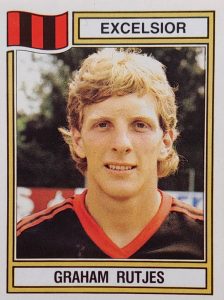
Footballer Graeme Rutjes – Born in Sydney, played for Oranje
Published in the Dutch Courier March 2022 ‘I was always interested in the Australian players who came to Europe when I was playing,’ Graeme Rutjes, former Netherlands International, tells me. We’re chatting via What’s App, Graeme at the golf course he manages near Utrecht, me at home in Hobart.[1] What
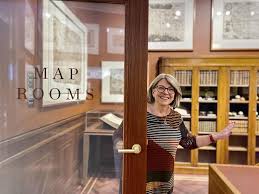
Exhibition Maps of the Pacific
Roland Spuij attended a guided tour by conservator Maggie Patton of the “Maps of the Pacific” in the Mitchell Library in Sydney. A brilliant exhibition of original maps going back to 1490, including the famous Tasman map of 1644 and other beautiful maps of Dutch cartographers and wonderful globes. And
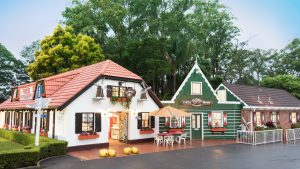
Oma’s Coffee House and Clog Barn – Coffs Harbour
The Clog Barn is one of Coffs Harbour’s longest running tourist attractions. The business is still run by the family. There are regular demonstrations of clog making at the barn. Tom Hartsuyker and his wife Rita immigrated from the Netherlands in 1951, where they settled in Musswelbrook in the Hunter Valley.
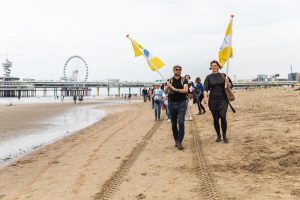
Biennale of Sydney: 2 Dutch contributions
Get excited as from 12 March – 13 June 2022 the 23rd Biennale of Sydney will take place: rivers, wetlands and other salt freshwater ecosystems will feature in this Biennale, titled ‘Rivus’. The Bieannale is all about the varying political awareness of dynamic living systems: Can a river sue us over psychoactive sewage?
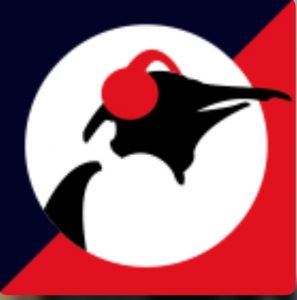
Dutch internet radio station Pinguin Vintage
Since February 2022, 1st Vintage radio is aired and plays 24/7 songs from the fifites, sixties and seventies (no news, no commercials) with a lot of attention to the forgotten hits, album-tracks, Billboard Hot 100 and unknown songs you’ll wonder why they didn’t make it and including a lot of
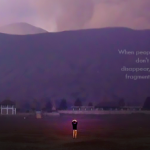
Documentary: The Past Ended On Mango Street
The Netherlands Embassy in Canberra is delighted to announce that the documentary ‘The Past Ended on Mango Street’ funded by their Shared Cultural Heritage Programme, is now available to watch online. The film-making team of Jean-Baptiste Brelière and Thomas Watson spent 6 years making the documentary. ‘The Past Ended on
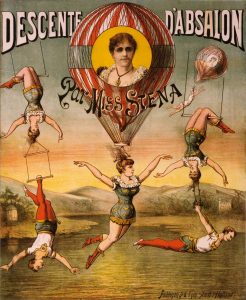
The van Tassel aerial exhibitionist performing in Australia – 1890
The Dutch – Australian connection here is a bit convoluted, but as it is too interesting to not cover it, so please bear with me. It starts with the van Texel family. Jan Cornelis van Texel was one of the first Dutchmen that arrived in America. He was one of
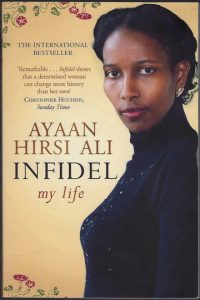
Visit of Ayaan Hirsi to Sydney – June 2007
Personal report from Paul Budde about his meeting with Ayaan Hirsi. Written in 2007 Her full name is Ayaan Hirsi Ali. She was born in Somalia, in Africa. This is a worn-torn country, which already for many decades doesn’t have a proper government, it doesn’t have a banking system nor
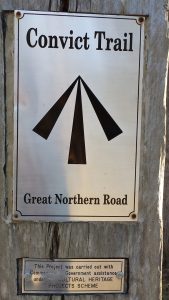
Paul Budde receives Heritage Volunteer Awards – 2002
Convict Trail Chairman and instigator Paul Budde received one of the inaugural Heritage Volunteer Awards – on 28 August 2002 from the Deputy Premier, the Hon Dr Andrew Refshauge, at a special ceremony in the NSW State Library. Paul moved from Oss in the Netherlands to Sydney, Australia in 1983,
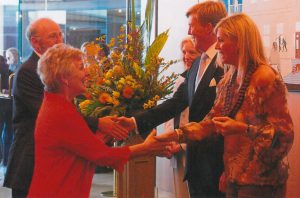
Kroonprinselijk bezoek aan Sydney – 2006
Persoonlijk verslag van Paul Budde mbt zijn deelname aan het bezoek van Kroonprins Willem Alexander en Prinses Maxima aan Australia In mijn geval zijn er weken van voorbereidingen aan voorafgegaan met allerlei telefoontjes van en naar de Nederlandse ambassade maar voor de organisatoren zelf zijn er maanden aan hard werk
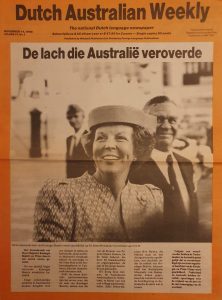
Royal Visit Queen Beatrix and Prince Claus – 1988
Press release Prime Minister Bob Hawke 27 September 1988 (historic) Her Majesty Queen Beatrix and His Royal Highness Prince Claus of the Netherlands will make an official visit to Australia from Monday October 24 to Saturday November 5. It will be the first time a reigning Dutch monarch will have
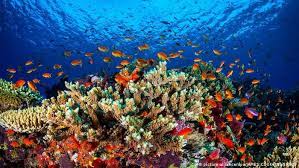
Dutchlink Sydney: Lecture by Assoc. Prof. Chris Roelfsema
The Netherlands Consulate General in Sydney and Dutchlink invite you to attend the Maps Connection People To Help Save Reefs lecture by Associate Professor Chris Roelfsema. This lecture will take place on Wednesday 16 March at the Australian National Maritime Museum (Sea Museum) in Sydney. Reefs are essential for preserving

Mirusia Louwerse – Silver Memories Ambassador
Mirusia is an Australian born Soprano with Dutch heritage. She was born on March 29, 1985 to two Dutch parents in Brisbane, Australia. Her mom is originally from Brabant and her dad from Zeeland. Mirusia’s parents, a boiler-maker and a nurse, moved from The Netherlands in their twenties after being
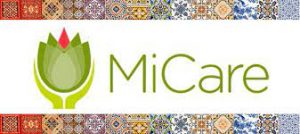
The history of DutchCare and MiCare
MiCare {= Migrant Care) is an amalgamation of DutchCare Ltd (1996), Avondrust Incorporated,(1974) Dutch Australian Community Action Incorporated (1984) and the Holland Australian Retirement Foundation Incorporation(1971).
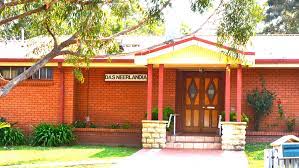
Het Tentenkamp and DAS Neerlandia – Sydney
Many immigrants were housed by the Australian government in old army camps in various outer suburbs of Sydney. However several Dutch people decided to undertake their new journey on their own and settled in Het Tentenkamp – a privately run camping ground in the Sydney suburb of Narrabeen a Northern
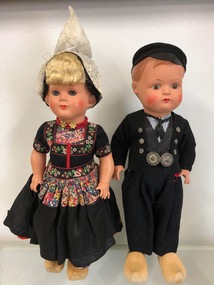
Dutch Australian Heritage Centre – Victoria
The Dutch Australian Heritage Centre (DAHC) was established in 2000 with the aim to collect and display items of recognised significance relating to immigrants who arrived here from the Netherlands and the former Dutch East Indies, with special emphasis on migration in the post WWII period. The DAHC collection consists
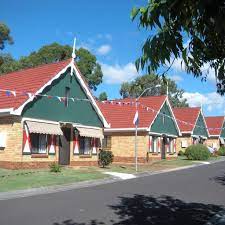
Netherlands Retirement Village Association of Queensland
Consistent with other ethnic groups, a small proportion (6%) of the Dutch elderly is reversing to their language-of-origin. When impaired health, compromised mobility and transport problems are also experienced, it may become difficult or impossible for older people to attend Dutch-specific functions. This may lead to social isolation, in particular
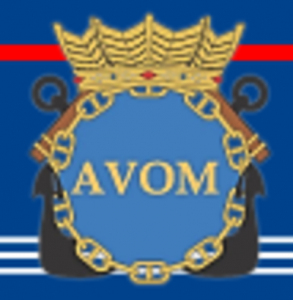
Algemene Vereniging Oud-personeel van de Koninklijke Marine
AVOM’ is known in Australia as the Association of Ex-Royal Dutch Navy personnel. The Australian branch has been established in 1996 and was recognised by the Chief Directorate in the Netherlands in 1997. In 2000 the association has approximately 4000 members, mostly in the Netherlands with a small portion all
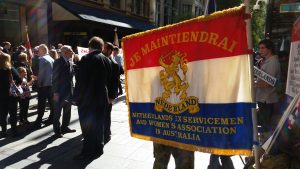
Netherlands Ex-Servicemen and Women’s Association in Australia
NESWA is an association of men and women in Australia who, at an earlier stage in life, served their country in the Dutch Armed Forces, be it Army, Navy or Air Force, korps Mariniers’ (Marines), or the KNIL (Royal Dutch East Indies Army). Also ex-personnel of the Merchant Navy, members
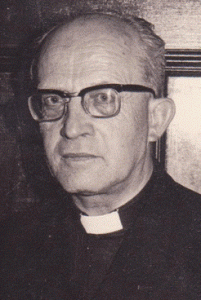
Catholic Dutch Migrant Association (CDMA)
The Catholic Dutch Migrant Association (CDMA) (in Dutch: Katholieke Nederlandse Migranten Organisatie – KNMO) was one of the largest and most influential Dutch migrant organisations in Australia during the post-war period. It was established in 1950 by Frans Maas and Dr Cornelius Wouters .The organisation provided social, cultural, and religious support
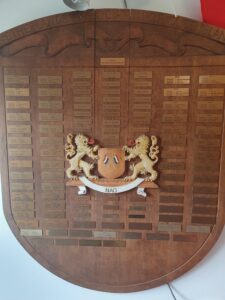
The Federation of Netherlands Organisations in Queensland (history)
Social needs of a large proportion of Dutch migrants were historically met by involvement with Dutch-oriented clubs and organisations, most of which were ‘highly compartmentalised’ [verzuiling] into religious affiliated groups, leading to minimal unity and consensus. To foster co-operation while maintaining Dutch culture, The Federation of Netherlands Organisations in Queensland
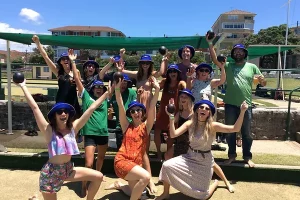
Barefoot Bowling tournament – 13 February Sydney
This year the Dutchlink Sydney tournament will take place once again at Clovelly Bowling Club on Sunday 13 February 2022. The Club is located on the edge of the cliffs at Clovelly, and has absolutely stunning ocean views. While enjoying a cold drink and some snacks, teams will compete to
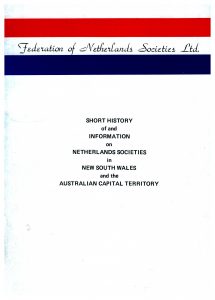
Dutch Association of NSW – Former Federation of Netherlands Societies in NSW
In November 1967 the Federation of Netherland societies was incorporated under the company’s act . The articles of association were signed by the following; None of the inaugural societies are still in existence. The federation’s membership today stands at some 20 organisations. In the early years the Federation organised some
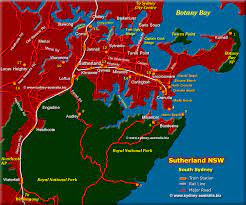
Nederlandse Vereniging in de Sutherland Shire
The following history overview was written by Mijntje Hage in 1985 and was published in a booklet by the Federation of Netherlands Societies. Further updates on the history of D.A.S.I. are published in the newsletters below. This club is very active, despite the fact that, over the years, many of
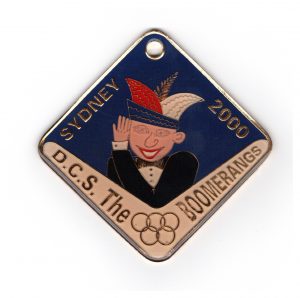
Dutch Carnaval Society the Boomerangs
The following text is from a booklet published by the Federation of Netherlands Societies Ltd. in February 1985. The research for this booklet was done by Mijntje Hage. Nederlandse carnavalsvereniging De Boemerangs. The Boomerangs keep one of the oldest traditions of Europe alive, that is the yearly Festival before Lent, “Carnaval”. A
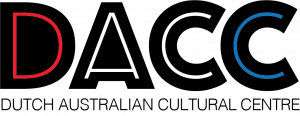
Dutch Australian Cultural Centre
The Centre was established in 1983 by the Federation of Dutch Associations and formed as a company limited by guarantee in 1984. The Centre was formed to establish a central organization with the following two main aims: To preserve the rich history of Dutch contact with, and immigration to, Australia;
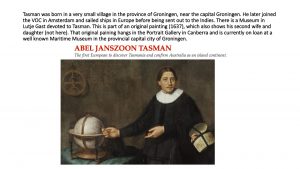
Abel Tasman Explored Australia in 1642 and 1644
In August 1642, VOC despatched Abel Tasman and Franchoijs Visscher on a voyage of which one of the objects was to obtain knowledge of “all the totally unknown provinces of the kingdom of Beach”. This expedition used two small ships, the Heemskerck and the Zeehaen. Starting in Mauritius both ships
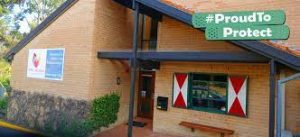
Abel Tasman Village
The first document provide information on the village and its history.
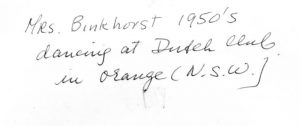
Orange Dutch Society
Prince William of Orange The City of Orange is named of Dutch Prince William of Orange who befriended Sir Thomas Mitchel when both of them served as aides-de-camp to the Duke of Wellington. As the Surveyor General of NSW Mitchell named Orange in honour of the Prince as the landscape remined him
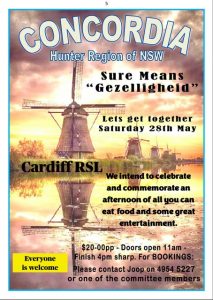
Concordia Dutch-Australian Society Newcastle and Districts – July-August 2025 newsletter added
The following text is from a booklet published by the Federation of Netherlands Societies Ltd. in February 1985. The research for this booklet was done by Mijntje Hage Initially, there were several small Dutch clubs in the various immigrant hostels in and around Newcastle, with Camp Greta being one of the bigger

Dutchlink Golf Day, Sydney – 3 February
Invitation Thursday afternoon, 3 February 2022 Dutchlink Golf Day: Wakehurst Golf Club Last year we unfortunately had to cancel this event. That is why we are extra excited to re-invite you for an afternoon of Golf, and at the same time our first event of 2022. Which will take place
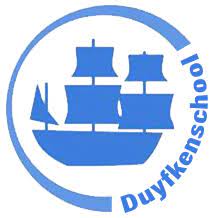
De Duyfkenschool in Brisbane
De Duyfkenschool is in 2008 als Nederlandse stichting opgericht door een aantal mensen die zagen dat er behoefte was aan Nederlandstalig onderwijs in Brisbane. De school is vernoemd naar het schip “De Duyfken”, het eerste Europese schip dat in Australië is aangekomen. De Duyfkenschool heeft geen winstoogmerk. De stichting wordt
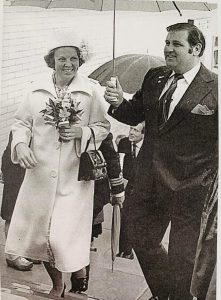
History of the Canberra Dutch Club
The origin from the current club lay with the Wilhelmina Club and the Football Club Hollandia, who shared resources. They split in 1960 and it looks like the club slowly disappeared. Together with a friend I started the current Canberra Dutch club in 1970, It grew exponential and after many
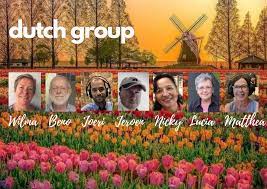
The Dutch Radio Group – Brisbane
The Dutch Radio Group, which started around 1979, is an integral part of Radio Station 4EB (Ethnic Broadcasting). More than 50 groups broadcast programs in their own language. The Dutch group holds its own social functions and also participates in 4EB-events such as: ‘Open Day’ and ‘Multicultural Festivale’. Several Dutch
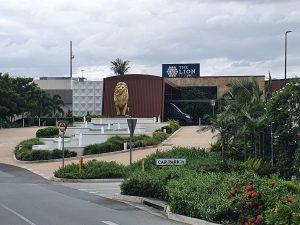
Brisbane Lions/Roar and its Dutch heritage
The origins of the Brisbane Lions can be traced back to the founding of Hollandia-Inala F.C. by Dutch immigrants in 1957. From the beginning they were based on land in the Brisbane suburb of Darra and then moved to Pine Road, Richlands.
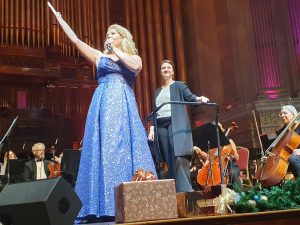
Pictures of Christmas Spectacular with Mirusia Louwerse in Brisbane
Australian-Dutch soprano Mirusia Louwerse performed at the Brisbane City Hall King George Square, Brisbane 19th of December. The event was hosted by baritone, Jason Barry-Smith, the concert featured popular Dutch-Australian Mirusia Louwerse, along with the Queensland Choir and the Brisbane Symphony Orchestra conducted by Stefanie Smith . She has been

Interview with Anthropologist Ad Borsboom
The interview (podcast) below is in in Dutch Profile Professor Ad Borsboom *Anthropologist; Research area: Aboriginal Australia. *Chair Pacific Studies Radboud University Nijmegen. *Teaching experience at all levels in Anthropology. *Publications for both scientific and general audiences (books, chapters in books, articles), editorials. See f.e. ‘De Clan van de Wilde
Dutchlink Golf Day – 3-2-22- Sydney
NEW DATE Thursday 3 February 1pm – Wakehurst Golf ClubCome and play in a beautiful bushland setting on a 9 hole par 72 course. Join Dutchlink for an afternoon of Golf and escape the hustle and bustle of the nearby city. Click here for the event details, and register through the below link. Registration

QUT Award for Dutch-Aboriginal Author Ellen van Neerven
Born in Brisbane in 1990 to Aboriginal and Dutch parents, Ellen van Neerven is a Yugambeh writer with traditional ties to the country between the Logan and Tweed rivers. Ellen won the David Unaipon Award in the 2013 Queensland Literary Awards for Heat and Light. Ellen lives in Brisbane. A

Dutch TV TV Channel 31 Melbourne and Geelong
Dutch TV is a weekly television program on community TV Channel 31 in Melbourne and Geelong (Australia) and Foxtel Aurora. (Australia wide) They have been broadcasting for 6 years. The program is about Dutch people living in Australia and is presented mostly in Dutch with English subtitles so that we
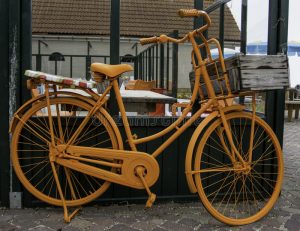
Dutch cycling spectacle in orange hits Brisbane – next event Sunday 6 November 2022
Media Release After similar events in Sydney and Melbourne, an orange wave hit the inner-city bicycle paths in Brisbane on Sunday morning the 21st of November. Some 70 recreational bicycle fans, kids included came along for the ride. People had dressed themselves up as well as their bikes in orange

Prins Willem Alexander Village Brisbane
The Netherlands Retirement Village Association of Qld Inc. The village, located at 62 Collingwood Road, Birkdale, is owned and operated by the above association. There are 40 independent living units (ILUs) and 44 hostel units. The central building has a well-equipped kitchen, dining-room/lounge, offices and recreation-space. The Dutch Community can
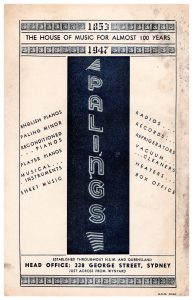
Willem Hendrik Paling early Dutch immigrant 1853
Willem Paling (1 September 1825 – 27 August 1895) was born in Woerden, near Rotterdam. He was an accomplished Dutch violinist and composer. He was the son of music publisher and piano builder Jan Hendrik Paling and Aagje Paling. He moved to Sydney in 1853 followed by his brother Richard
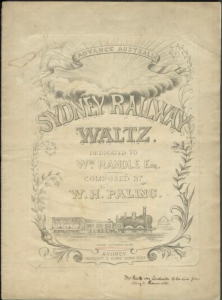
The Sydney Railway Waltz by Willem Paling – 1855
The waltz was composed by Willem H. Paling, who had immigrated to Australia in 1853 from Woerden in the Netherlands. The music was arranged by Robert Evans for the NSW Transport Institute Band. It was first performed at the Railway Ball, 2 October 1855 for the opening of the first
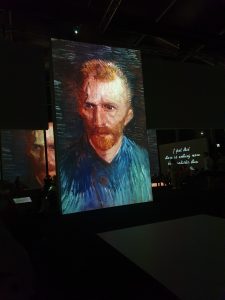
Brisbane hosts van Gogh Alive
Brisbane hosts van Gogh Alive It claims to be the most visited multi-sensory experience in the world. It has dazzled over 7 million visitors across 65 cities worldwide, Van Gogh Alive has now also arrived in Brisbane and it indeed dazzled me. It provides an immersive experience of the life

Righteous Among the Nations
The Righteous Among the Nations, are non-Jews who took great risks to save Jews during the Holocaust. Rescue took many forms and the Righteous came from different nations, religions and walks of life. What they had in common was that they protected their Jewish neighbours at a time when hostility

Marijke Greenway, renowned artist and former world-class trampolinist
Marijke Greenway is an achiever, in different countries, South Africa and Australia, and in quite different fields. Her story is exceptional in many ways. She was born in the Netherlands in 1943, in Halfweg/Zwanenburg, close to Amsterdam, the fourth child of six in the Van den Boogaard family. Two of

Cycling – Dutch Reach promoted in Australia
The Bicycle Network is promoting the so called ‘Dutch Reach’. The organisation is Australia’s biggest bike riding organisation, supported by nearly 50,000 members nationwide What is the ‘Dutch Reach’? Car drivers and their passengers each must use the far hand to open car doors. The then reach across for the
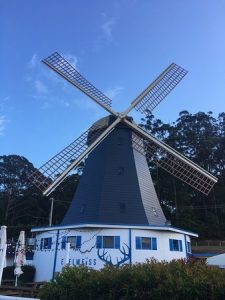
Dutch Windmill – Coffs Harbour
In 1968 Mr Franz De Kever, a Dutch architect working in Melbourne and his wife Rie De Kever purchased the six acre site with a view to build a Motel and authentic Dutch restaurant. After completing ten Motel units, construction on the Windmill Restaurant began in 1972. Originally the most
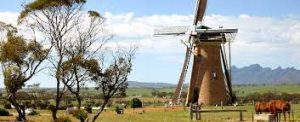
Dutch Windmill The Lilly – Amelup Western Australia
Pleun Hitzert left ‘s-Gravendeel in 1980 with his wife Hennie and his daughters. Here he built a piece of ‘Hoeksche Waard’. Including a mill, for which the one in his birthplace stood model. He based his final design on De Lelie from his native village Puttershoek, but he also used
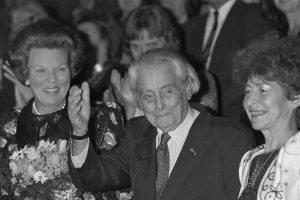
Joris Ivens – Doco Indonesia Calling
Ivens came to Australia in early 1945 as the Netherlands East Indies(NEI) Film Commissioner, to document the re-colonisation effort of the Dutch Indies from Australia. He was employed by the NEI Government Information Service (NIGIS) in Melbourne they had 128 staff—25 of these ‘Indonesians’—(a branch office of three in Sydney),

Dutch-Australian Filmmaker Paul Cox 1940-2016
Born on April 16, 1940 in Venlo, Limburg, Netherlands. His father Wim Cox was the publisher of the Catholic newspaper Nieuwe Venlosche Courant. He was commissioned in 1938 by the chairman of the ‘RK Bond voor Groote Families’ (Catholic Association for Large Families) to make the film Levensgang (‘The Journey
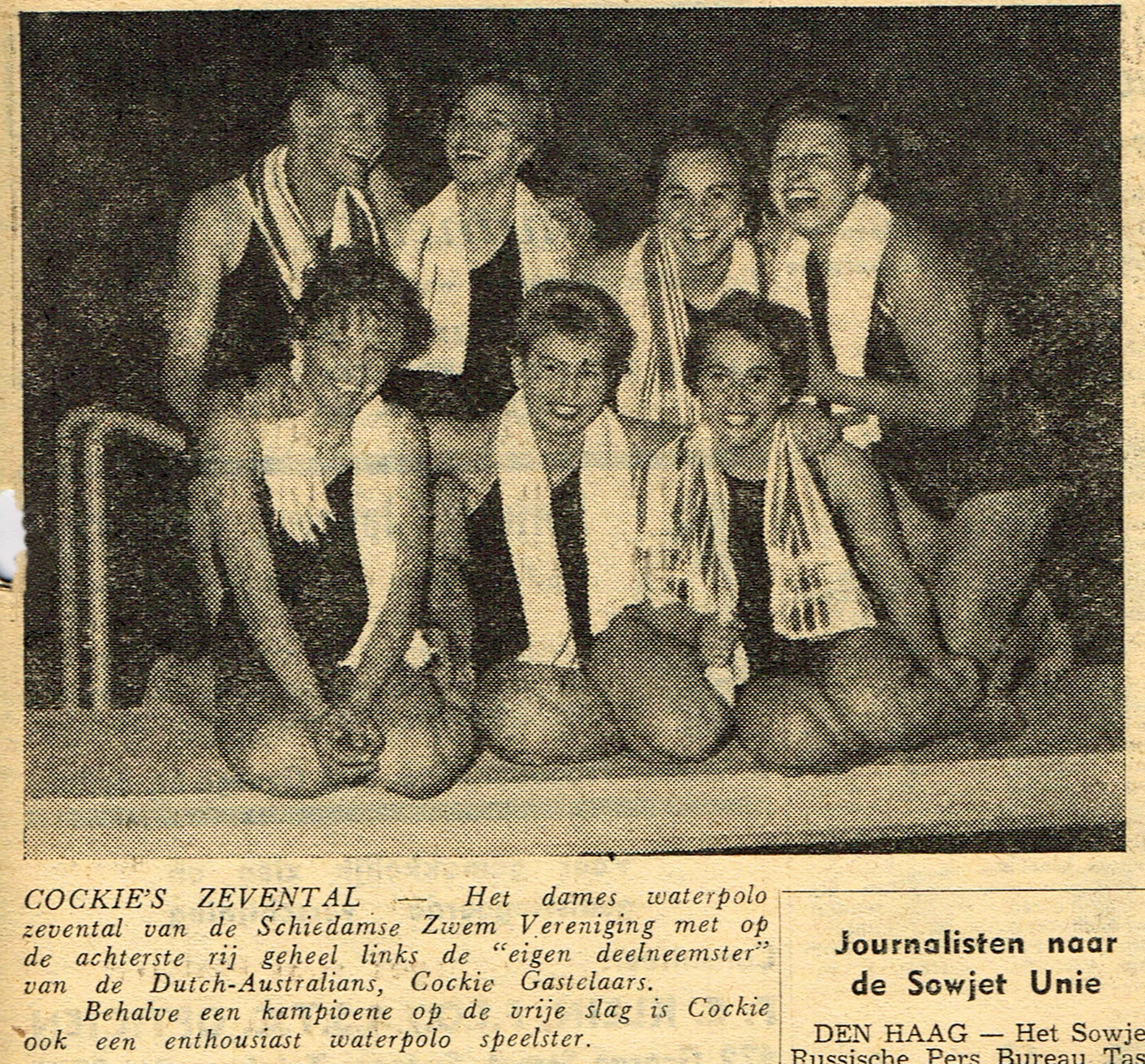
Netherlands boycott of the 1956 Melbourne Olympics
Australia has hosted the Olympic Games twice. The Dutch however participated in only one, the Sydney 2000 Olympics, which were the most successful games for the Dutch until the 2021 Tokyo Olympics. In 1956 the Dutch also had very high hopes for a very successful games, however they withdrew from
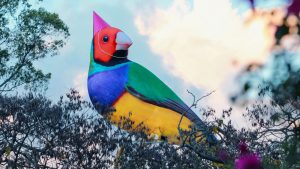
Florentijn Hofman in Brisbane
Florentijn Hofman is a Dutch artist who creates playful urban installations like the Rubber Duck and the HippopoThames, a 2014 installation on the River Thames in London. By popular demand, our glorious Gouldian Finches were back in Brisbane for the annuall Brisbane Festival. Created by internationally renowned artist, Florentijn Hofman,
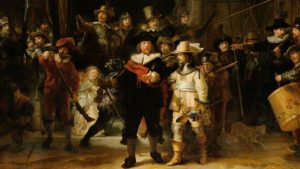
Artificial intelligence and Operation Rembrandt
https://independentaustralia.net/business/business-display/artificial-intelligence-to-better-understand-our-world,15568 … intelligence has been an important tool in gaining a better understanding of our world, it’s imperative that we learn more from it, writes Paul Budde. abstract Another interesting example was revealed a few weeks ago. Operation Night Watch shows what a computer system combining imagination, resources, technical virtuosity and mastery
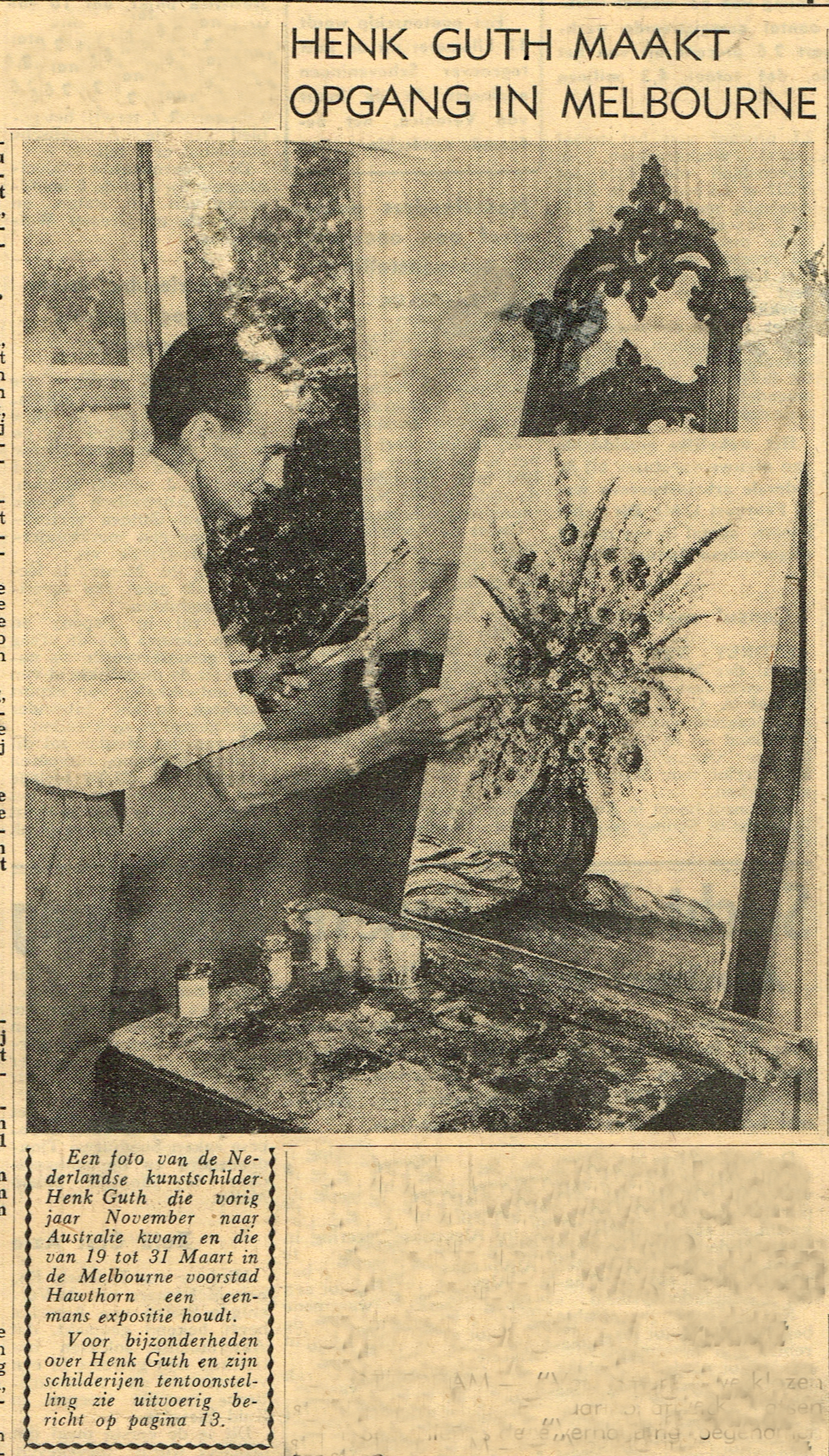
Dutch-Australian Artist Henk Guth (1921-2002)
Henk Guth was born in Arnhem, Netherlands, and studied there at the Academy of Art and Design from 1938 to 1942. After graduating from the Academy, he moved to Amsterdam to pursue his career. In 1960 he emigrated to Melbourne, and in 1966, moved to Alice Springs, where he opened
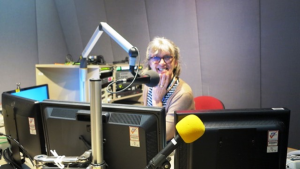
SBS Dutch Radio: Adapting to change by Anneke Boudewijn
This follows: SBS Dutch Radio – Early Days History by Theo ten Brummelaar By Anneke Boudewijn It’s hard to compare SBS Radio today with radio 2EA of the early 1980’s. I joined in 1984, among the first to take Theo’s written language, news and audio test. “Without preparation: Choose a
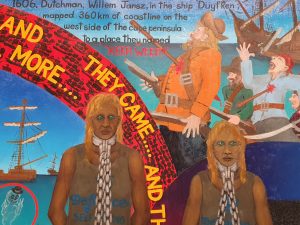
Duyfken attacked by Aboriginals at “Keer Weer”
‘Murriland! #1” 2015-2017 – an oil on canvass painting by Gordon Hookey about the colonialisation of Australia at the HOA Gallery at the Gold Coast. The painting directly speaks to the British cocolonisation of Queensland. ‘Murri’ is a broad term used to encapsulate all Aboriginal people of Queensland. Gordon Hookey’s
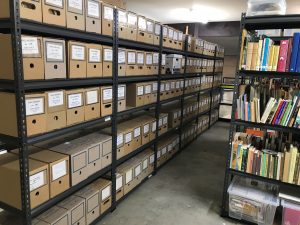
DACC Paper-based ARCHIVES
The Dutch Australian Cultural Centre was founded in 1983 and gives as its aims and objectives in its mission statement, the collection, preservation, promotion and dissemination of Dutch culture and heritage in Australia. The Centre immediately started the collection of material for the archives and Library and now, after almost

Angela van Boxtel exhibits at SWELL on the beach in Currumbin 14-19 September 2021
SWELL Sculpture Festival (SWELL) is a multifaceted arts organisation that connects people, art, and place, based in Currumbin, Gold Coast, Queensland. Since 2003 SWELL has exhibited 873 Sculptures in the main exhibition on Currumbin Beach with a portfolio value worth $15.5M. Angela van Boxtel is a Dutch, Queensland based Artist.
SBS Video – The Bob Color – 2002 Documentary by Dutch SBS TV Production
Bob Color is an Amsterdam based singer/entertainer with a long career since 1987. Nowadays he works every European winter in Thailand This is a YouTube video. After playing the video, press the return button to go back to the DACC Hub.
SBS Video – VOTE BIKE 2015: Dutch Consul-General talks NSW bike infrastructure
Bicycle Network’s NSW manager met this week with Dutch Consul-General Drs Willem Cosijn in Sydney to discuss the growth of bike riding across New South Wales. This is a YouTube video. After playing the video, press the return button to go back to the DACC Hub.
Petronella Wensing AOM, lace-maker and embroiderer
Petronella Jacoba Wensing (née Goderie) was born on January 22, 1924, in Teteringen, the Netherlands, as the fourteenth of seventeen children. In 1948, she married Michael Wensing, a skilled painter and signwriter. Facing post-war challenges in the Netherlands, the couple decided to migrate to Australia. They departed from Rotterdam aboard
SBS Video – Recipe – Yvon Davis’ Dutch apple muffins 26-4-2011
SBS broadcaster Yvon Davis has over the years perfected her Dutch muffins. . Dutch apple cakes and tarts are well known but how about this Dutch variation of a muffin – apple and cinnamon are the most important ingredients for this delicious muffin. For more Dutch recipes visit www.sbs.com.au/dutch or
SBS Video – Hendrik Kolenberg – Renaissance to Goya, moment opnamen #2- 16-9-2013
Van gekken, schommels en stille gezichten… curator Hendrik Kolenberg legt uit aan Anneke Boudewijn wat deze schetsen zo bijzonder maakt en waarom ze ook vandaag nog relevant zijn. This is a YouTube video. After playing the video, press the return button to go back to the DACC Hub.
SBS Video – 2013 in vogelvlucht
Een klein overzicht van SBSDutch in 2013. Stonden we er niet gekleurd op met de 15 meter hoge NL badkuip eend in Darling Harbour? Jaren werd er gewerkt aan de poppen voor de tentoonstelling Echos of the Past. In Melbourne ging de reizende tentoonstelling Anne Frank in premiere. De NL
SBS Video – Scheyville Migration Camp – then and now -Carla Moore explains 10-5-2011
15 May 2011 @ Scheyville 100 years of this location will be celebrated. I was there briefly, as a Dutch-born immigrant. So was Carla Moore, who wrote a play about this and spoke to Anneke Boudewijn, of SBS Radio, Dutch program. While my parents’ experiences in the occupied Netherlands, during
SBS Video – Sacha Polak Sydney Film Festival haar 1ste film Hemel 14-6-2012
“Hemel” Nu te zien in het Sydney Film Festival. Zaterdag 16.6.12 vertelt Sacha over haar film op SBS radio Dutch This is a YouTube video. After playing the video, press the return button to go back to the DACC Hub.
SBS Video – Dirk Hartog lecture at Maritime museum 21-10-2016
A perfect evening for a “Dirk Hartog” lecture at the Maritime Museum in Sydney with Prof. Wendy van Duivenvoorde, Dutch C-G Willem Cosijn and a rooftop projection for all of Sydney to see. This is a YouTube video. After playing the video, press the return button to go back to
SBS Video – DACC AGM , 5-11-2009
At the A.G.M., of the Dutch Australian Cultural Centre, Anneke Boudewijn, of SBS Radio-Dutch program, was guest speaker, along with DACC Hon. Treasurer, Theo ten Brummelaar. Throughout the year our broadcast teams and their correspondents bring you extensive coverage of news, current affairs and sport. We keep you up to
SBS Video – General Meeting Federation of Netherlands Societies NSW 30-6-2012
The general meeting of the Federation of Netherlands Societies was attended SBS Dutch Radio program’s Anneke Boudewijn. This is a YouTube video. After playing the video, press the return button to go back to the DACC Hub.
SBS Video – Hendrik Kolenberg – Renaissance to Goya, moment opnamen #1- 16-9-2013
Ga een paar keer naar de tentoonstelling inplaats van alles in een keer te bekijken adviseert Curator Hendrik Kolenberg. Hij vertelt Anneke Boudewijn in dit tweede deel van de moment opnamen, wat zo bijzonder is aan deze prenten. This is a YouTube video. After playing the video, press the return
SBS Video – Dutch Politician – Boris Dittrich (in Sydney) vertelt over zijn nieuwe boek Moord en Brand
Boris Dittrich, Advocacy Director LGBT rights program Human Rights Watch, talk about his work – visit to Canberra and the plans of Human Rights to establish a Sydney office. This is a YouTube video. After playing the video, press the return button to go back to the DACC Hub.
SBS Video – America Painting a nation: Hans Hofmann/ an overview with Hendrik Kolenberg 21-11-2013
Blue monolith by Hans Hofmann. One of the highlights of the exhibition America Painting a nation, here with Curator Hendrik Kolenberg. This is a YouTube video. After playing the video, press the return button to go back to the DACC Hub.
SBS Video 2 – Sydney cycles into an Orange Spring 19-11-2014
The Dutchies came out in force today to support the Sydney Spring Cycle 2014. The 200 men/women /children strong Orange team cycled an easy 15 km around the Harbour and over the Harbour Bridge . This is a YouTube video. After playing the video, press the return button to go
SBS Video – Interview with Hendrik Kolenberg – Roofscapes exhibition 21-11-2013
Kolenberg was Senior Curator of Australian Prints, Drawings and Watercolours at the Art Gallery of NSW from 1989 to 2012. Roofscapes represents a continuation of a decades-long obsession for Hendrik Kolenberg, the obsession of moving about, looking, and drawing/painting that which he sees. It is an obsession that began in
SBS Video – Recipe – Yvonne’s Dutch sausage rolls – 27-4-2011
Dutch broadcaster Yvonne Davis is well-known for the tasty Dutch sausage rolls she brings into the office. She sat down with her Sydney colleague to tell her how to make them. Here is short “Howto” video to show the steps she takes. This is a YouTube video. After playing the
SBS Video – Recipe – Dutch shorthread bikkies 23-12-10
For an easy recipe to make Geert’s Dutch shortbread bikkies go to: www.sbs.com.au/dutch This is a YouTube video. After playing the video, press the return button to go back to the DACC Hub.
SBS Video 1 – Sydney cycles into an Orange Spring 19-11-2014
The Sydney Spring Cycle attracted 20.000 cyclists this year.The 180-strong Orange team, supported by Dutch Consul-General Willem Cosijn and his wife was promised a Dutch breakfast of poffertjes and oliebollen at the finish. Surprise! They all made it. This is a YouTube video. After playing the video, press the return
SBS Video – Bangarra Holland Dance Festival rehearsal 28-1-2014
Australia’s leading Indigenous performing arts company Bangarra Dance Theatre will perform in the Netherlands for the very first time in 2014. Bangarra will perform Kinship, choreographed by Artistic Director Stephen Page at Holland Dance Festival on February 14 & 15 in The Hague. In this short video we see an
SBS Video – Andre Rieu bij SBS radio Dutch 10-10- 2013
This week the Dutch program and Face book SBS radio Dutch were dominated by a visit to the studio of Dutch mega star Andre Rieu. He came and conquered the studio with his own cameramen, publicity agents and security team. He stayed for 20 minutes to chat about his upcoming
SBS Video – Dutch folkdance teacher Andre van de Plas in Canberra 25-7-2016
Dutch folkdancing teacher Andre van de Plas travels once a year to Australia to teach in all the major cities. In Canberra the class was named in honour of 400 years Dirk Hartog. This is a YouTube video. After playing the video, press the return button to go back to
SBS Video – Dutch Australian Heritage Database meeting-Sydney 31-3-2011
The Dutch Embassy in Canberra sponsors the Australian Dutch Heritage Database Project – The aim is for all organisations and people with Dutch -Australian projects to participate. Want to know more about the project? This is a YouTube video. After playing the video, press the return button to go back
Dutch Masterpieces at the Brisbane Gallery of Modern Art
Spanning 500 years, ‘European Masterpieces from The Metropolitan Museum of Art, New York’ offered a journey from the 1420s and emerging Renaissance to conclude at the height of early twentieth century post-impressionism. Visitors experienced works by painters such as Rembrandt, Rubens, Turner, Degas, Renoir, Cézanne, and Monet, direct from The
Golf was invented in the Netherlands
I came across a book review in the ‘Spectator’. The book was called: ‘Games People Played’, A Global History of Sport’. The illustration referred to and I quote: ‘And golf has existed for millennia; it was not invented by a Scottish shepherd, and probably reached Scotland from the Netherlands’. The
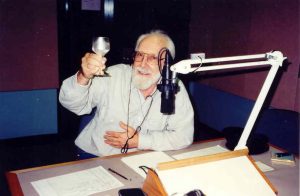
SBS Dutch Radio – Early Days History by Theo ten Brummelaar (Radio 2EA)
My recollections about the history of the Dutch language programs on SBS-Radio. Theo ten Brummelaar. As shown in the title these are my personal recollections. It is therefore possible that the exact historical facts vary in minor detail with my recollections. After all I left SBS-Radio in 1993 and I

The Holy Spirit Missionary Sisters in Brisbane
In the late 1800’s, there was growing interest among Catholic women to become more involved in overseas missionary work. This was linked to the rapid colonisation occurring among European countries. In many places, woman and children in particular had no status, and thus no opportunities to develop the quality of
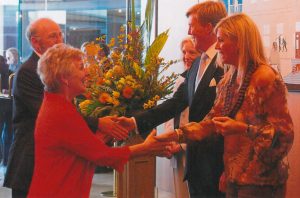
Dutch Royal visit to Australia – 2006
In late October 2006, Dutch Crown Prince Willem Alexander of Orange and his wife, Her Royal Highness Princess Maxima, paid an official visit to Australia, to bring to a close the events commemorating the of 400-year-old friendship between the two countries. With my Dutch heritage and my interest in the
